New Mexico Trip - VIP Tour of the NRAO's (National Radio Astronomy Observatory's) VLA (Very Large Array)
Los Alamos and Socorro, Mew Mexico: May 7, 2015
Good morning! Our hotel room had a nice view of Los Alamos National Laboratory.
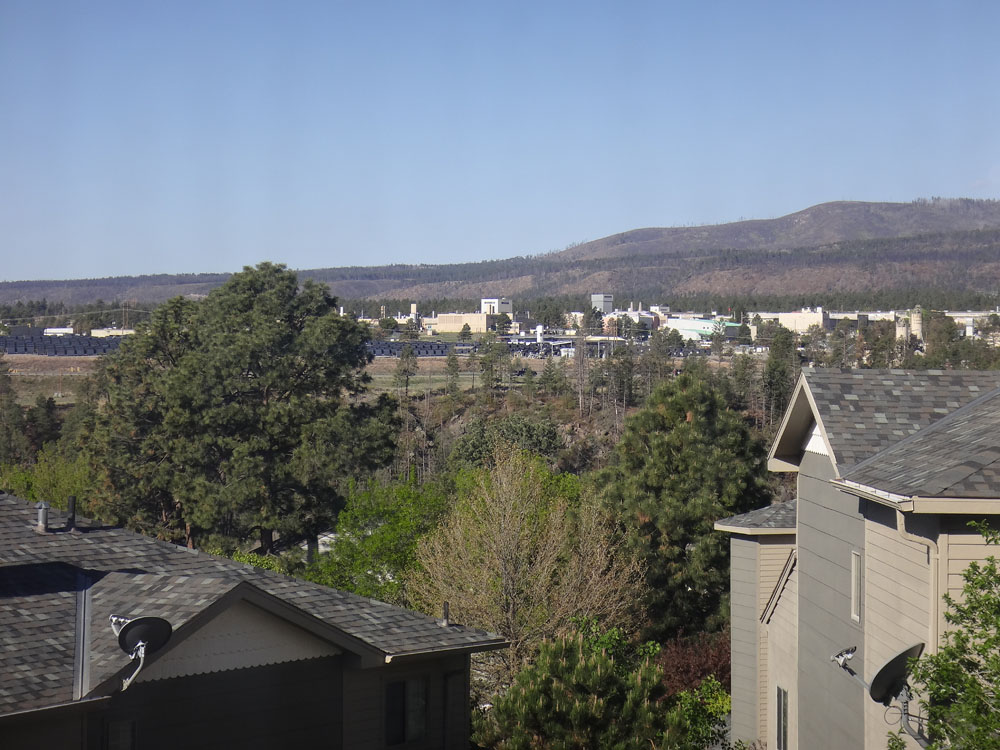
We drove down to the VLA for our tour with Chris Langley, the Engineering Services Division Head. I was very excited! In 1995,
I had traveled to New Mexico with the Colorado School of Mines' chapter of the Society of Physics students. We visited Los Alamos, stayed overnight,
and then drove around New Mexico the next day before heading back to Colorado that night. We visited Sandia, and an air museum. On our way to see a specific
spot of the Rio Grande from a movie Derek had seen, we passed by the VLA. I love large hardware! I wanted to stop but was outvoted by the other people in the
van, because it cost money and we were running out of time. And so, my desire to see the VLA waited... and waited... and then my patience was rewarded!
Approaching the VLA - you can see the 43-meter antennas spread out in the "B" configuration. There are 4 configurations - which will be detailed in a poster later.
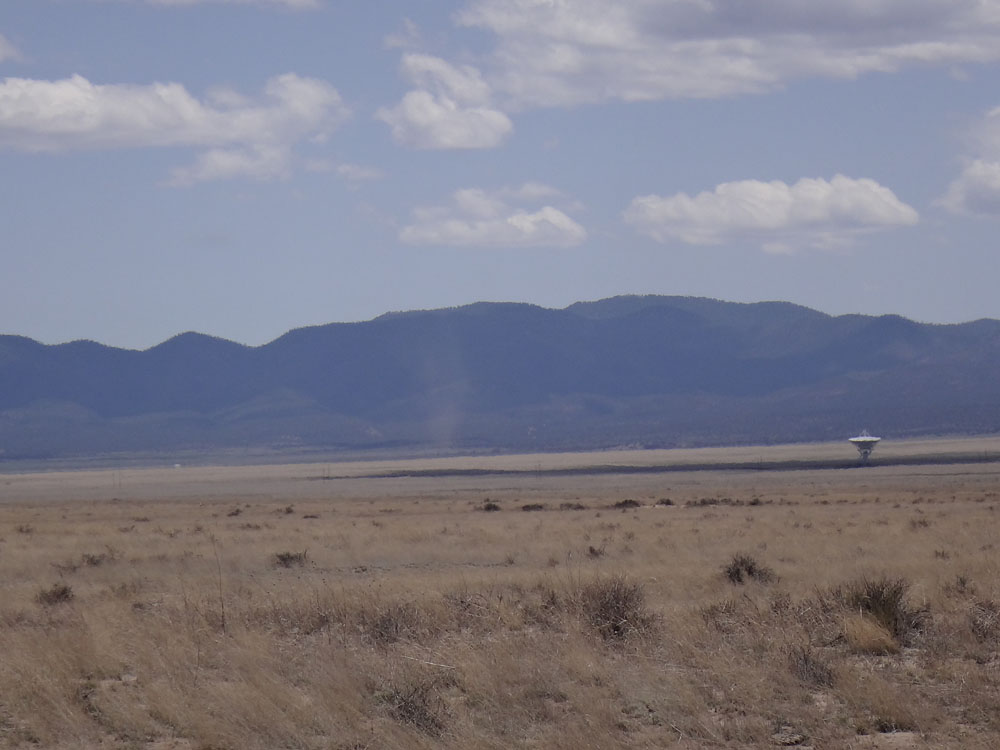

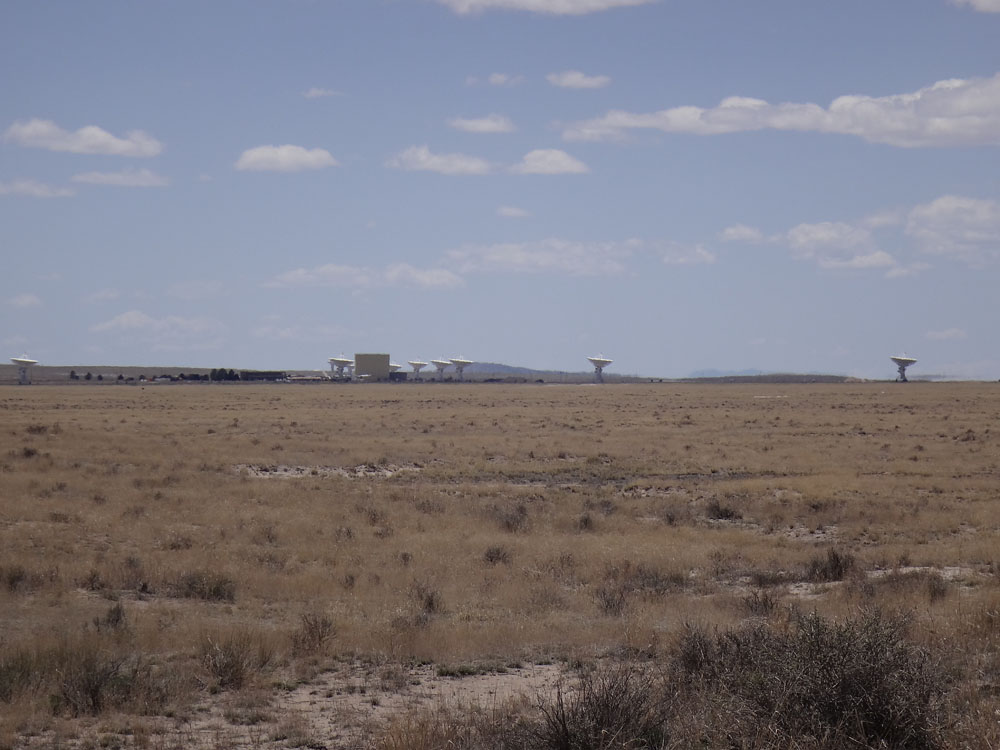
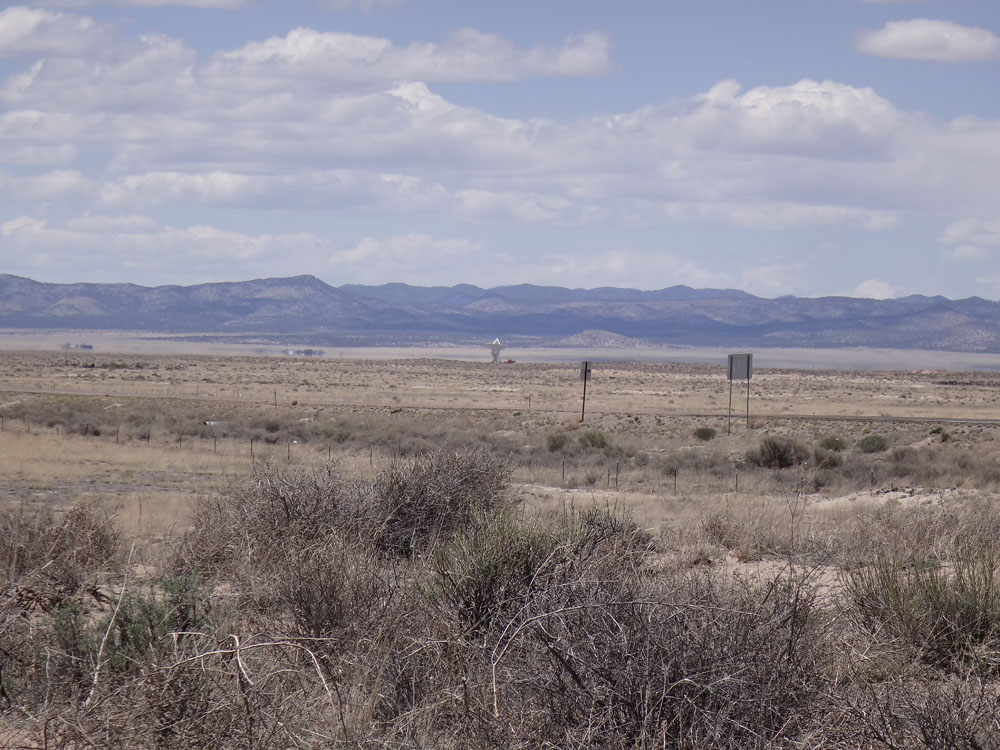

No cell phones!
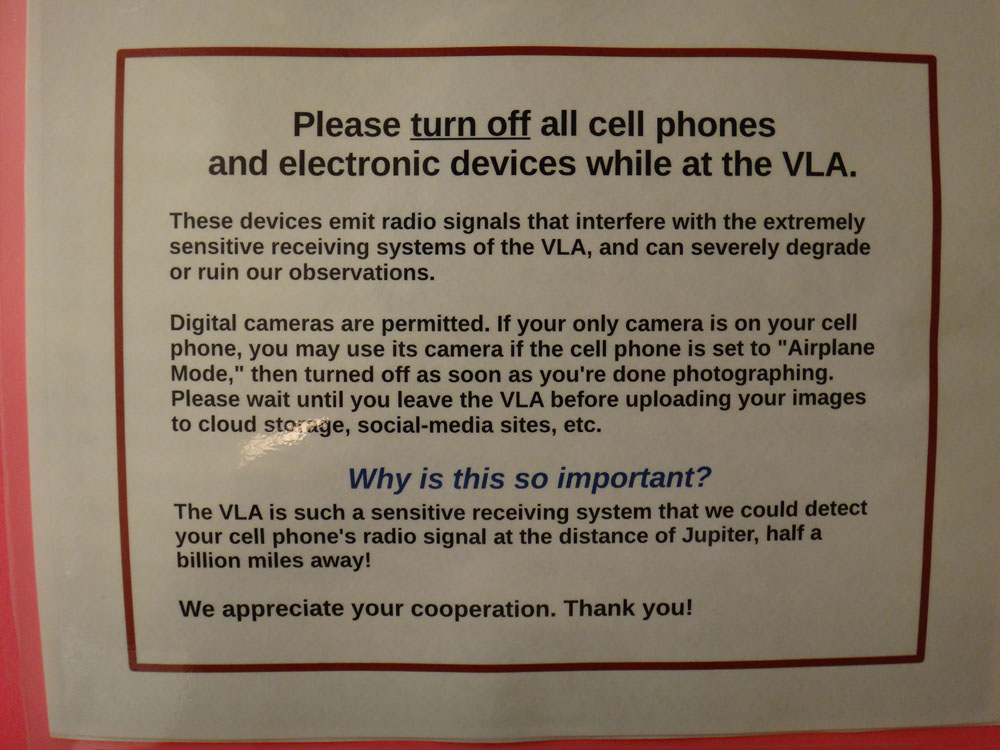
They have a very nice visitor's center:
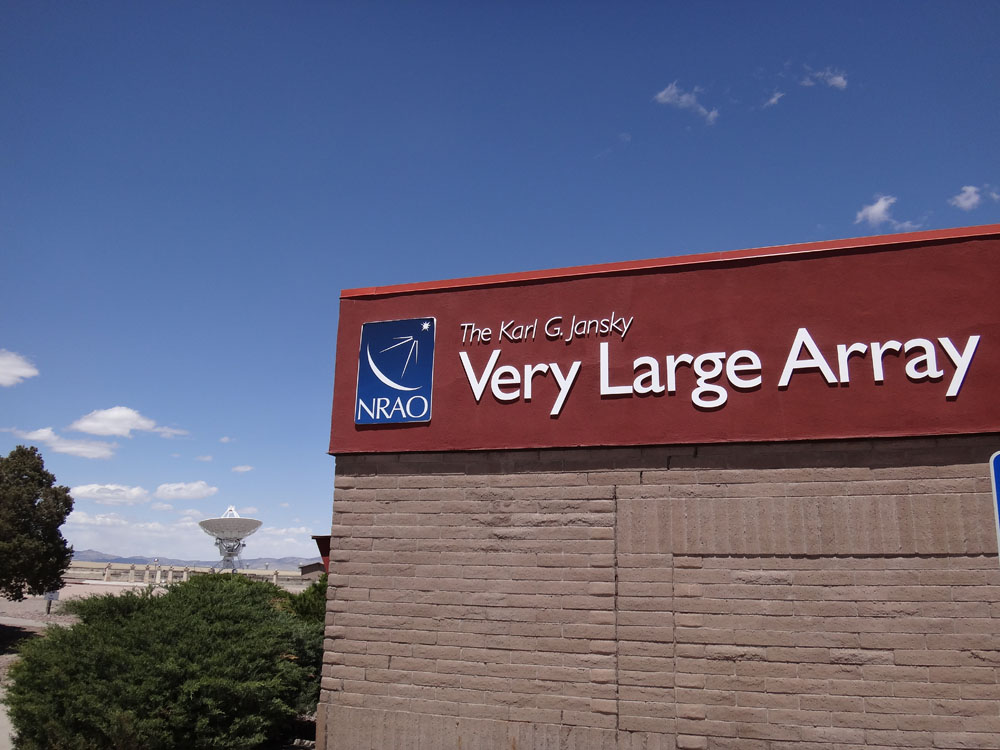
The Visitor Center has an award-winning video narrated by Jodie Foster (which she did for free, because she feels a very strong connection to the
site after filming Contact there) - it is also available online here:
Beyond The Visible: The Story of the Very Large Array
"Created in 2013 as the new interpretive film for the National Radio Astronomy Observatory's Karl G. Jansky Very Large Array (VLA) public Visitor
Center, this 24-minute production explores the synergies of technology and human curiosity that power the world's most productive radio telescope.
Narrated by Academy Award-winning actress Jodie Foster (star of the film "Contact," which was based on the novel by Carl Sagan and filmed at the VLA),
the program depicts many of the people whose diverse efforts enable the VLA to be a cutting-edge resource for astronomers and humanity worldwide.
Winner of a 2014 Cine Golden Eagle Award, 2014 Interpretive Media Award from the National Association for Interpretation, and a 2014 Bronze Telly Award."
Here's the super-computer that does it all! This computer helps process the data in order to provide consolidated products to users. Because the arrays
function as an interferometer, the data signals from each need to be adjusted for the length of the signal path.
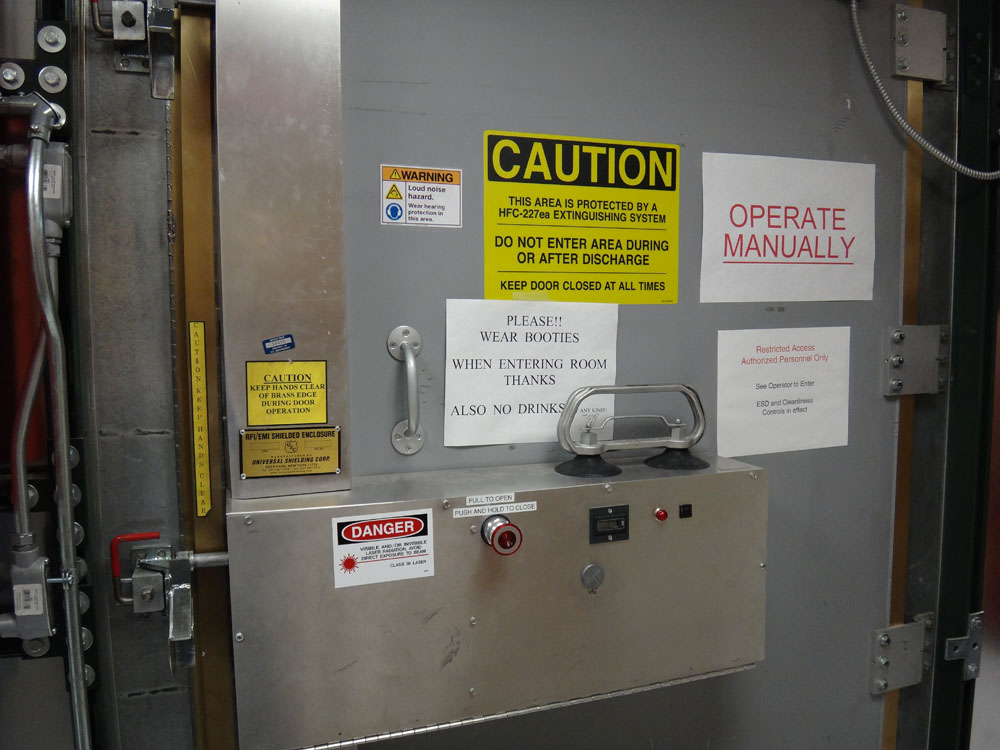

After seeing the operations center and the super computer, we took a trip down memory lane. This is a wire-wrapped board from the old system.
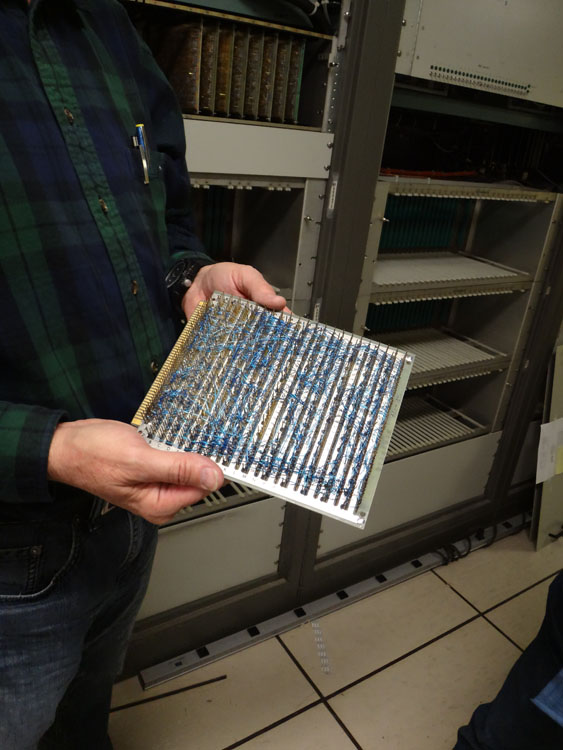
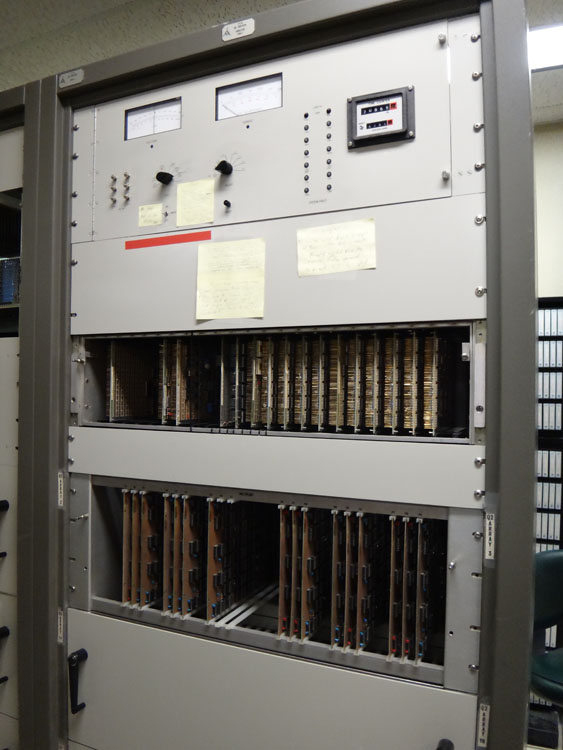
Near the operations center, they have some informational posters. This one describes the antenna itself:
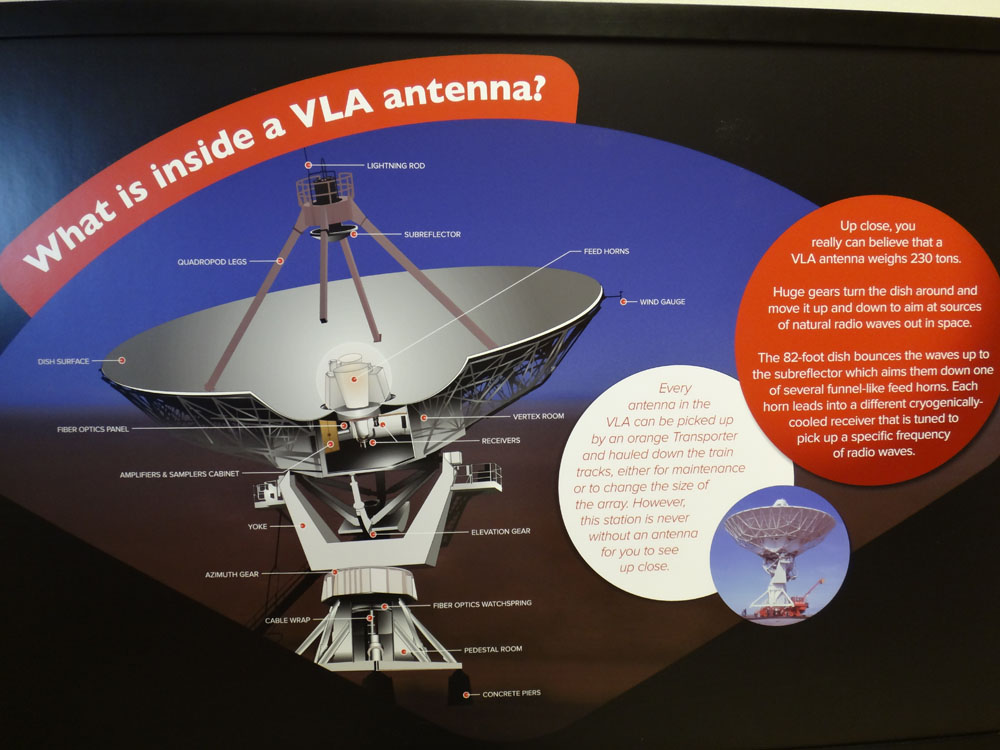
And this one described the configurations. As shown along the bottom, each of the 4 configurations can see something different in space due to their
different sensitivity and resolution. By taking images of an object in each of the configurations, then combining the images, scientists get a full picture of
the object's detail and characteristics.
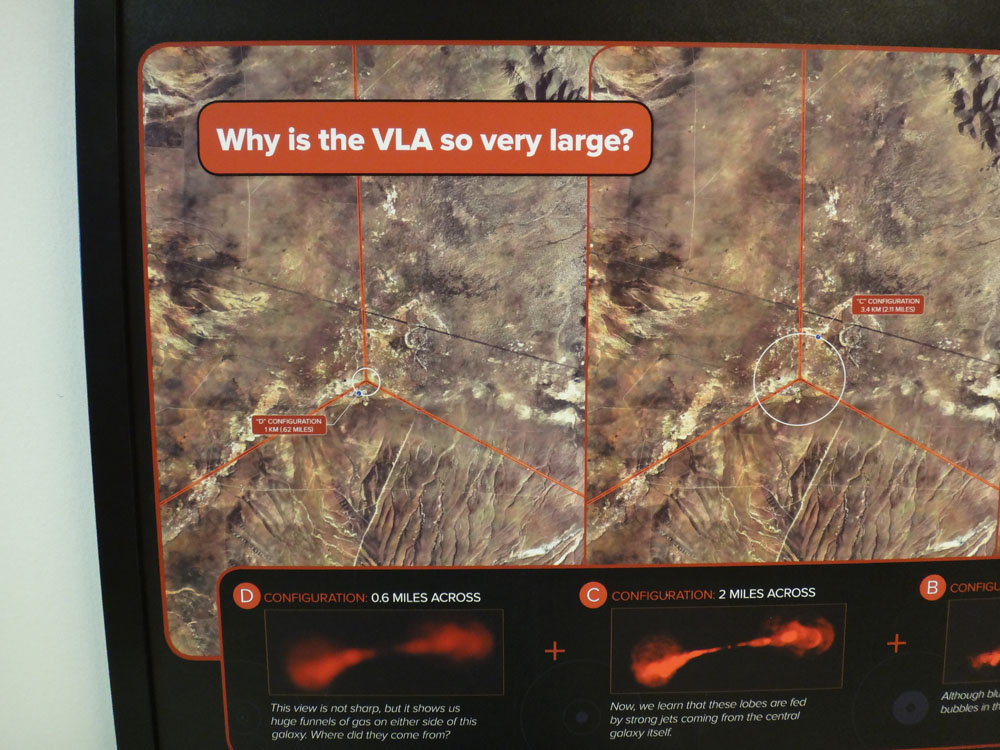
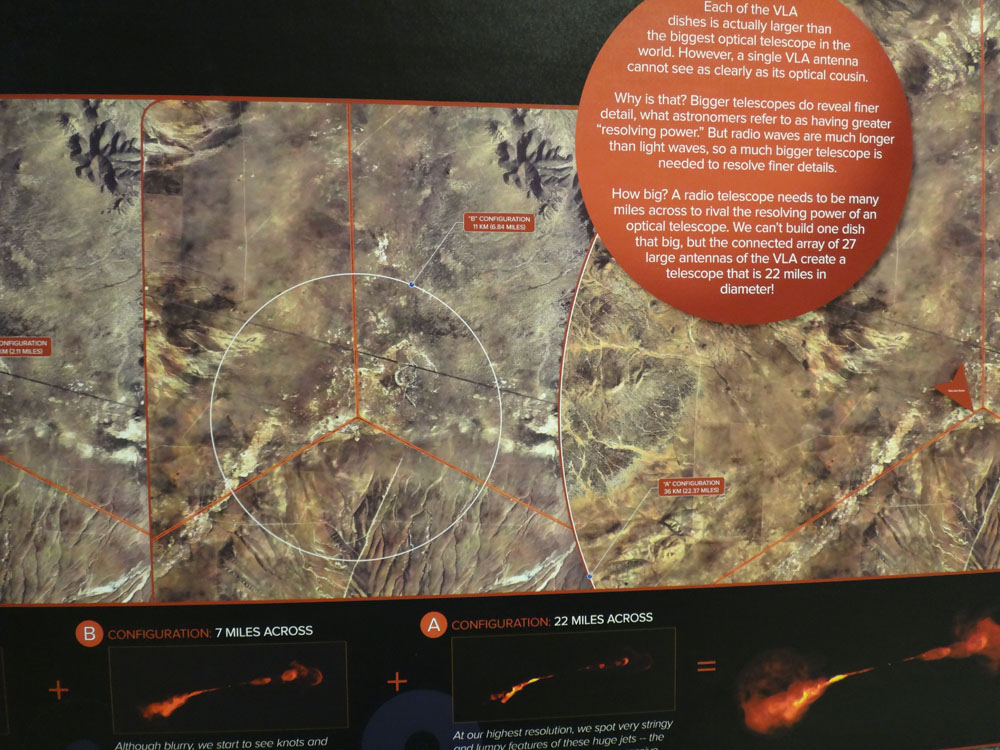
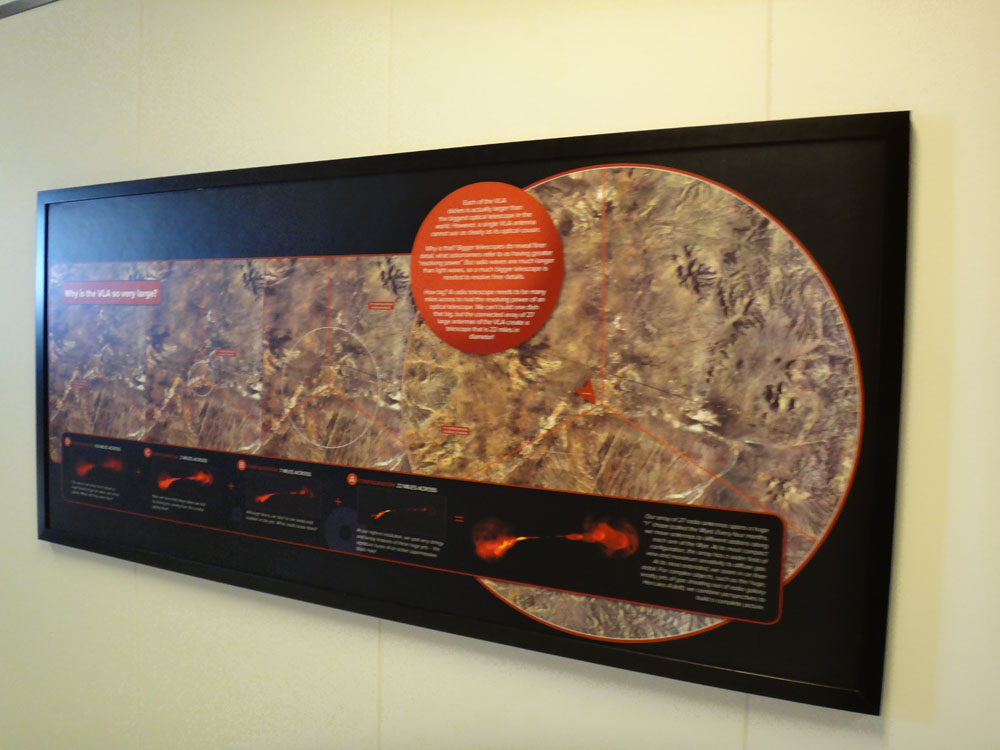
View from the balcony near the operations center:
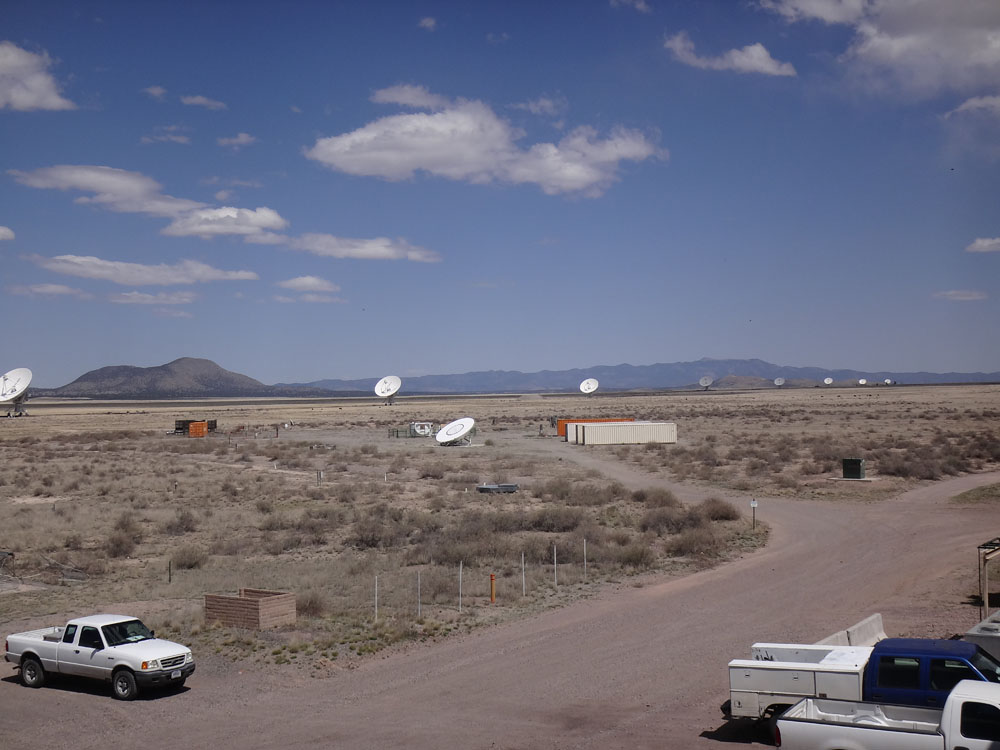

We walked out to see one of the antennas. Since they were getting ready to park them all in order to move them into a different configuration,
the operator agreed to turn the dish toward us so we could better see inside.
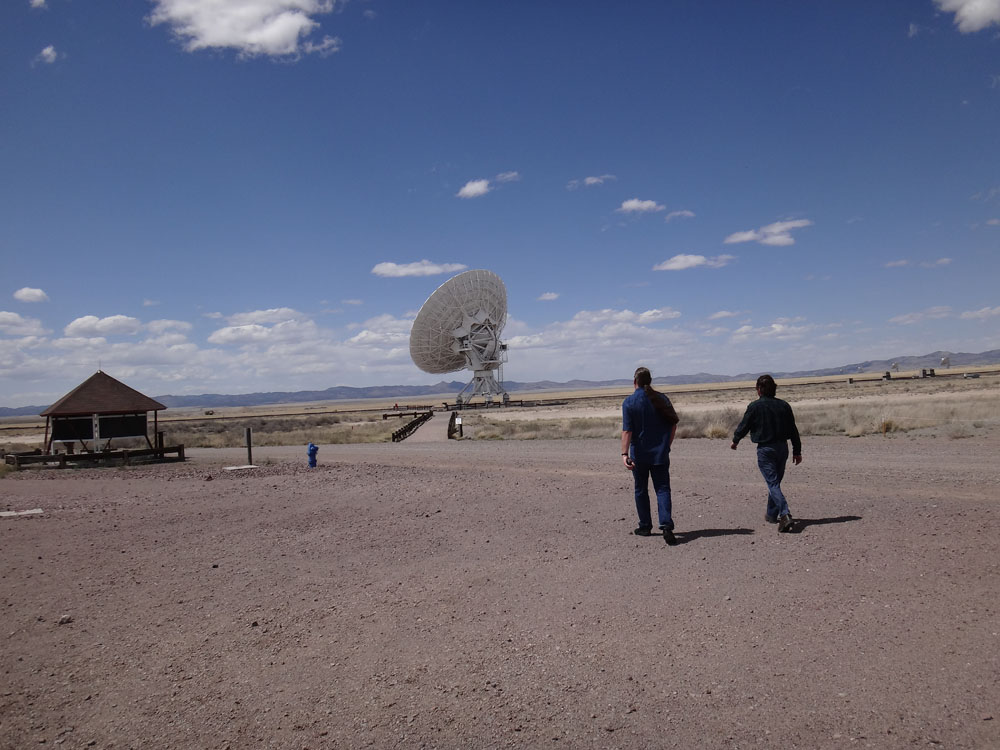
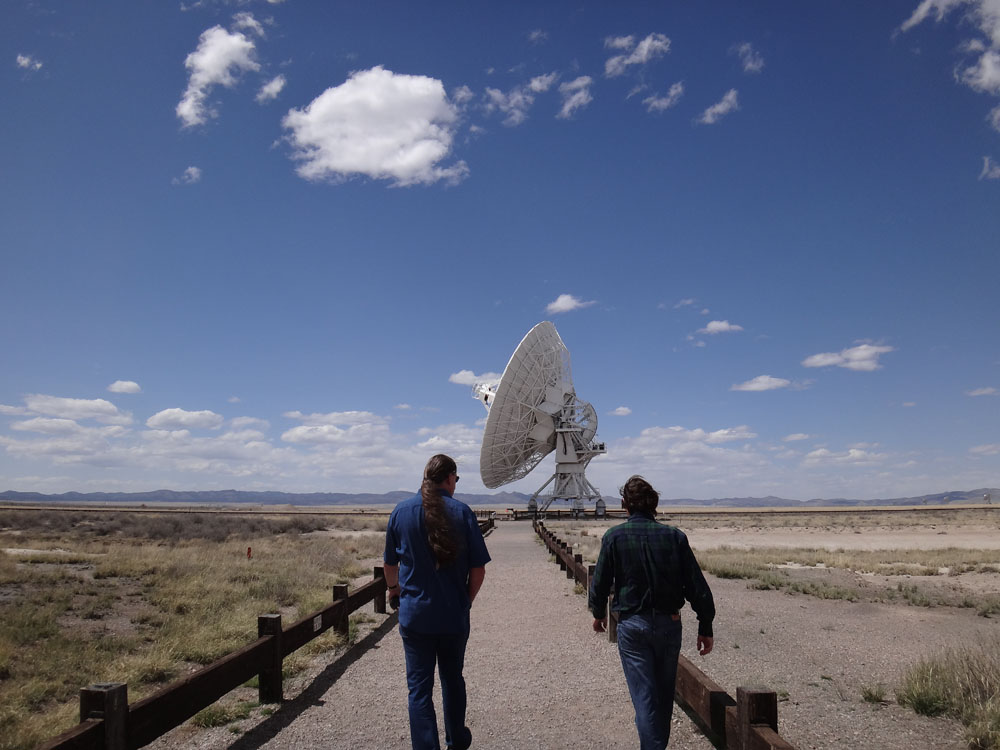
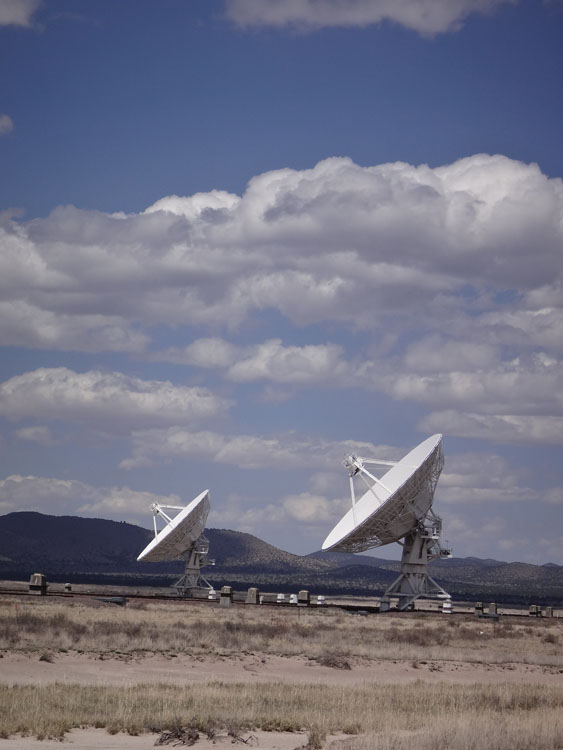
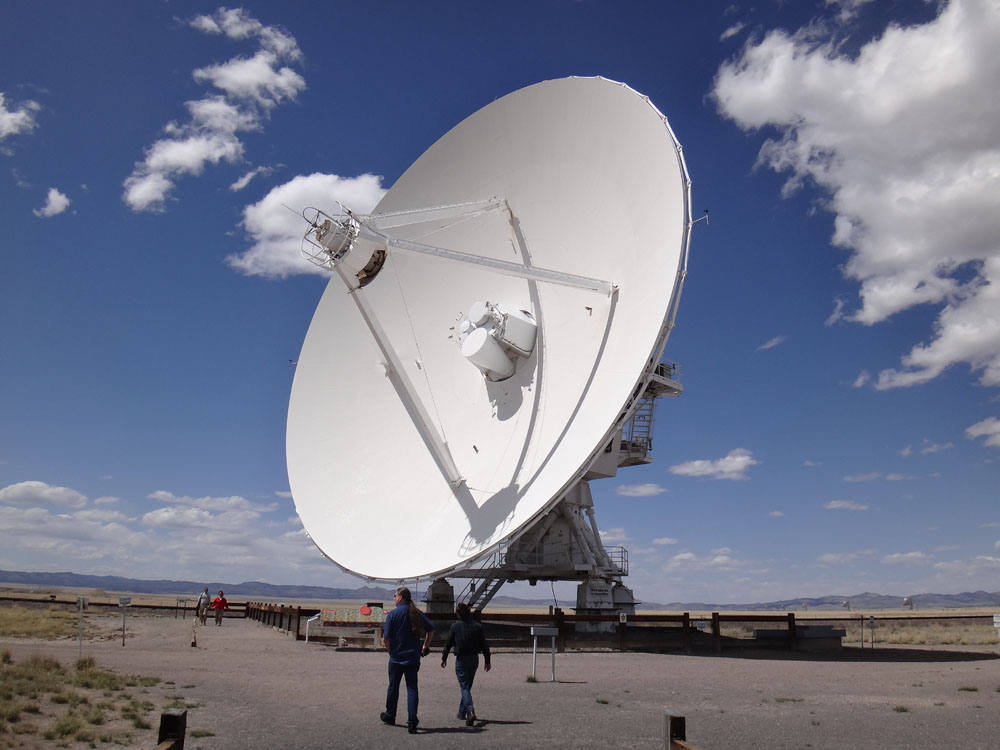
MOVIE!
The antenna turns toward us. AVI file, 6.5 Mb
Inside the antenna, you can see multiple horns. The collector (above them) is shaped such that it can steer radio-frequency waves into
one of the horns. Each horn can handle a different wavelength range. The signals are funneled into to them sequentially, or some may be skipped
if that scientist did not want that wavelength range in their data collection. The larger the horn, the lower the frequencies it collects.

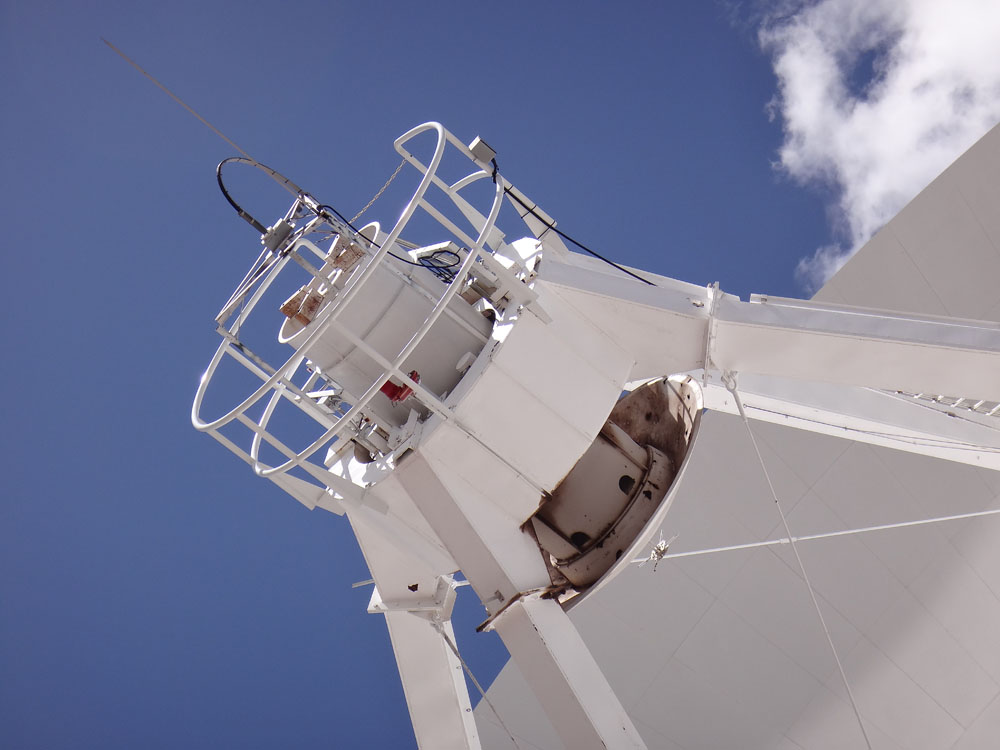
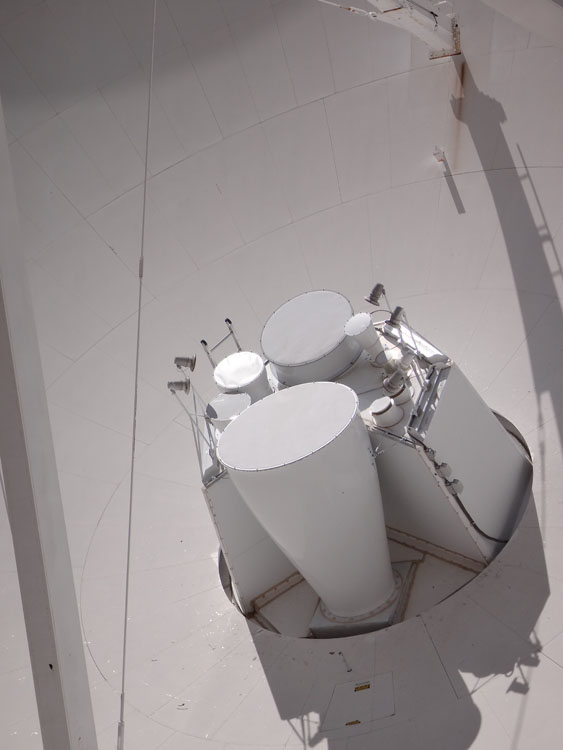
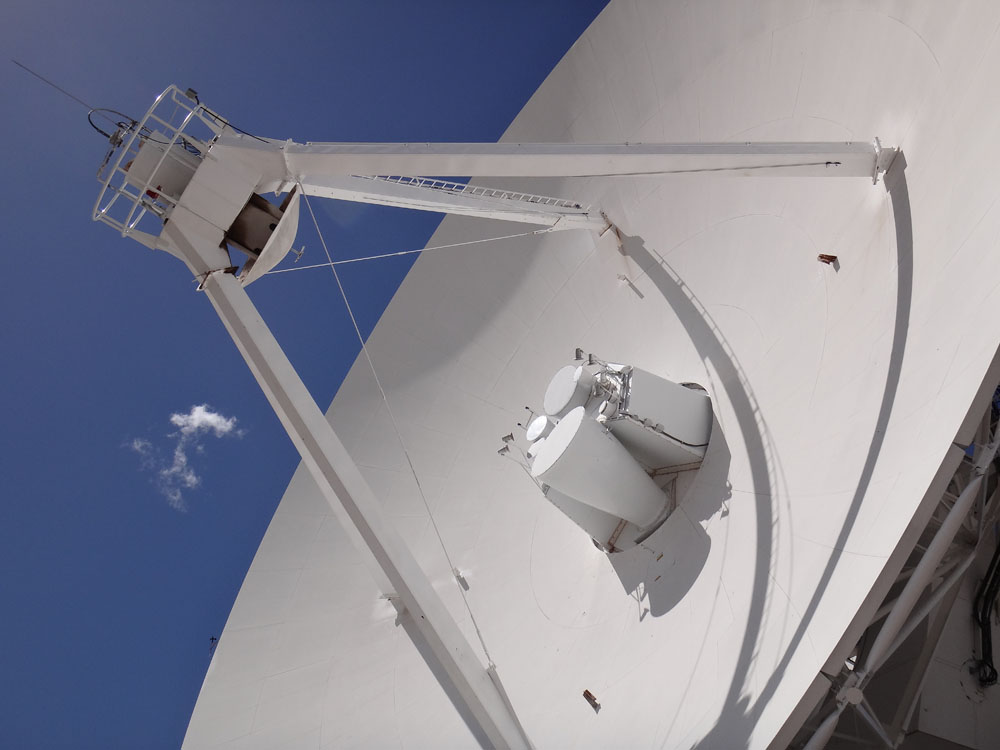
View of the other antennas from the one we are near.
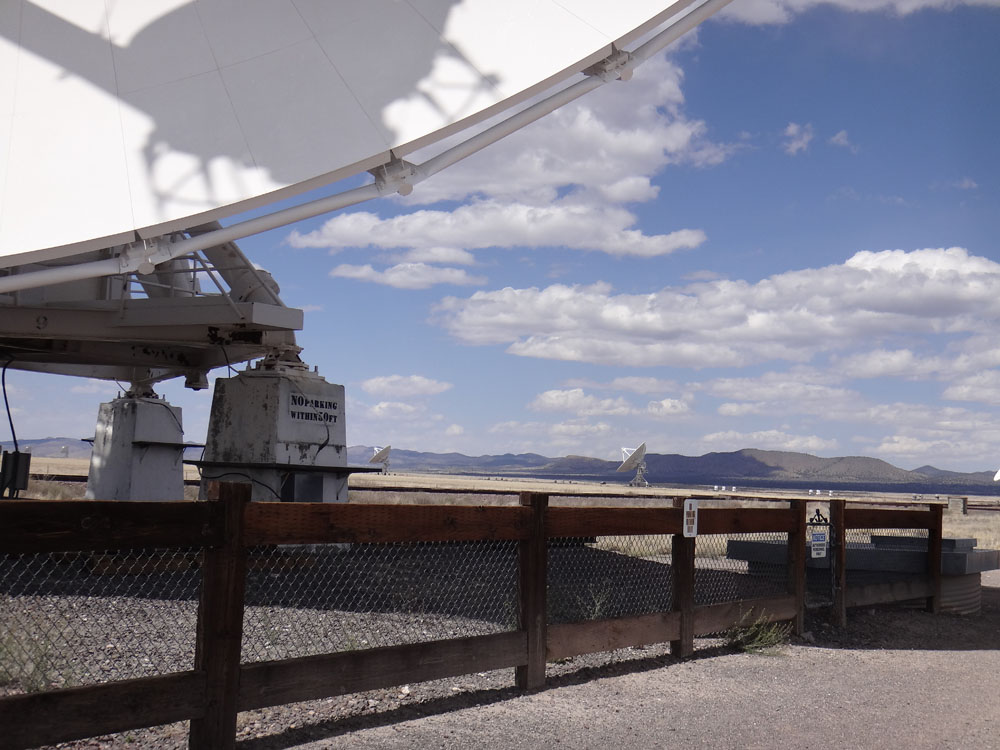
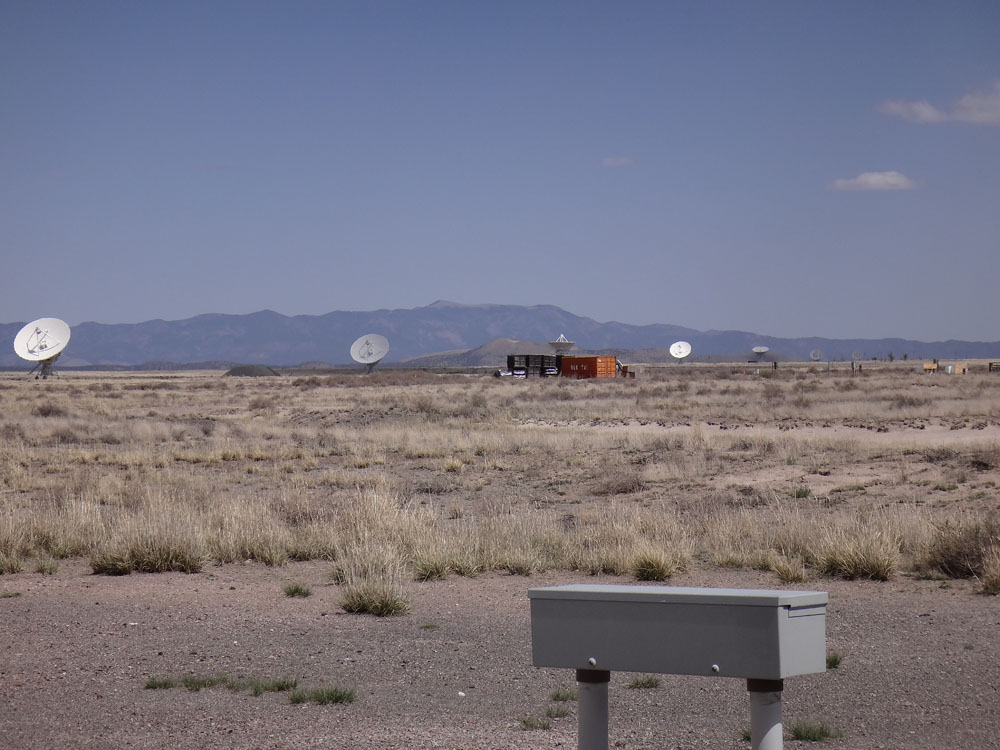
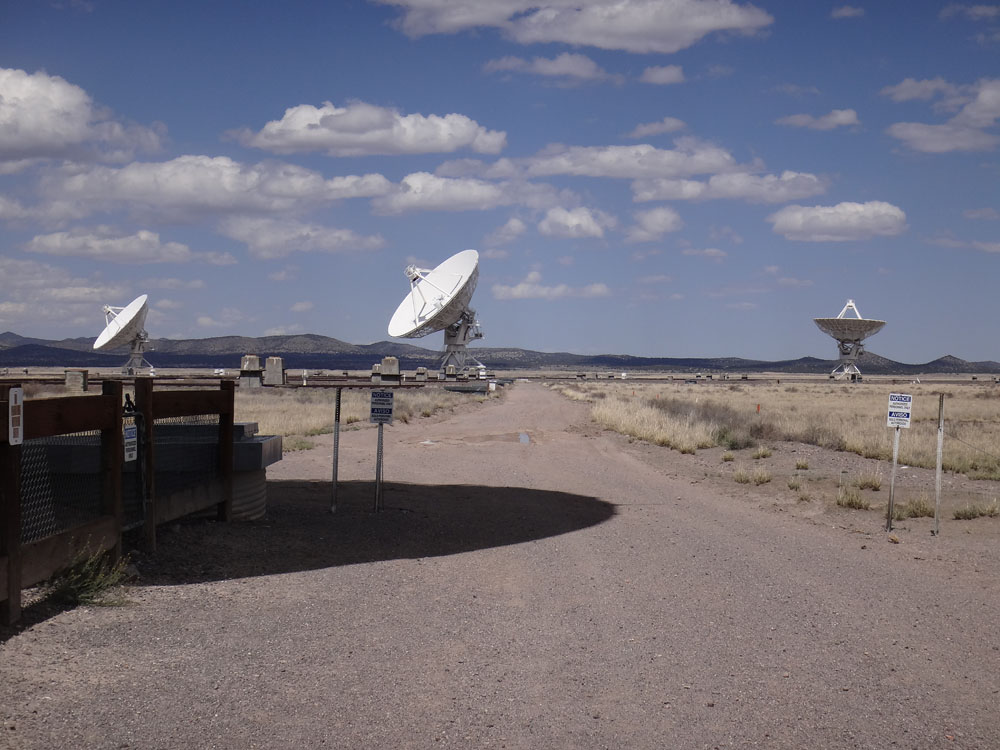
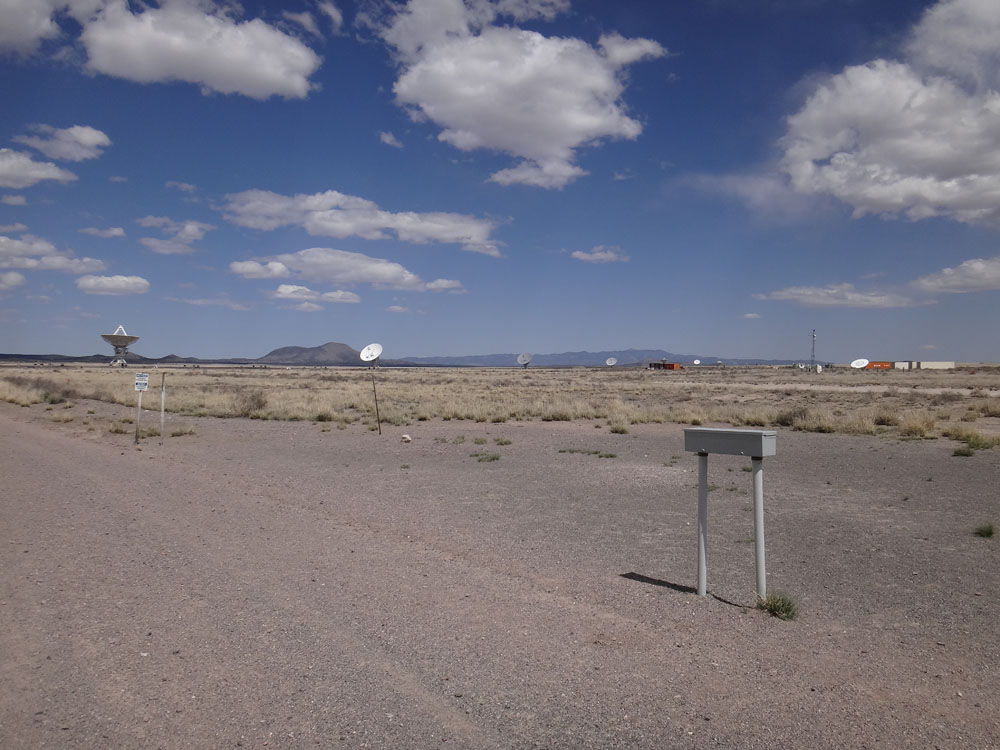
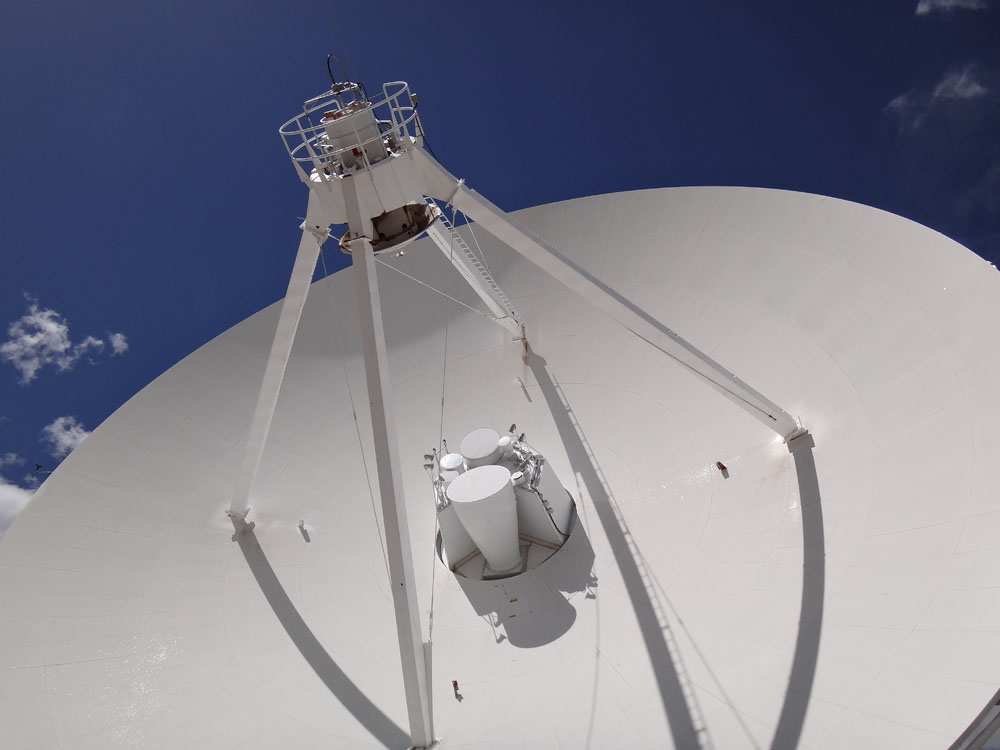
The things that look like lights above the horns are heaters for winter-time data collection (need to keep snow and ice off the horns):
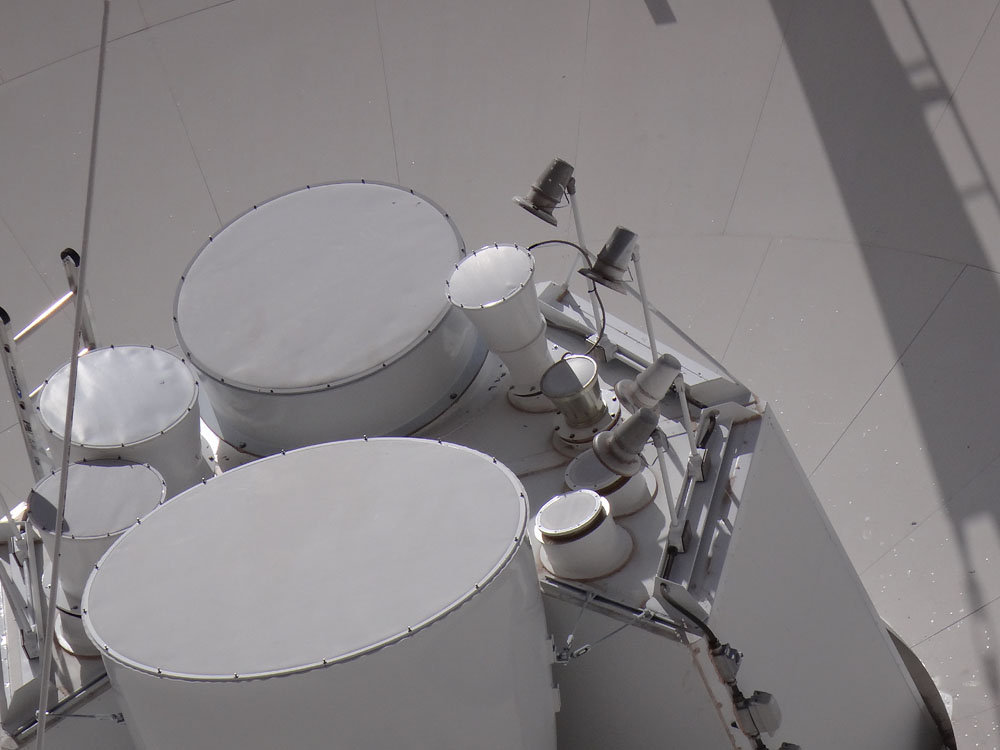
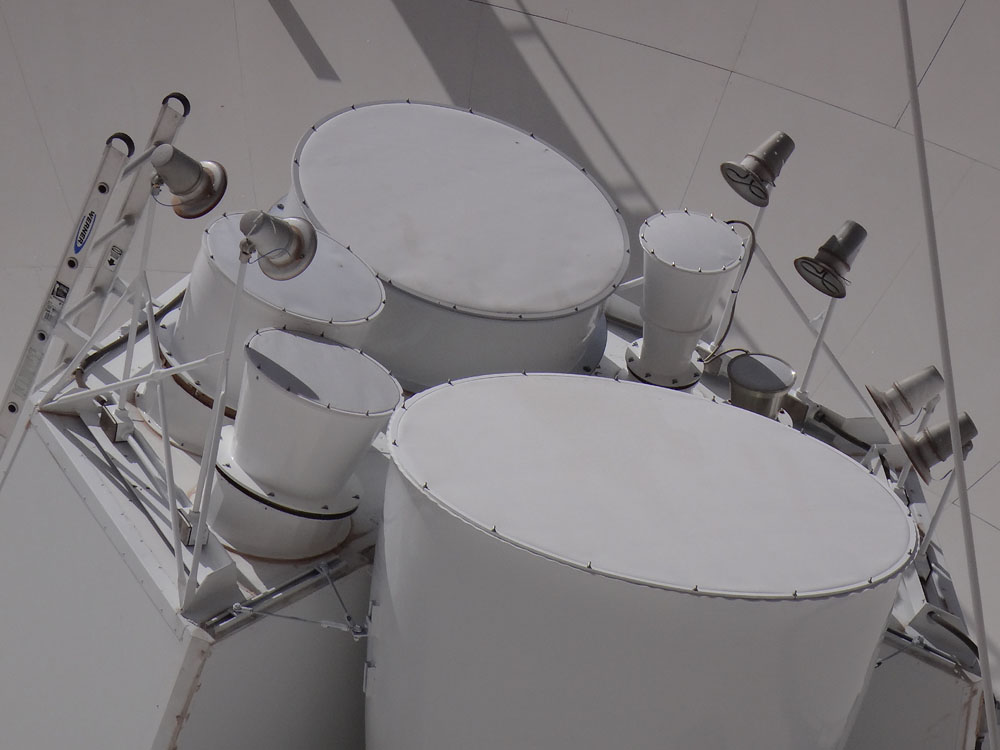
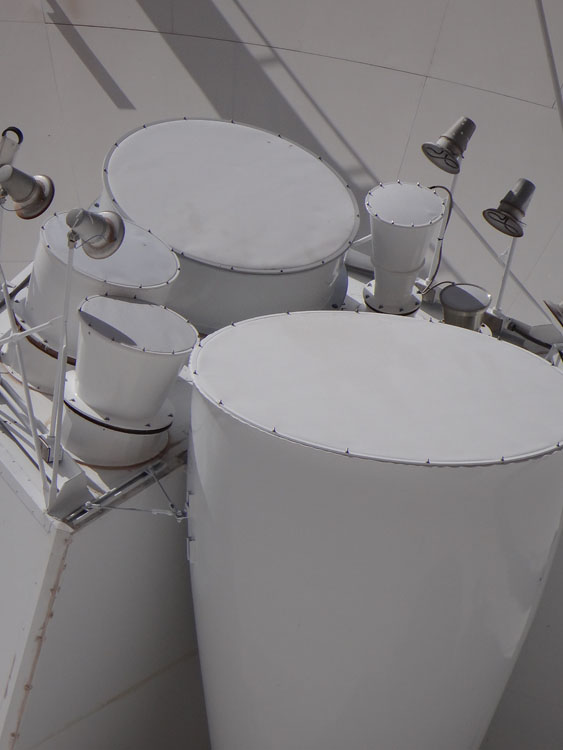
Each antenna has tracks, so it can be moved into the other configurations.
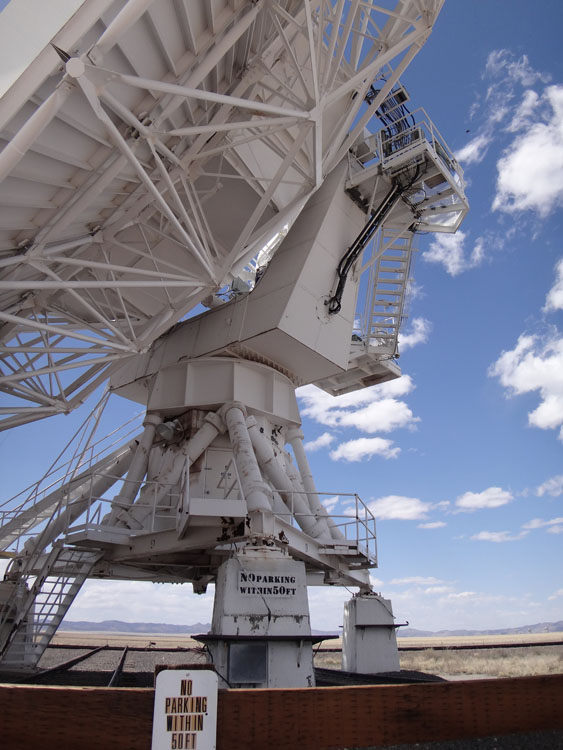
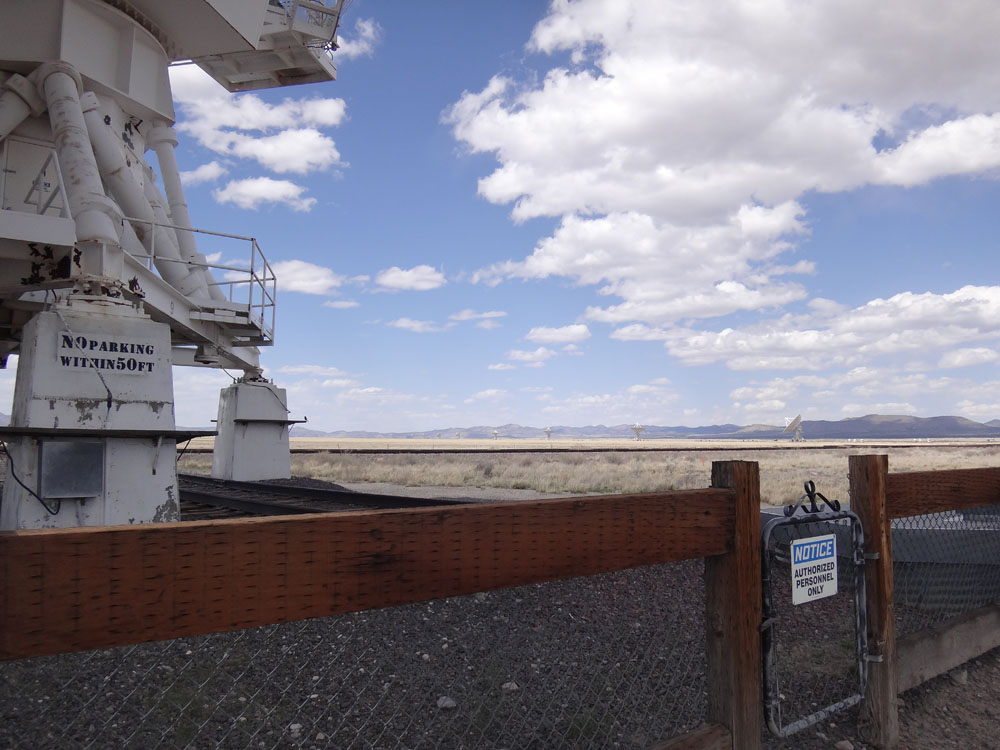
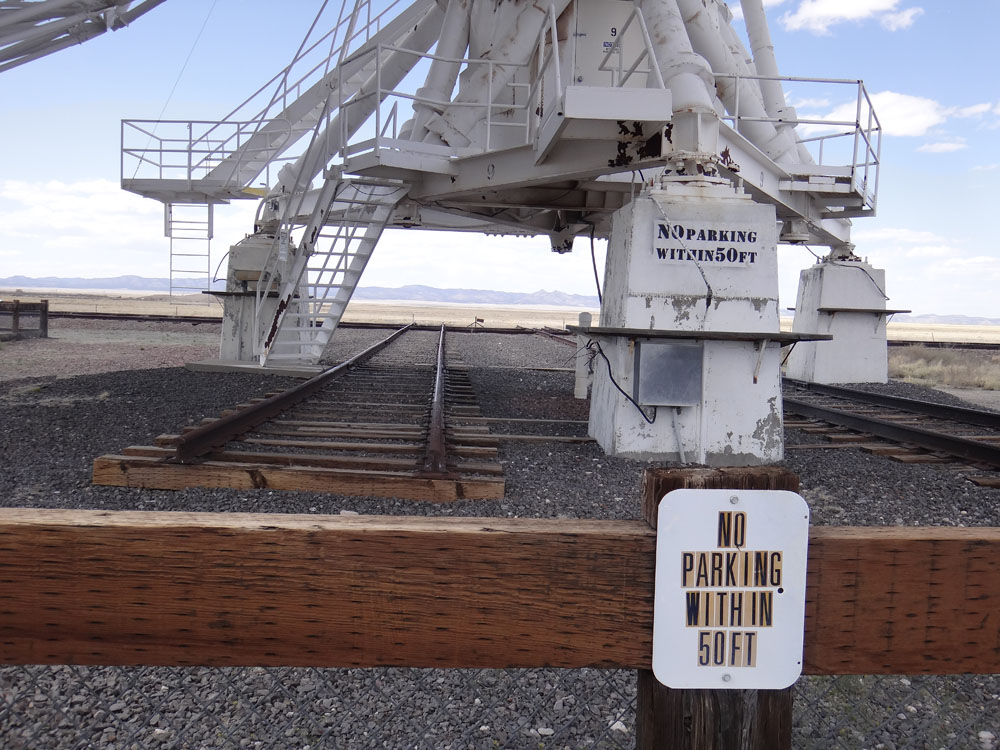
The antennae point upward when they are parked. You can see the parking progress.
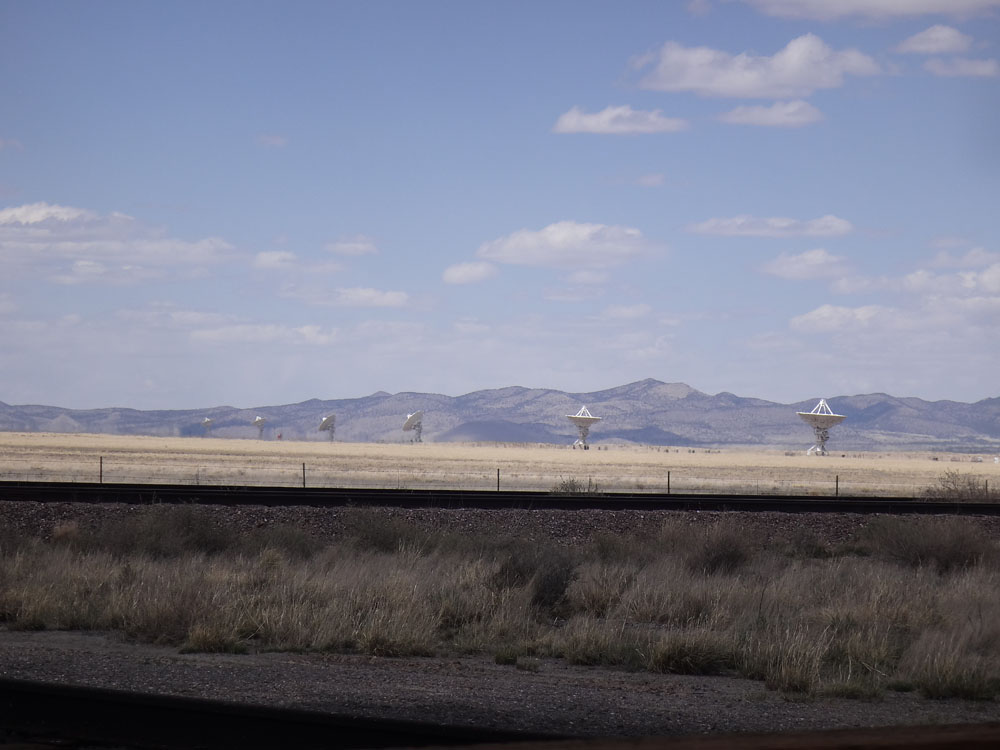
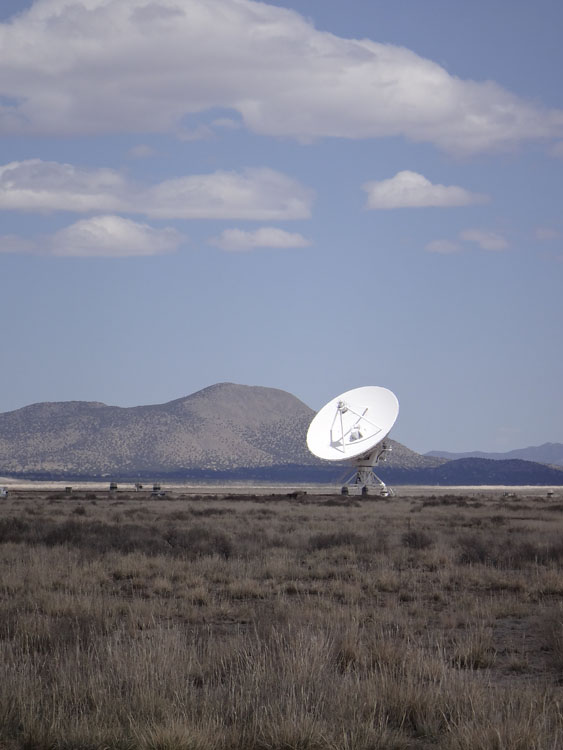
This is the "Bracewell Radio Sundial".
Bracewell Radio Sundial
"The Ronald N. Bracewell Radio Sundial was designed by Dr. Woody Sullivan of the University of Washington, and was opened on the Autumn Equinox of 2013.
Historic piers and antenna dish were donated to the National Radio Astronomy Observatory (NRAO) for this purpose by Stanford University. Funding was
provided by Friends of the Bracewell Observatory Association (Bob Lash, M.D., President), Associated Universities, Inc. (AUI), an the National Science Foundation
(NSF). NRAO Project Lead: Dr.Miller Goss\ Project Engineer: Guy Stanzione \ Project Coordinator: Judy Stanley. The NRAO is a facility of the NSF operated under
The Sundial's Namesake: Ronald N. Bracewell (1921-2007)
An Australian native, Ron Bracewell received his Ph.D. from Cambridge University in England. During World War II, he worked in Sydney designing radar equipment.
After the war, he turned his expertise in physics and electronic engineering toward establishing Australia as an early world leader in the emerging field of
radio astronomy.
In the 1950s and 1960s, Bracewell made major contributions to developing the mathematical techniques for combining the radio signals received by multiple antennas
to produce detailed images for astronomical objects. These techniques remain at the heart of how the VLA am many other radio telescopes operate today. In addition,
Bracewell applied these mathematical techniques to developing Computer-Assisted Tomography (CAT) scans for making images of the interior of the human body.He was
honored for his pioneering work in producing that valuable medical tool.
Bracewell became a professor at Stanford University in 1955. At Stanford, he built a radio telescope using 32, 10-foot-diameter dish antennas, one of which is
mounted south of the sundial. He used this system to study the Sun an refine his mathematical techniques. For a decade, beginning in 1961, Bracewell monitored variations
in the Sun's radio emission on a daily basis.In addition to helping understand the Sun's workings, his system provided warnings of solar bursts that could affect
satellites and endanger the Apollo astronauts during their voyages to the Moon.
A man of many interests, he wrote about such disparate subjects as the search for extraterrestrial intelligence and trees. He designed several sundials, including
one that remains on a building at Stanford.
The Concrete Piers and the Signatures
Each of the dish antennas of Bracewell's Stanford radio telescope sat atop a concrete pier. He invited his visitors to use a chisel and "sign" their names
to one of the piers. Over a 20-year period, he accumulated more than 220 of these signatures. Those who "signed" his piers included two Nobel prize recipients,
directors of observatories, both radio and optical, from around the world, and many of the early pioneers of radio astronomy who established that field in the
years following World War II.
Bracewell's antenna array was abandoned in 1980. In 2012, with help from generous donors, ten of the piers were sawed off and shipped to the VLA, to become part
of this sundial. The piers here at the VLA contain approximately 220 signatures, including some in Chinese, Russian, an Greek."
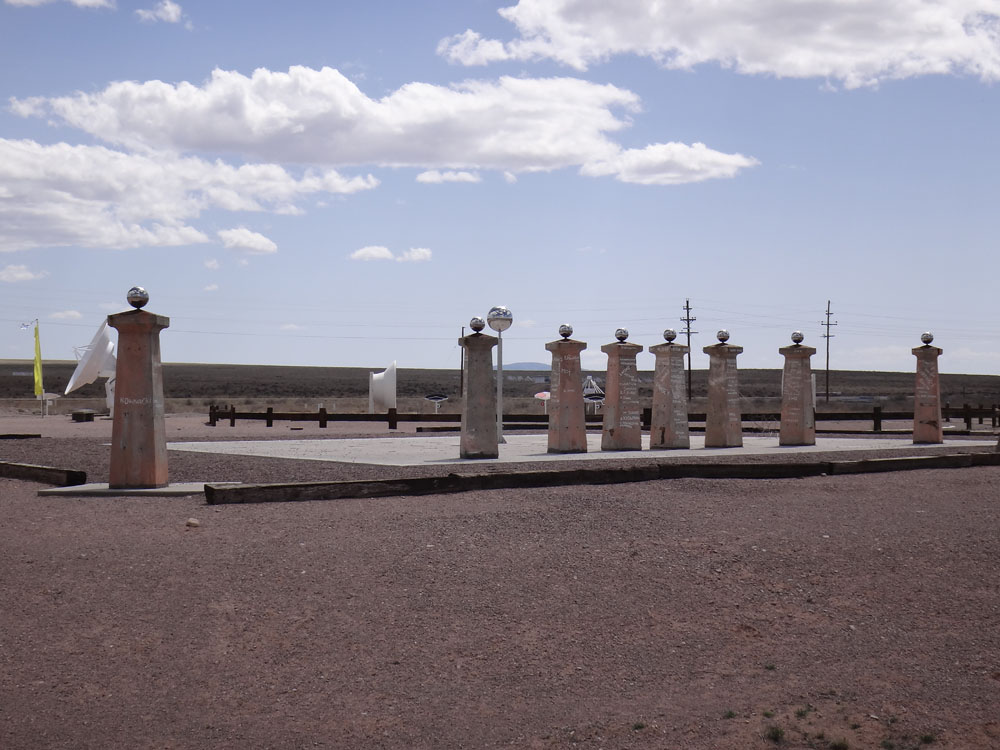
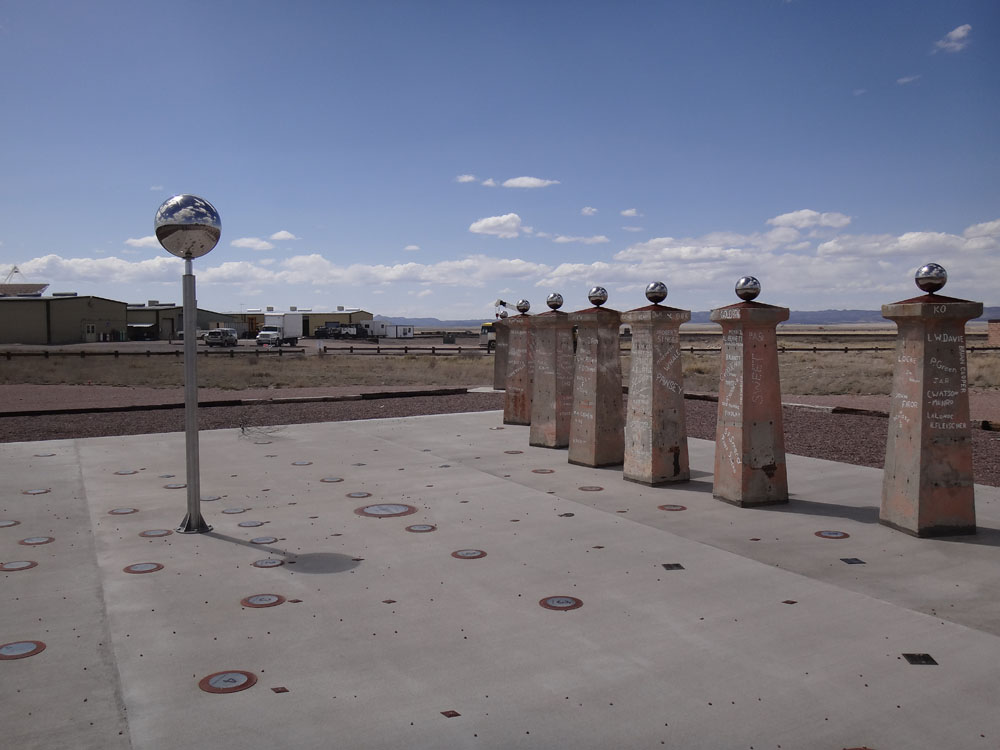
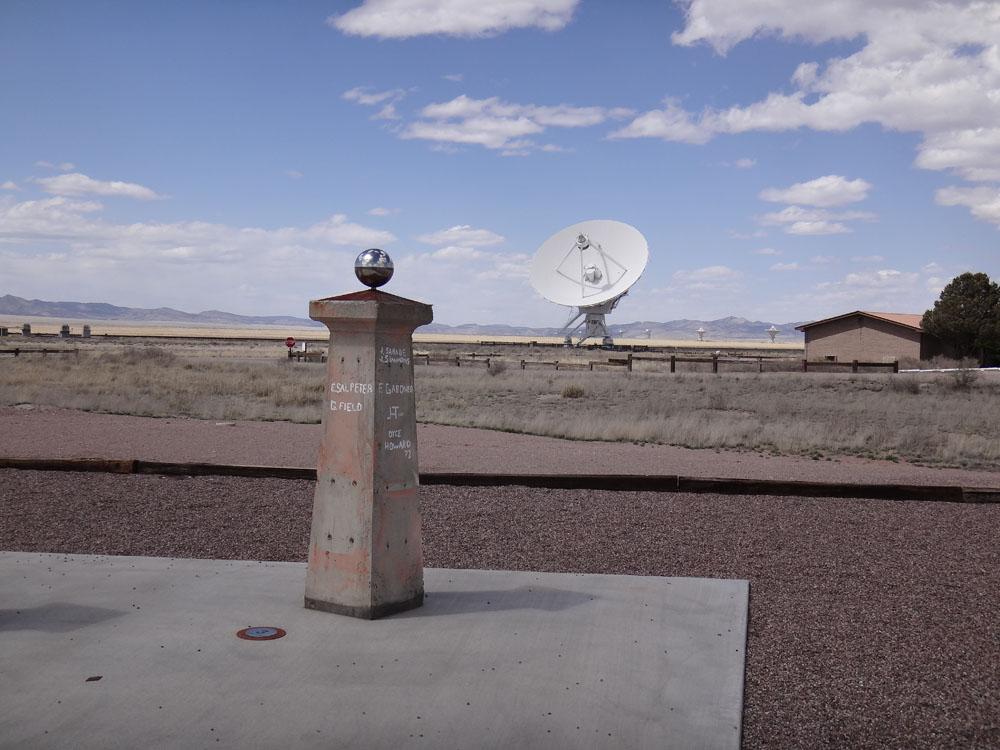
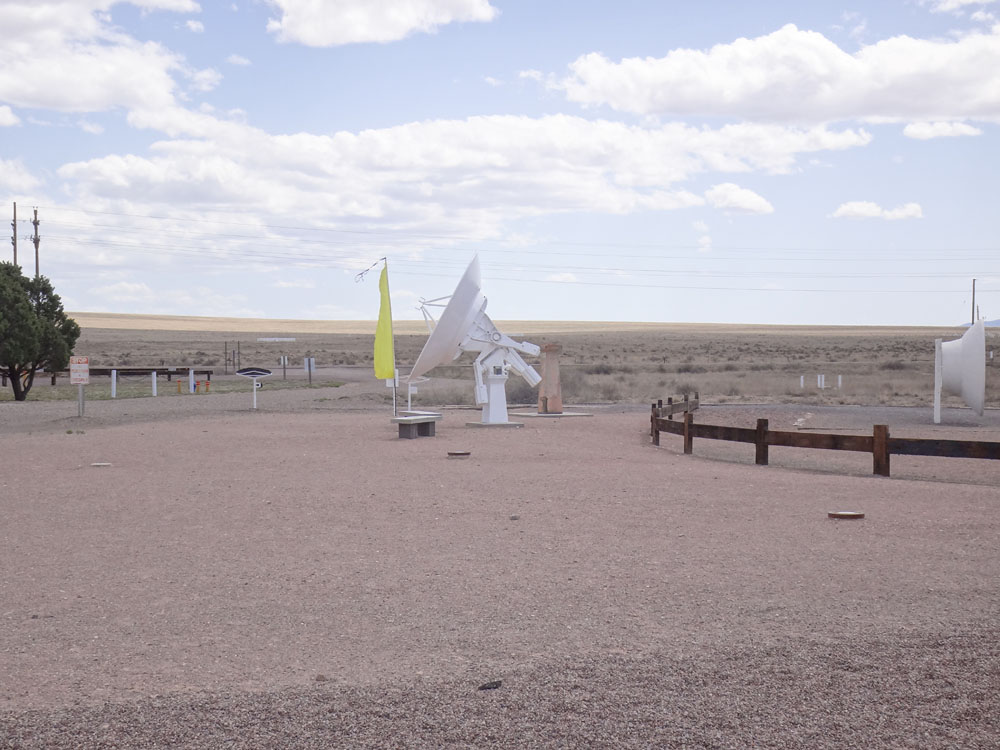
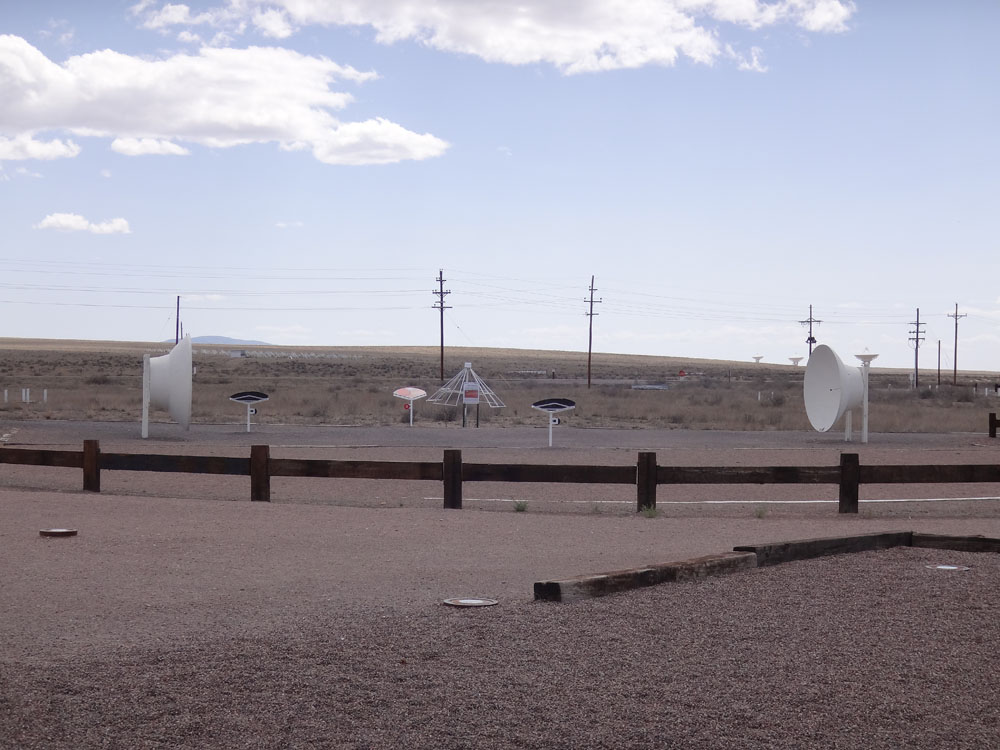
The time shown by a sundial will differ from what your watch indicates, for these reasons:
- The sundial shows the solar time for this specific location, not the standard time defined for a single location within each time zone.
- The Sun moves through the sky at a slightly different rate at different times of the year.
- Daylight Saving Time will add one hour to the solar time.
Using the Bracewell Sundial
"The Bracewell Sundial has a large sphere mounted atop a slim metal post. Locate this sphere and note where its shadow falls. There are three
major sets of markers -- metal disks -- set into the concrete that mark the hours from 8 am to 4 pm at four dates of the year. The disks labeled
"Summer Solstice" show the time on June 21; the disks labeled "Winter Solstice" are for December 21; and the disks labeled "Equinoxes" are for
March 20 and September 23. Small, diamond-shaped markers indicate the hours at intermediate dates, such as July 21, August 21, etc. The sphere's shadow
thus indicates not only the time of day but also, roughly, the time of year. All the markers for a particular hour, the round disks and the diamonds,
trace a line toward one of the concrete piers.
The markers for the Summer Solstice are closest to the central sphere and its post, with the markers for the Winter Solstice the farthest, and the ones
for the Equinoxes in-between.
Small square markers indicate important dates in the history of radio astronomy. The center of the sphere's shadow crosses these markers on the exact
date commemorated on that marker. Other small markers are in the shape of dish antennas. When the sphere's shadow crosses these markers, it is solar noon
at the observatory notes on the marker."
The Sundial and the Radio Sky
"Other markers allow you to find the current location in the sky of three prominent and important objects for radio astronomers. These are
Centaurus A (Cen A), a galaxy about 9 million light-years from Earth; Cygnus A (Cyg A), a galaxy some 600 million light-years away; and
Cassiopeia A (Cas A), the remains of a stellar explosion in our own milky Way galaxy, about 11,000 light-years from Earth. the markers for
Centaurus A are north of the main portion of the sundial, while those for Cygnus A and Cassiopeia A are south of the sundial's main area.
To find the location of these objects in the sky, you first must determine the local sidereal time, or star time, which differs from the
solar time we normally use. See the chart (below) to determine the sidereal time at noon for this time of year, then add or subtract hours
as necessary for the current time of day. Sidereal time is measured in the 24-hours system
Next, check to see if any of the radio objects are currently above the horizon. Those sidereal times are:
- Centaurus A: 12:30 to 14:30
- Cygnus A: 13:00 to 24:00 and 00:00 to 03:00
- Cassiopeia A: 13:00 to 24:00 and 00:00 to 09:00
If any of those objects are currently above the horizon, you may locate their position by finding the market for that object that corresponds most
closely to the current sidereal time. If you place your eye next to that marker and look up toward the large sphere on the metal post, the radio
object will be behind the sphere in the sky. If you could see radio waves instead of light waves, you would be putting your eye in the
"radio shadow" of the object.."
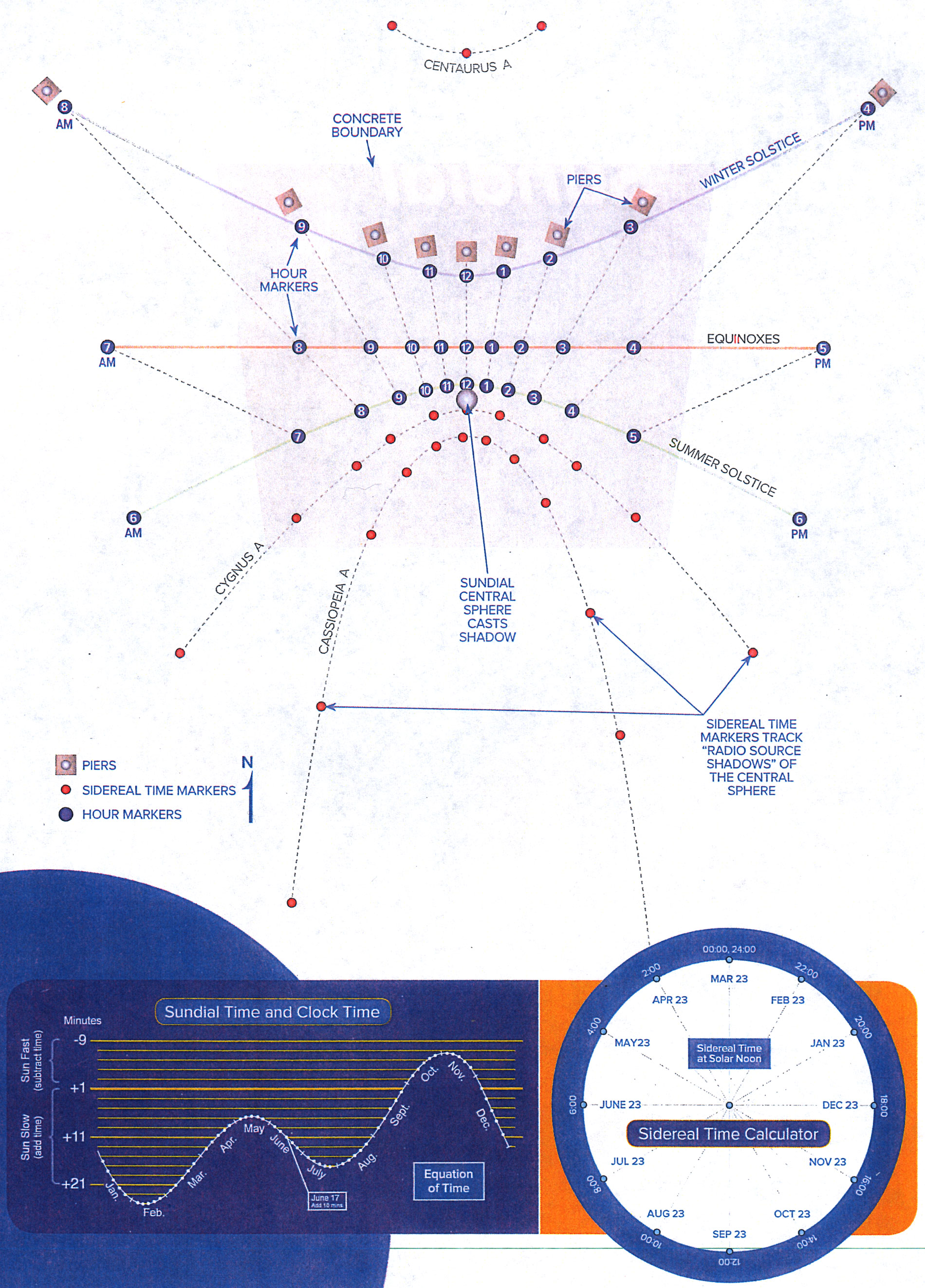
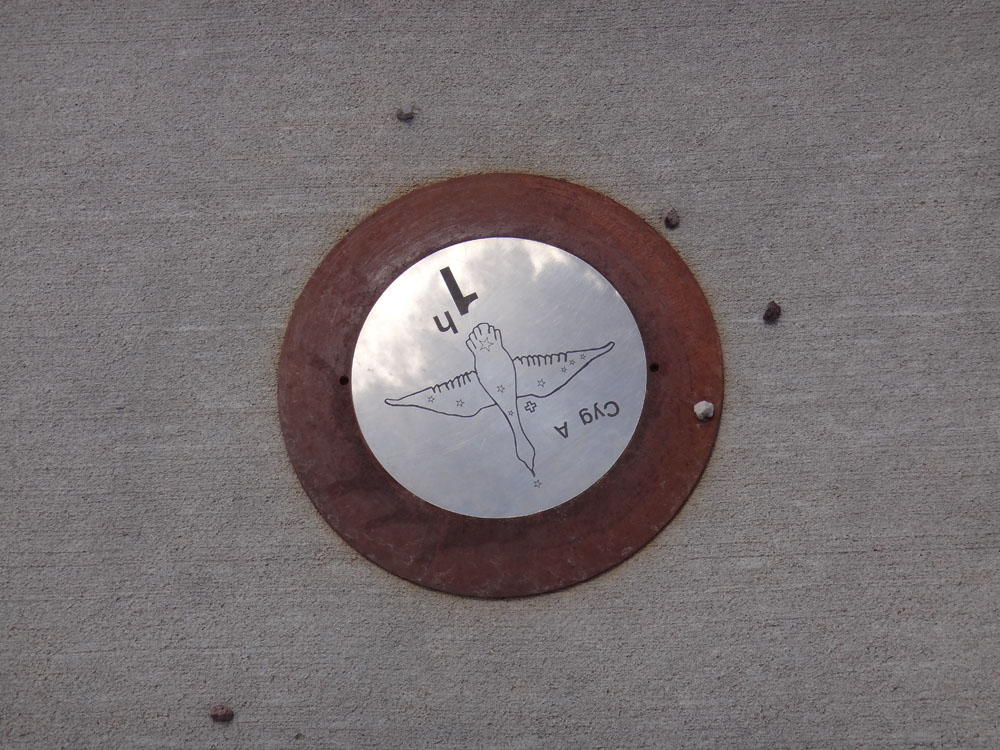
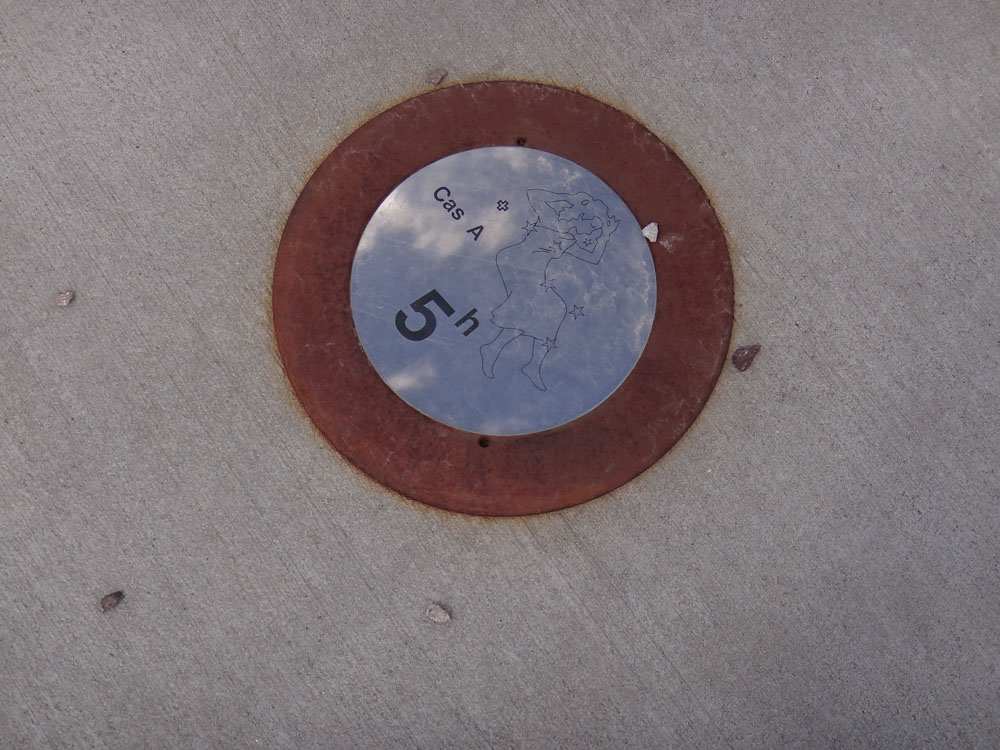

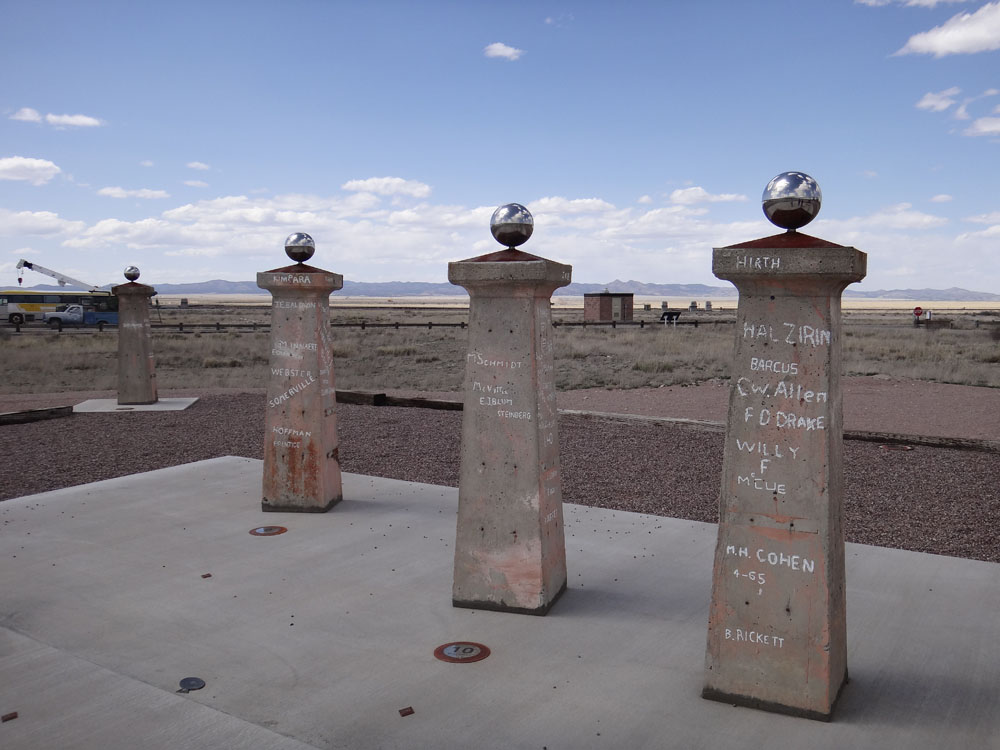

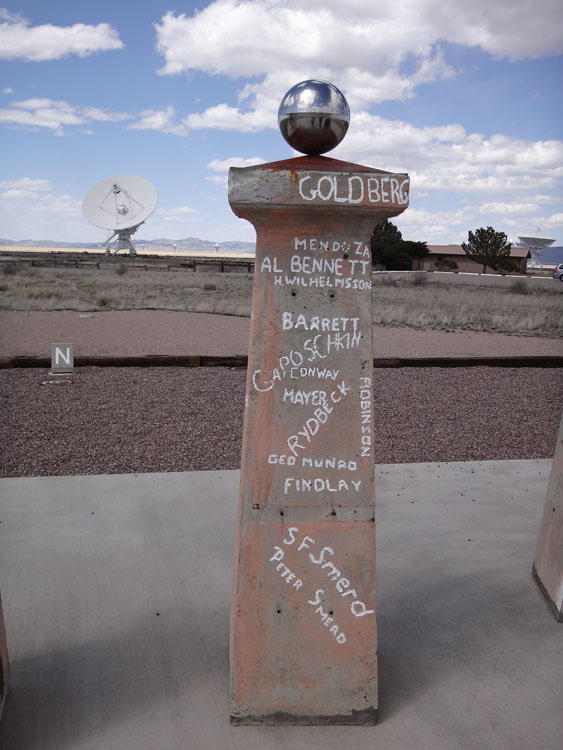
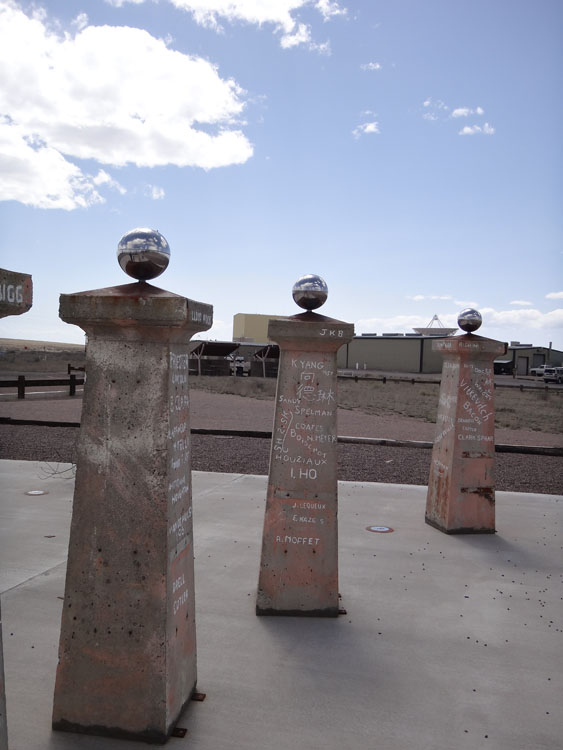
Chris explains the sundial:
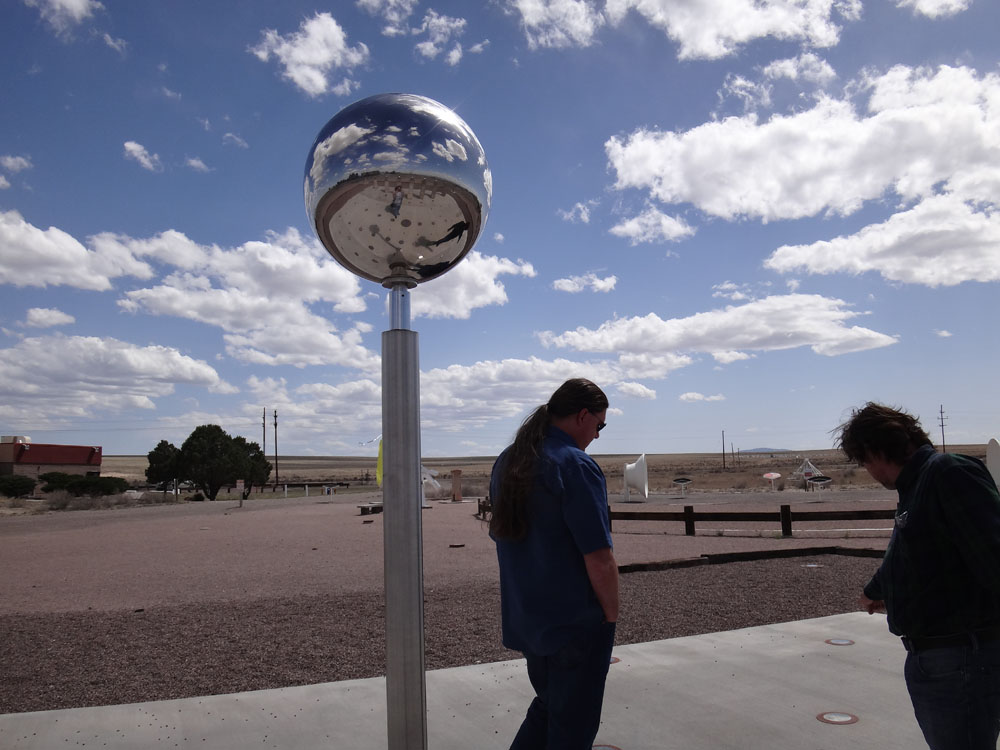
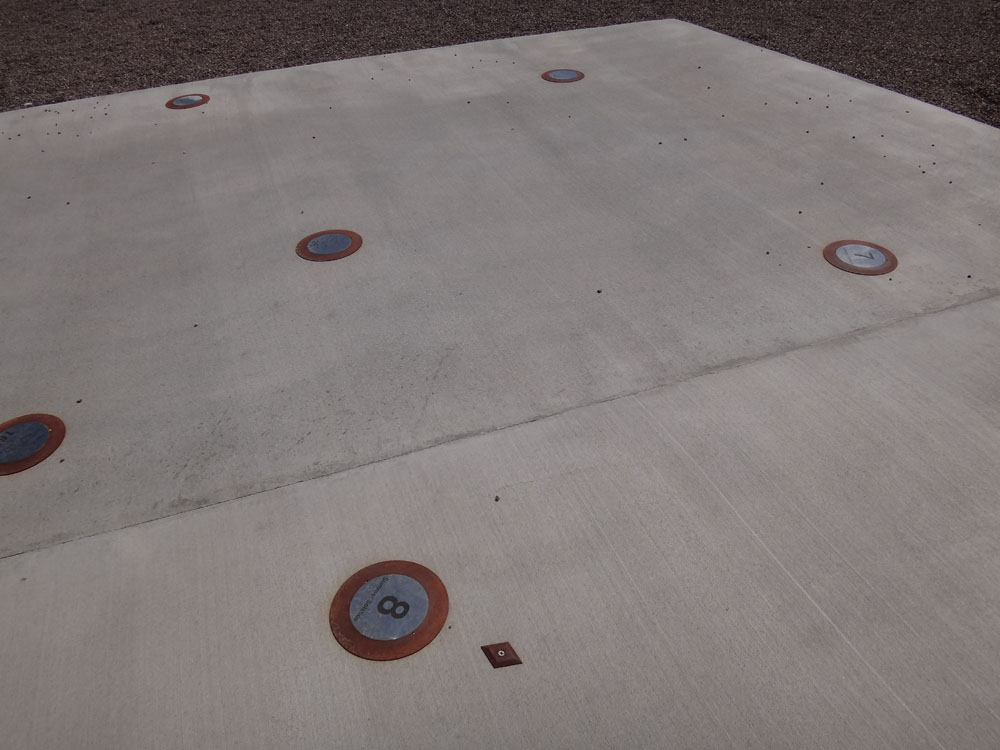
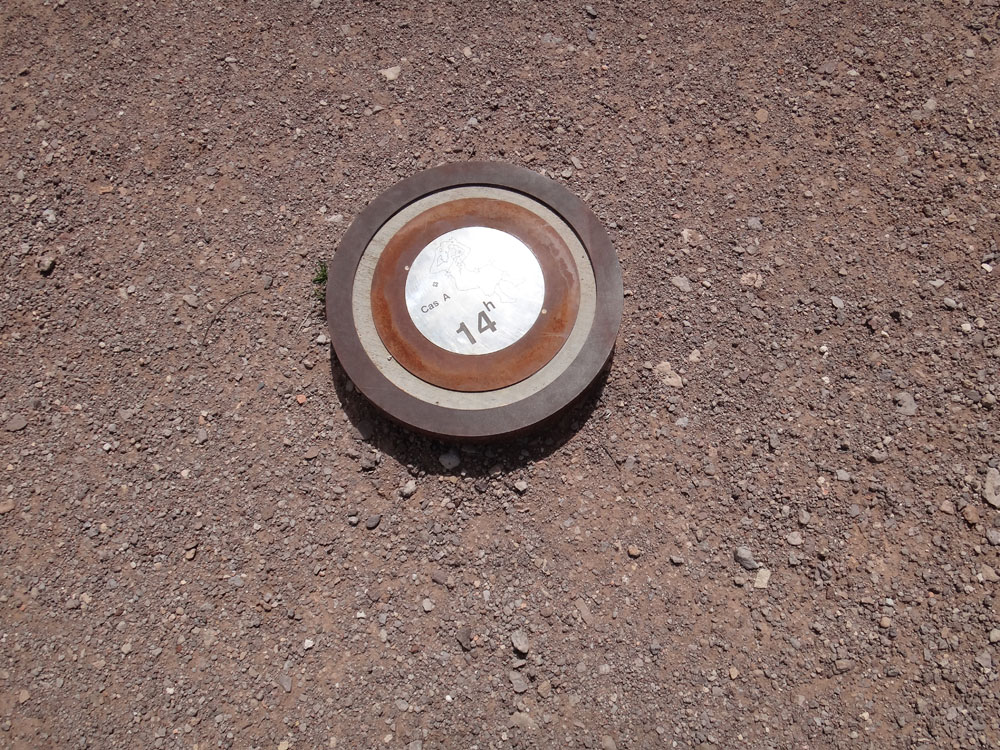
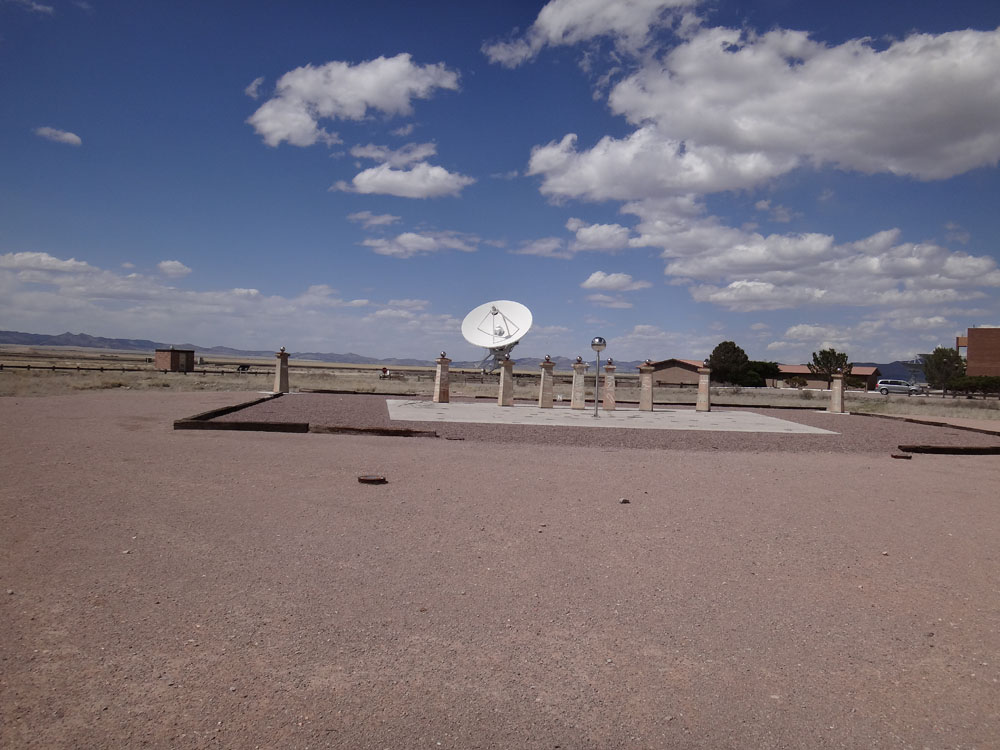


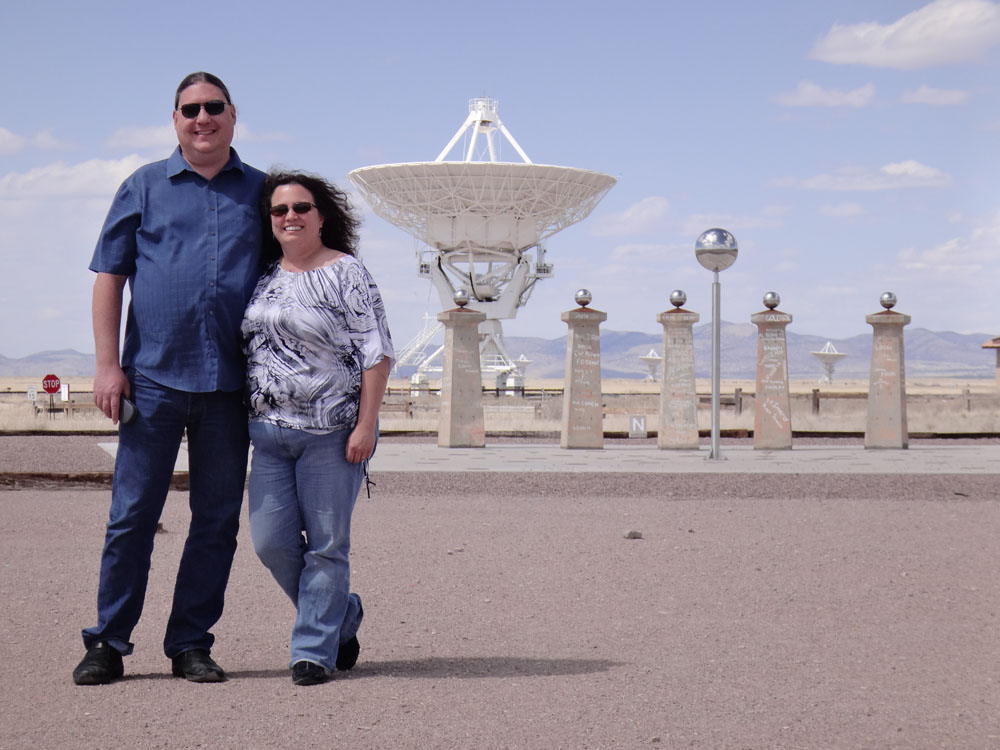
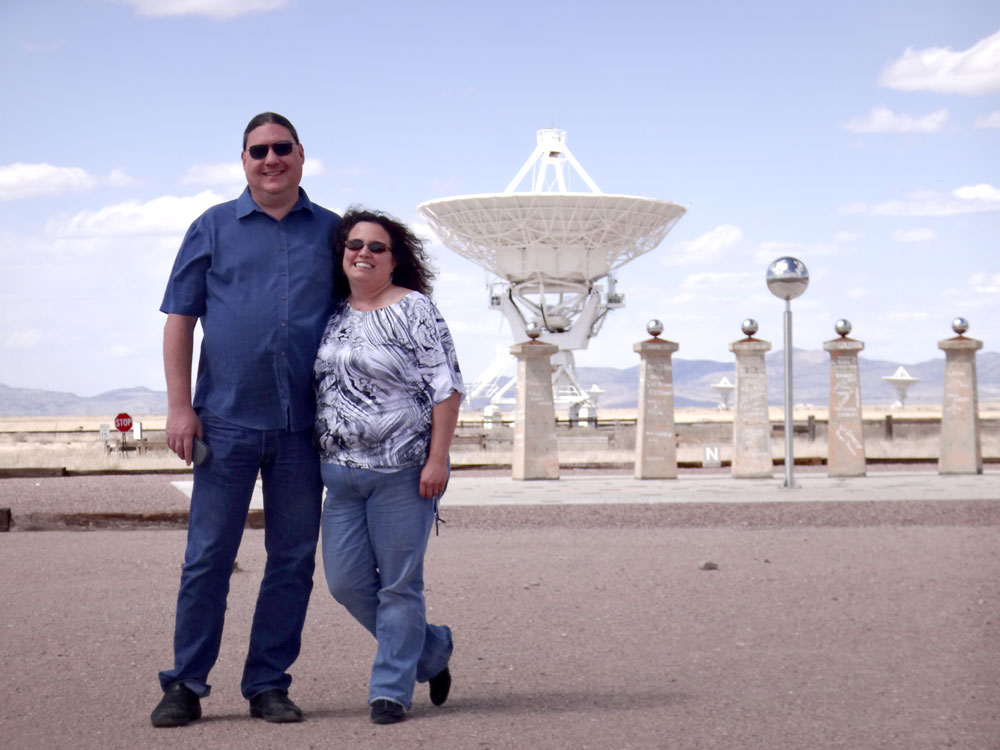
Heading back to the Visitor's Center:

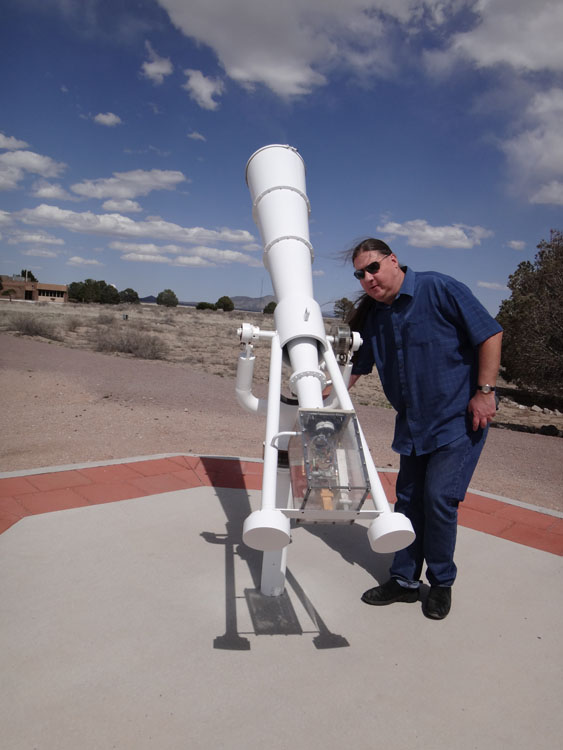
One last look at the array as we leave the visitor's center and head to Socorro:
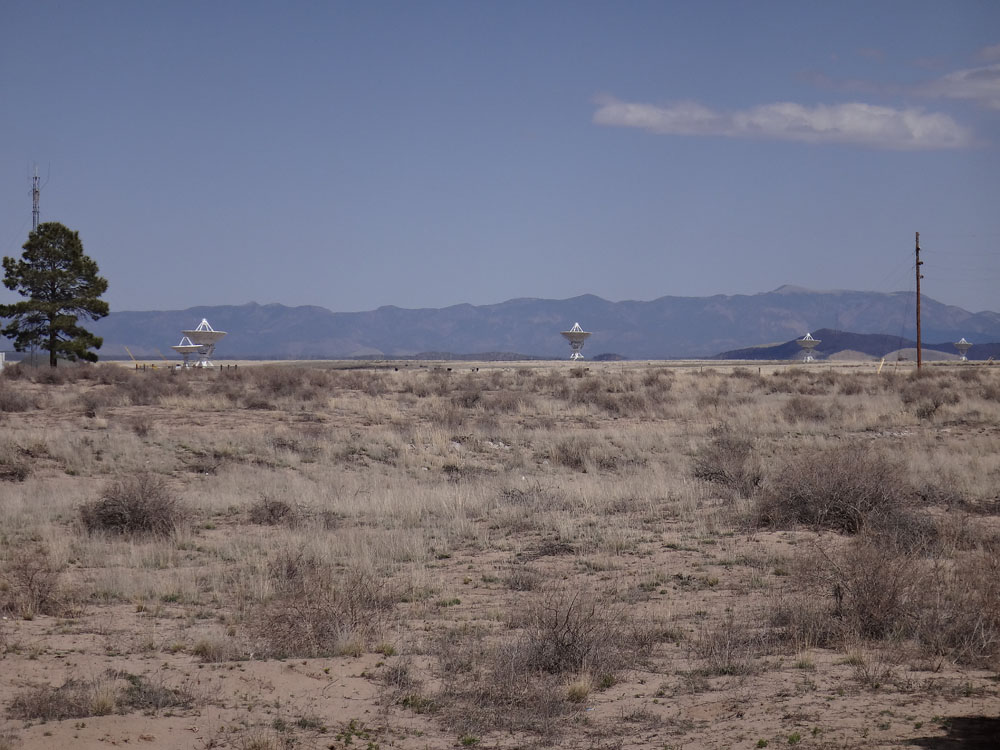

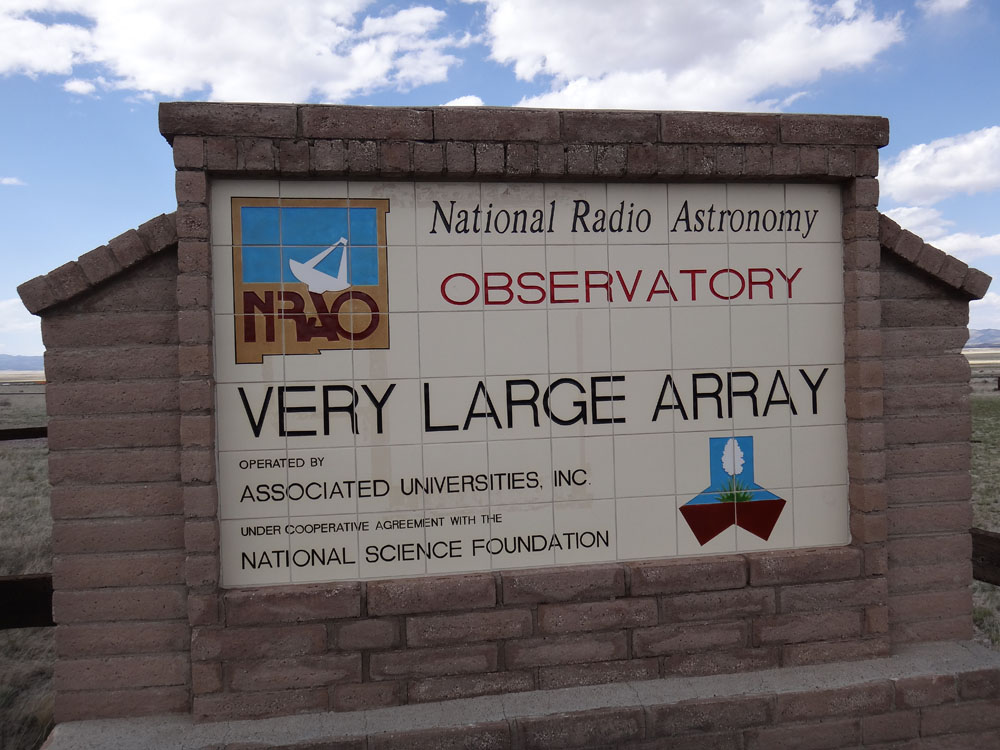
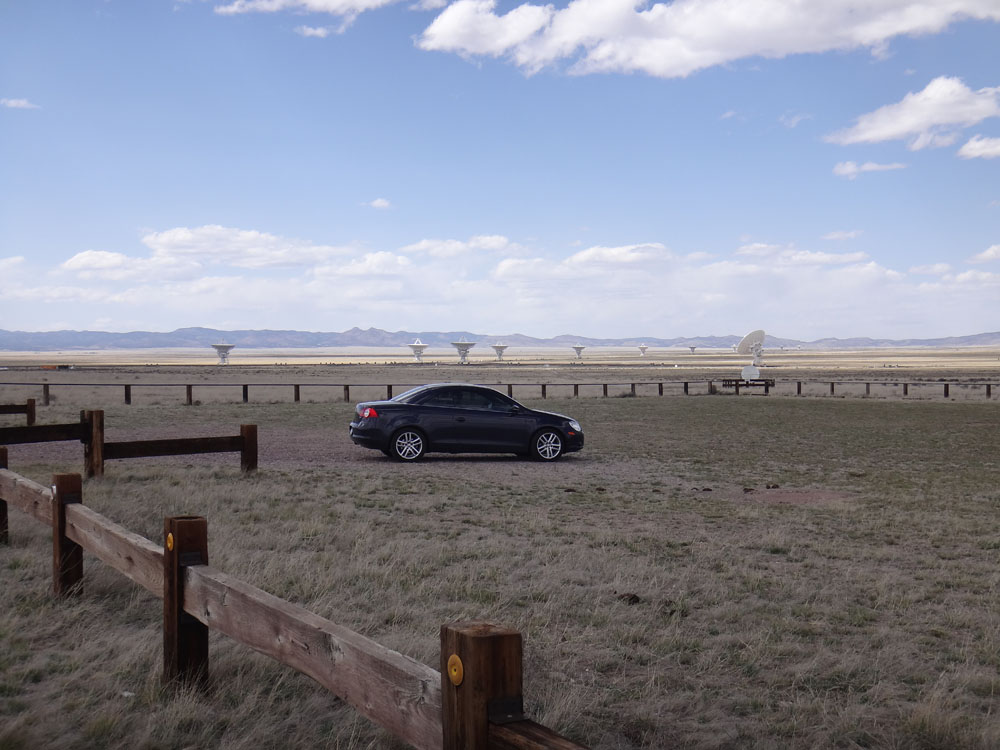
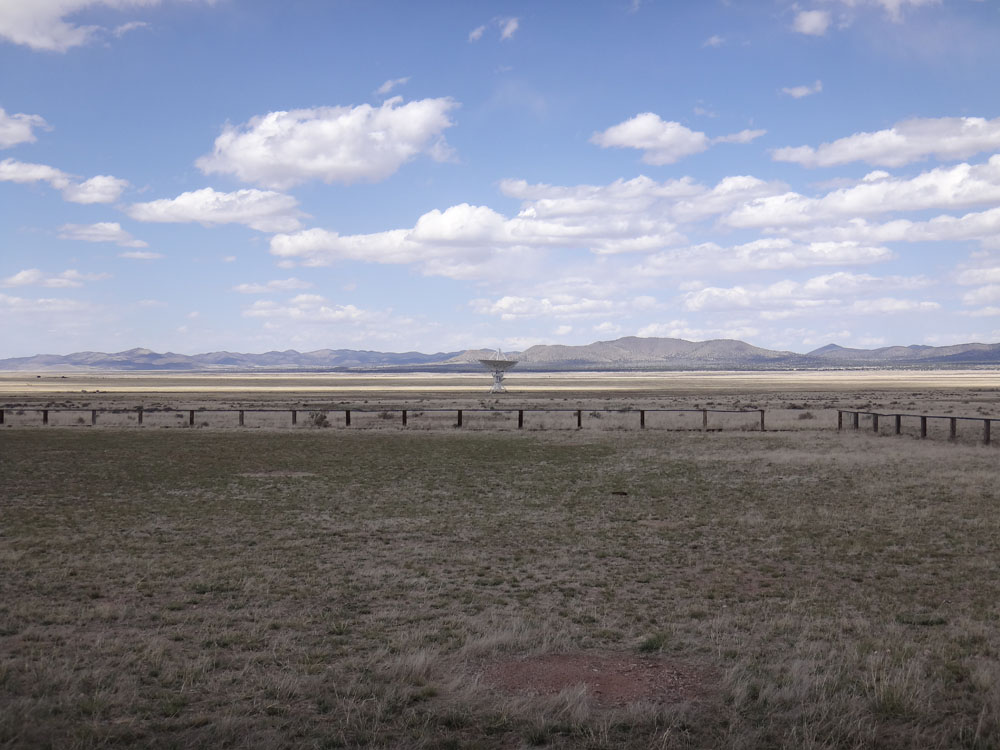
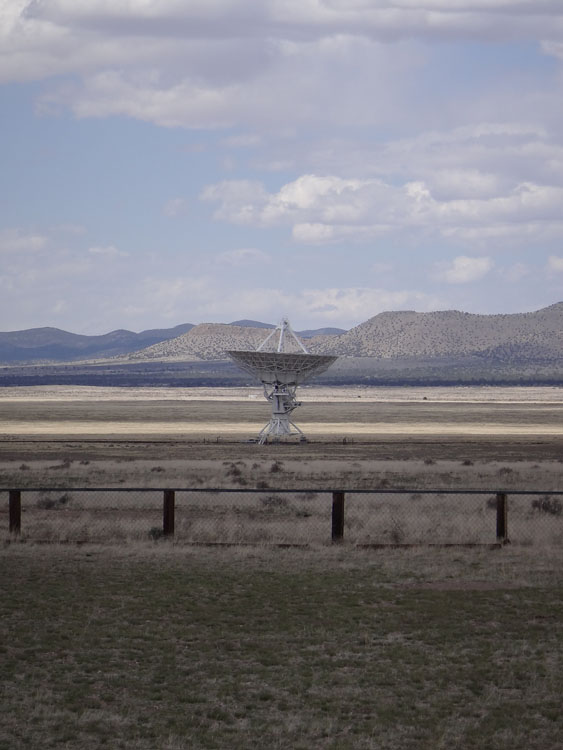
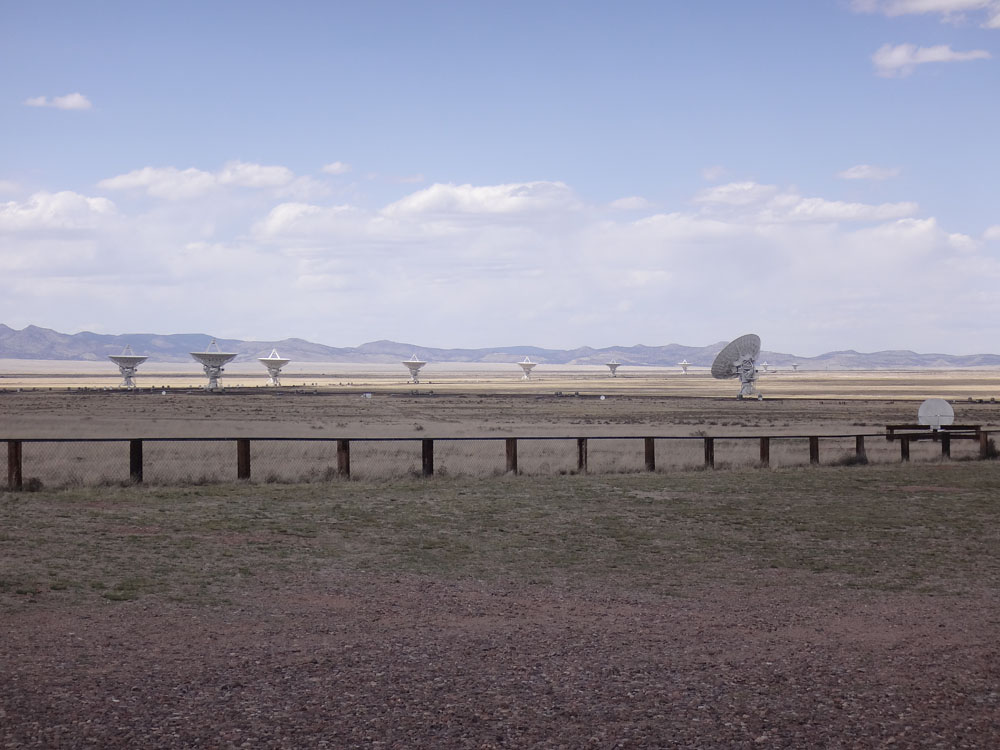
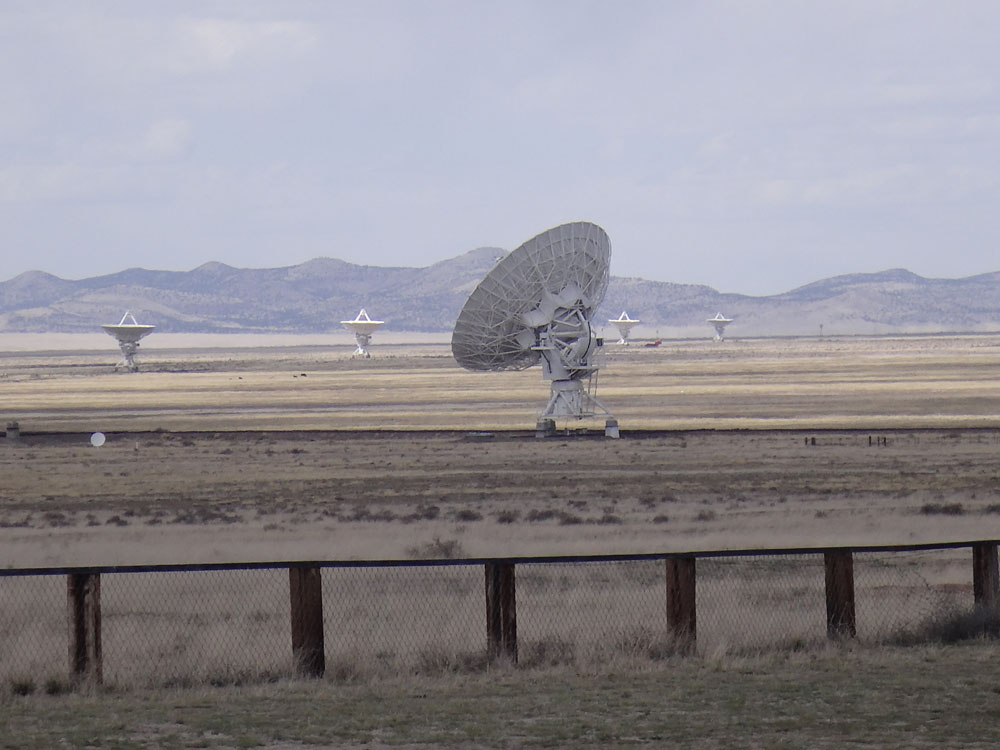

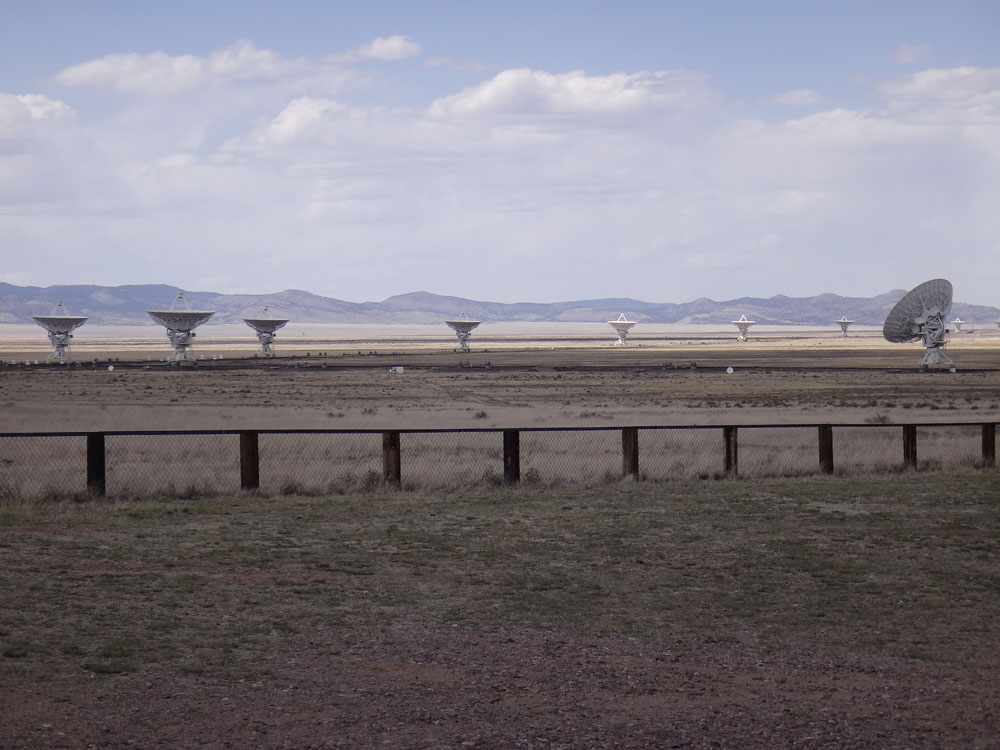
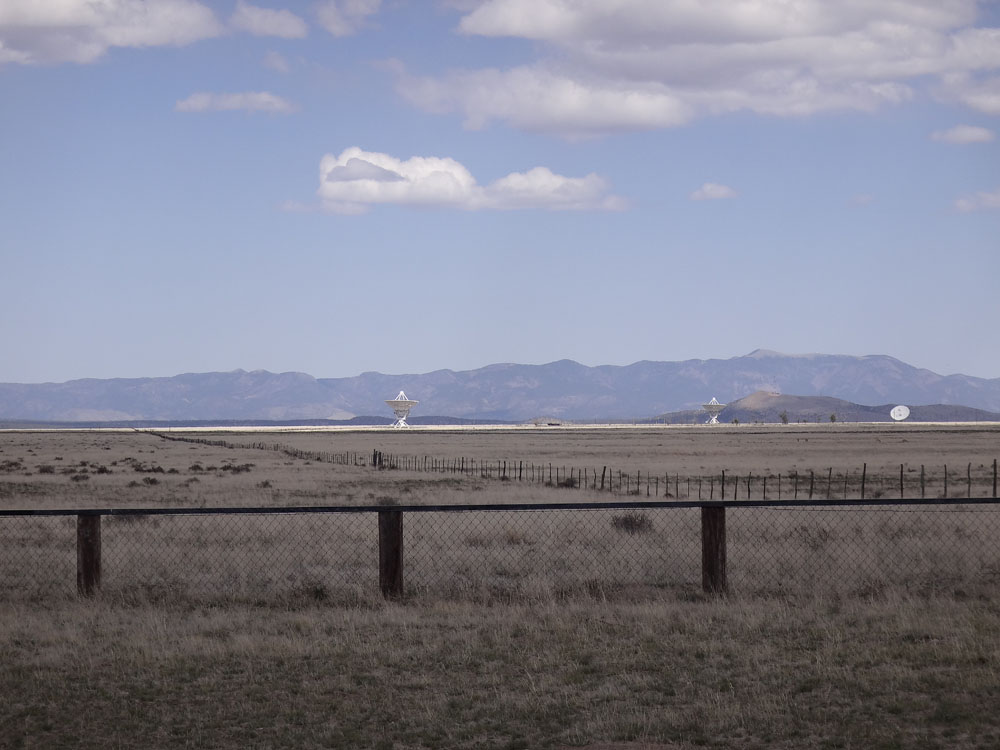
Antelope at the VLA:
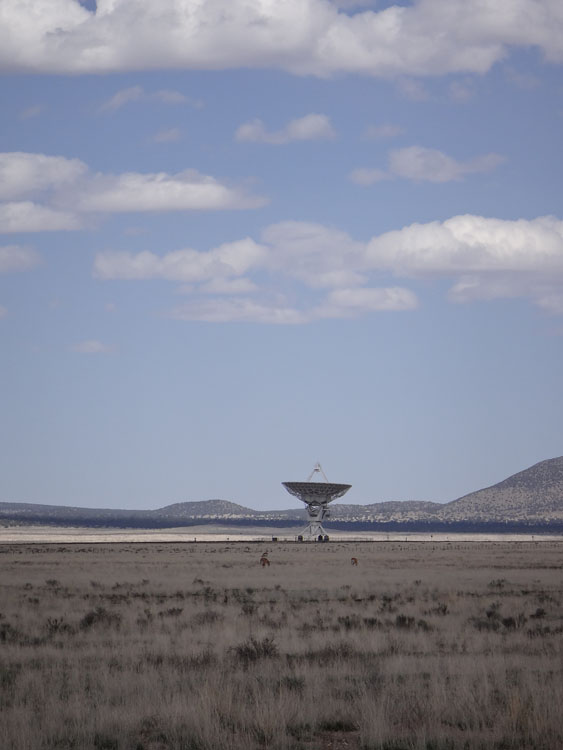
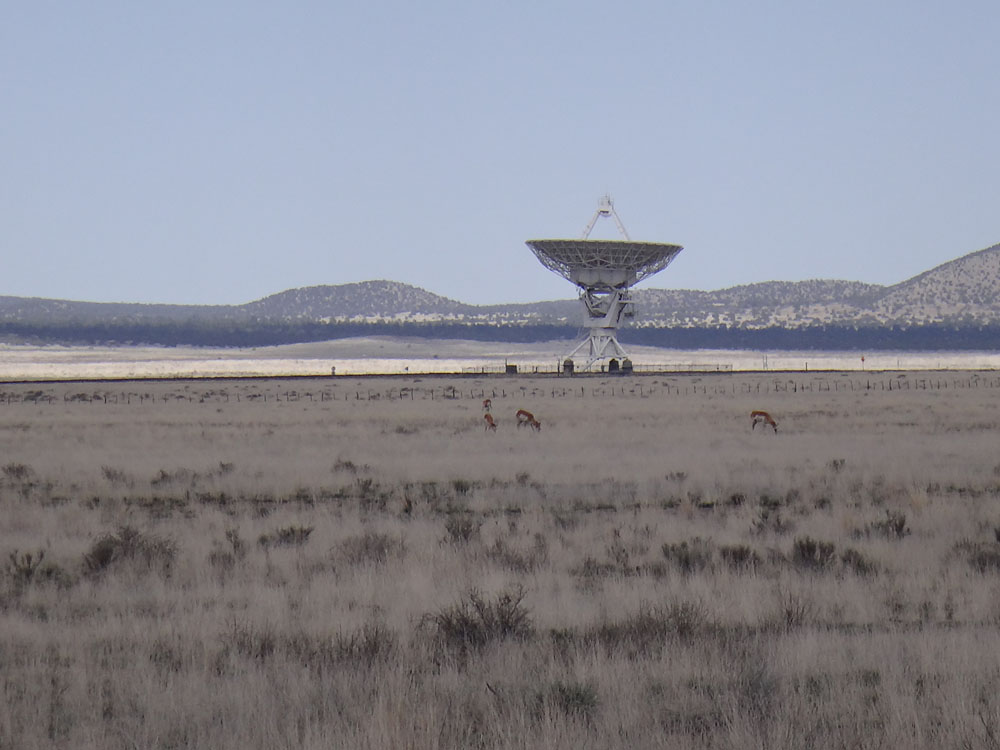
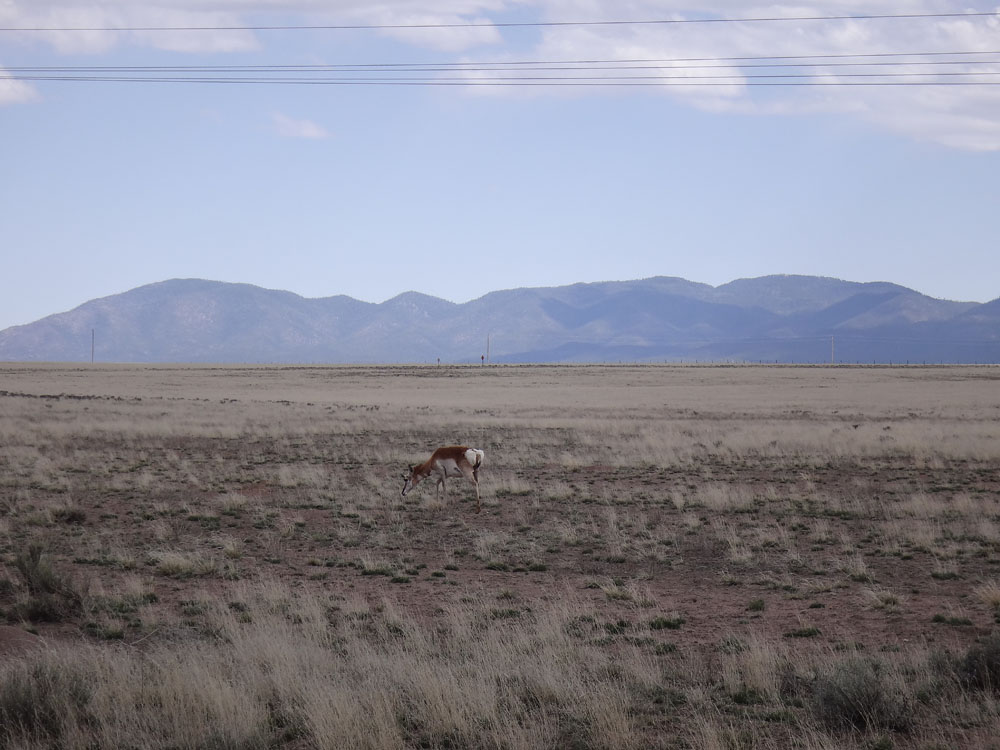
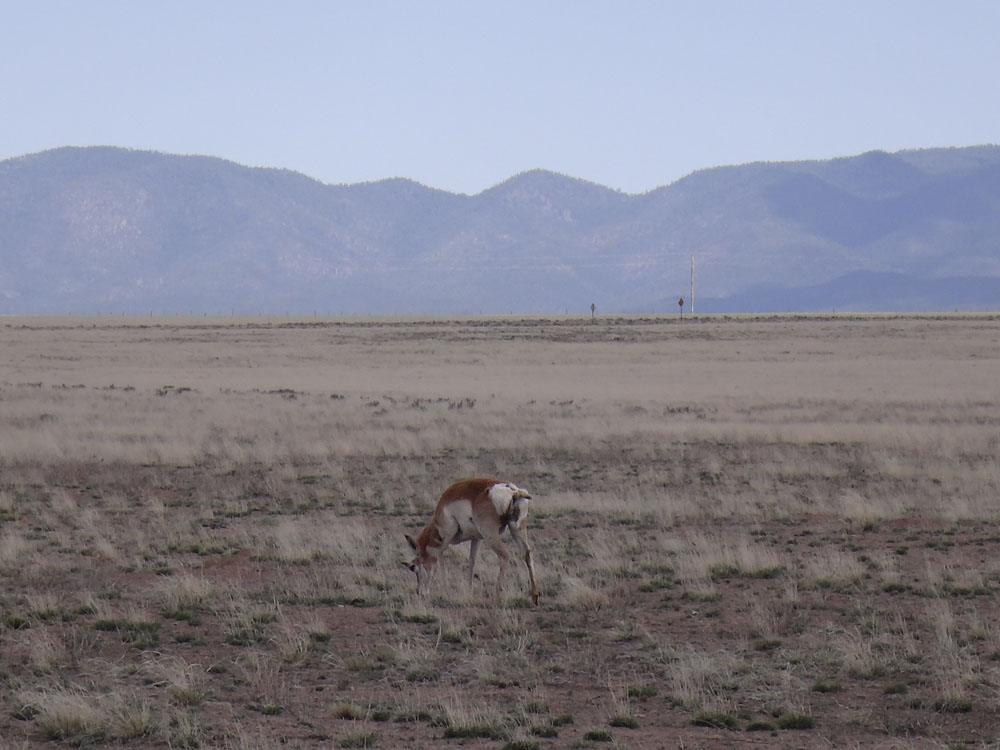
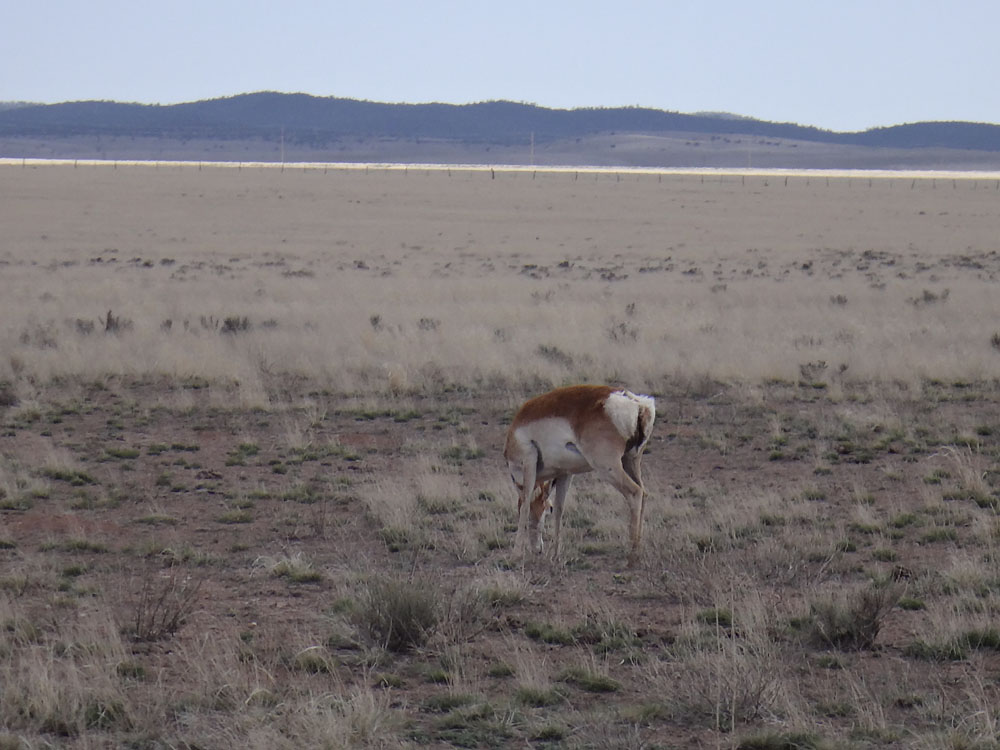
Parking operation still in progress:
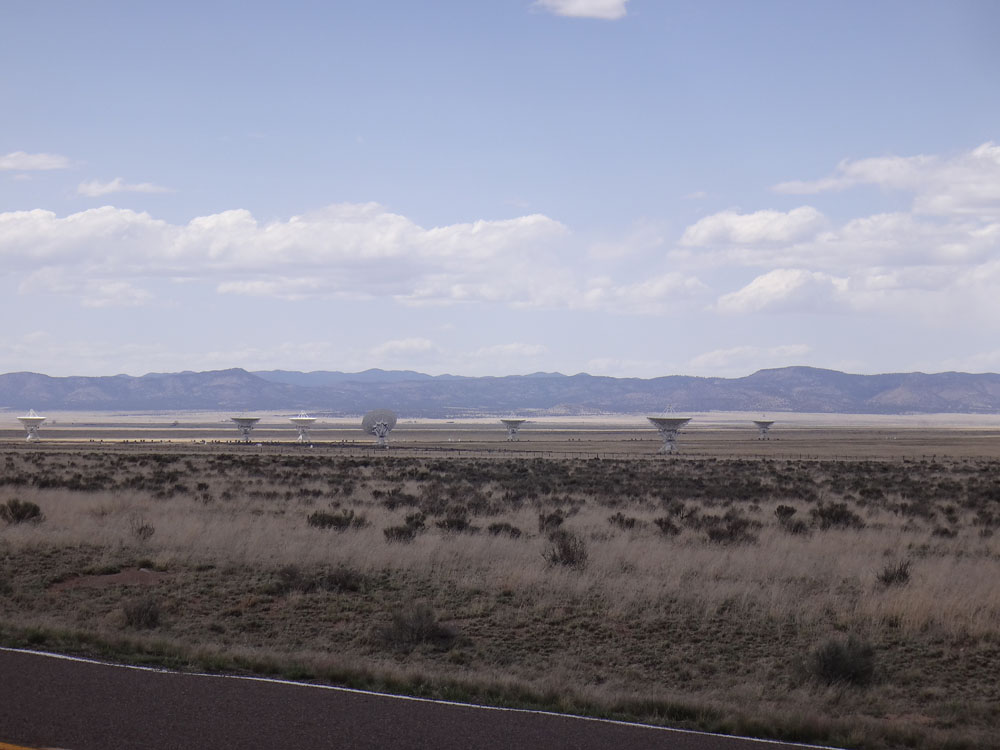
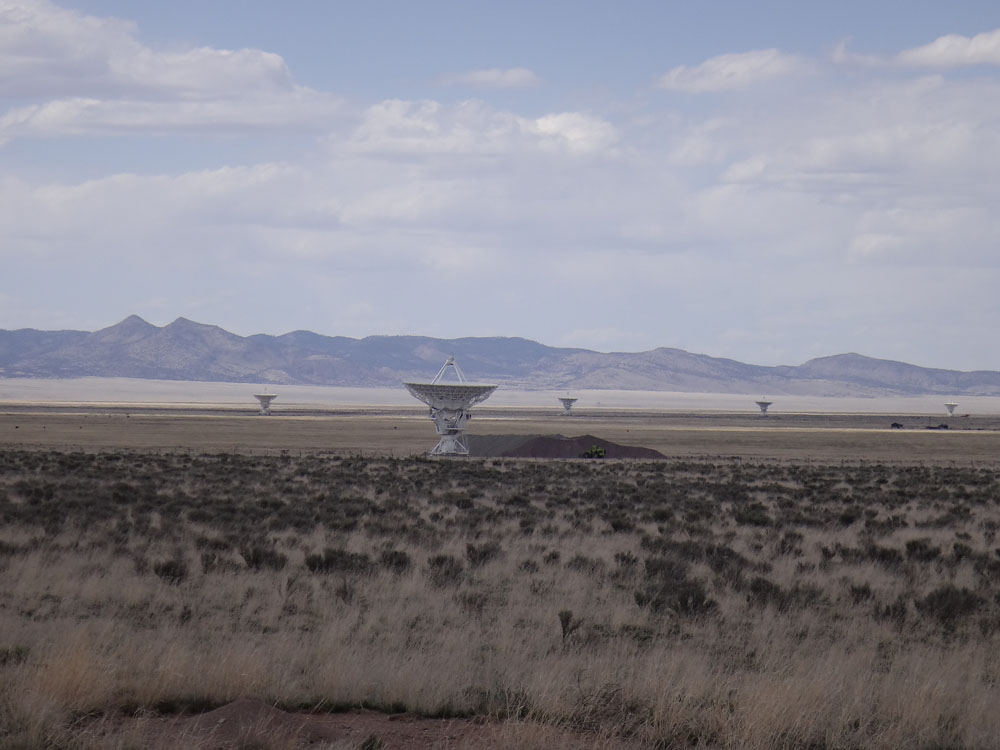
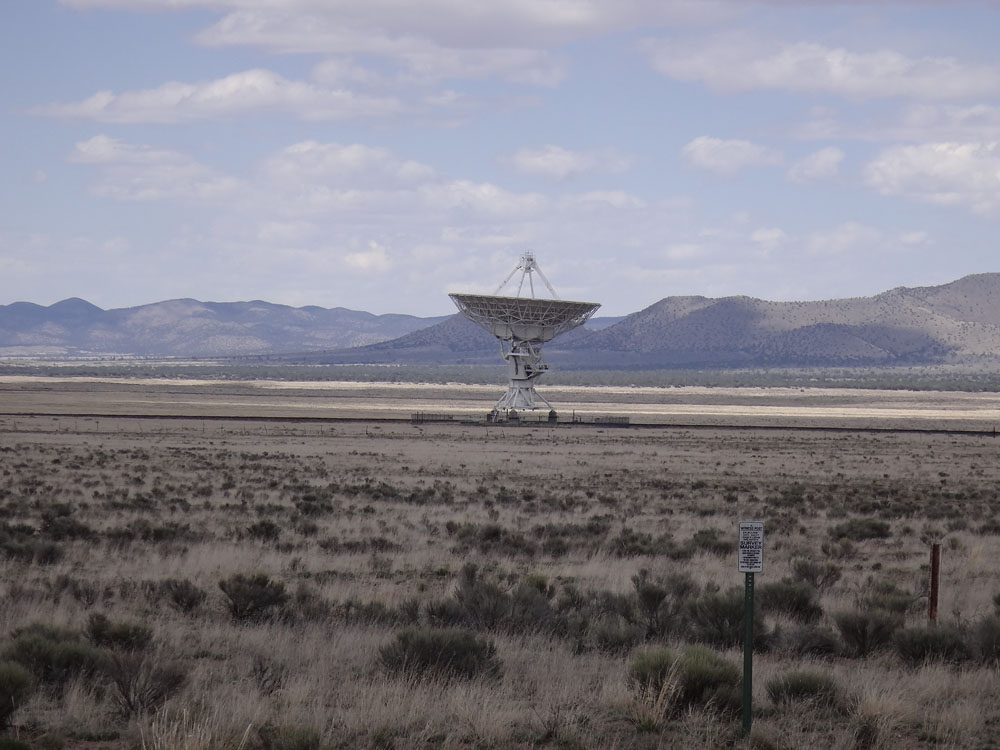
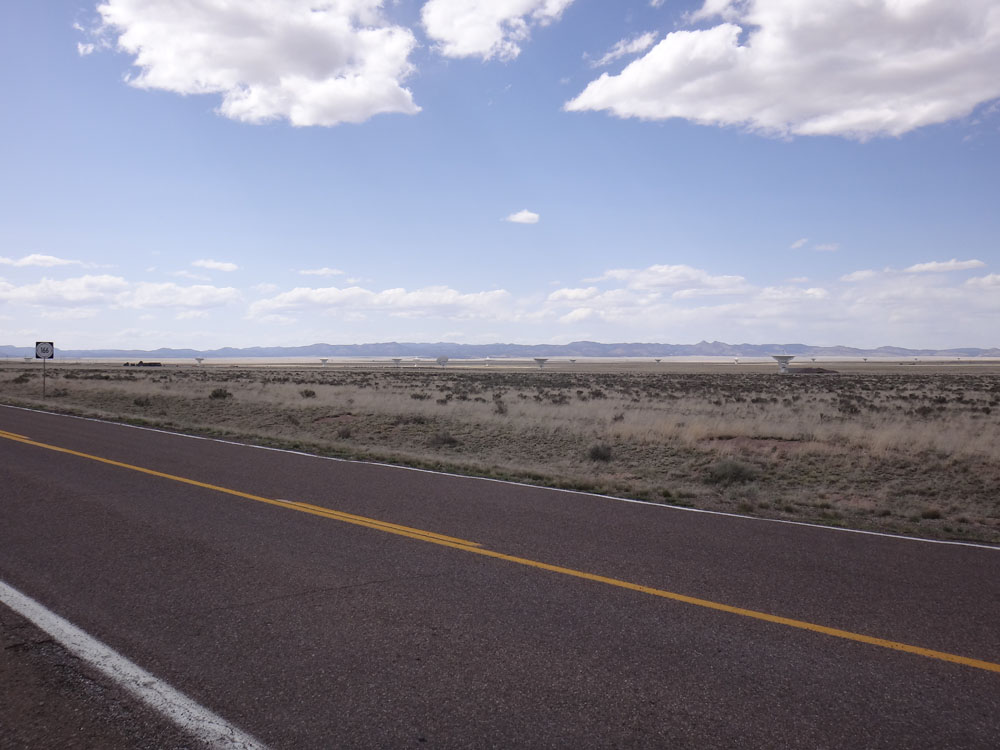
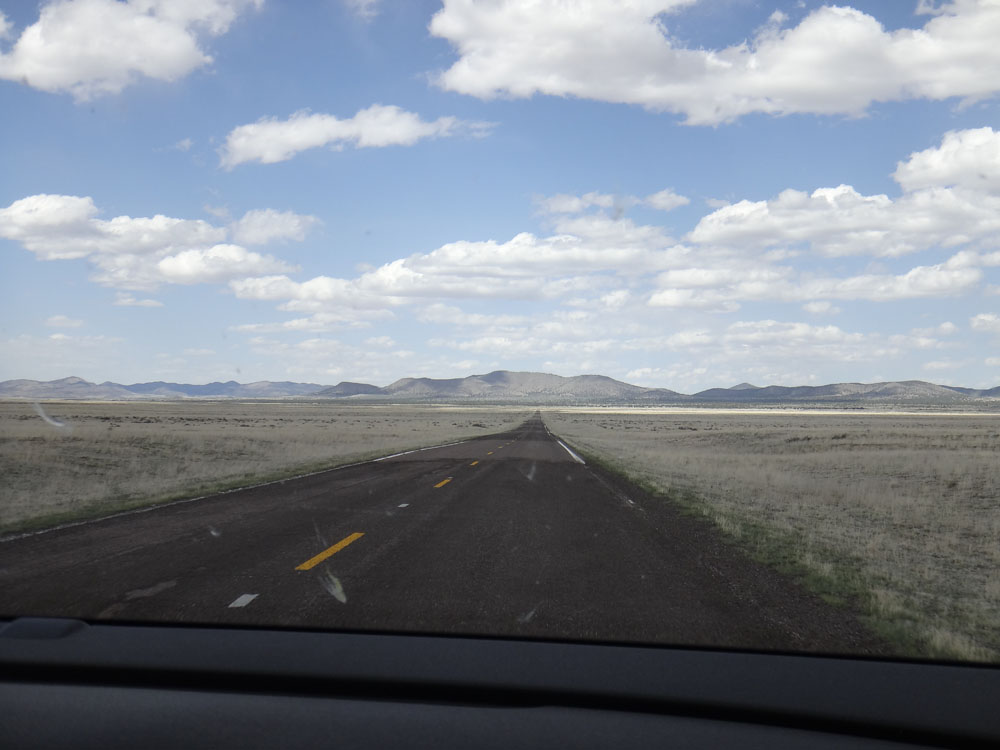
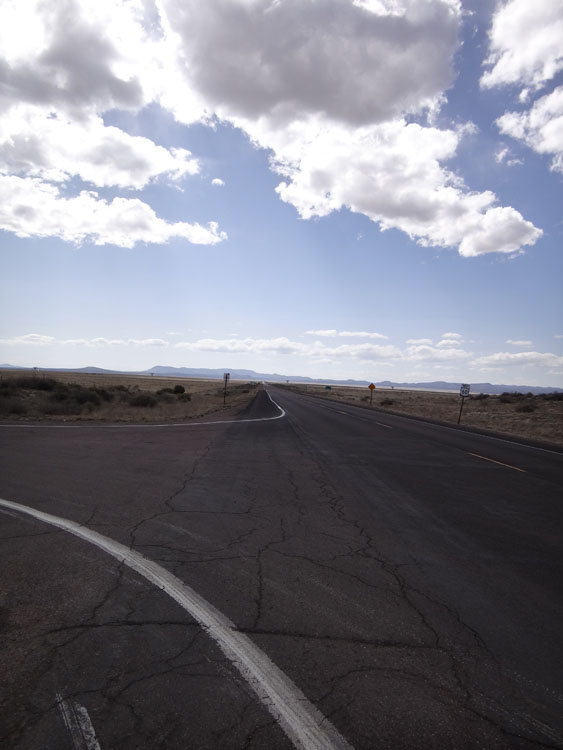
Improved re-takes of a picture I took in 1995:
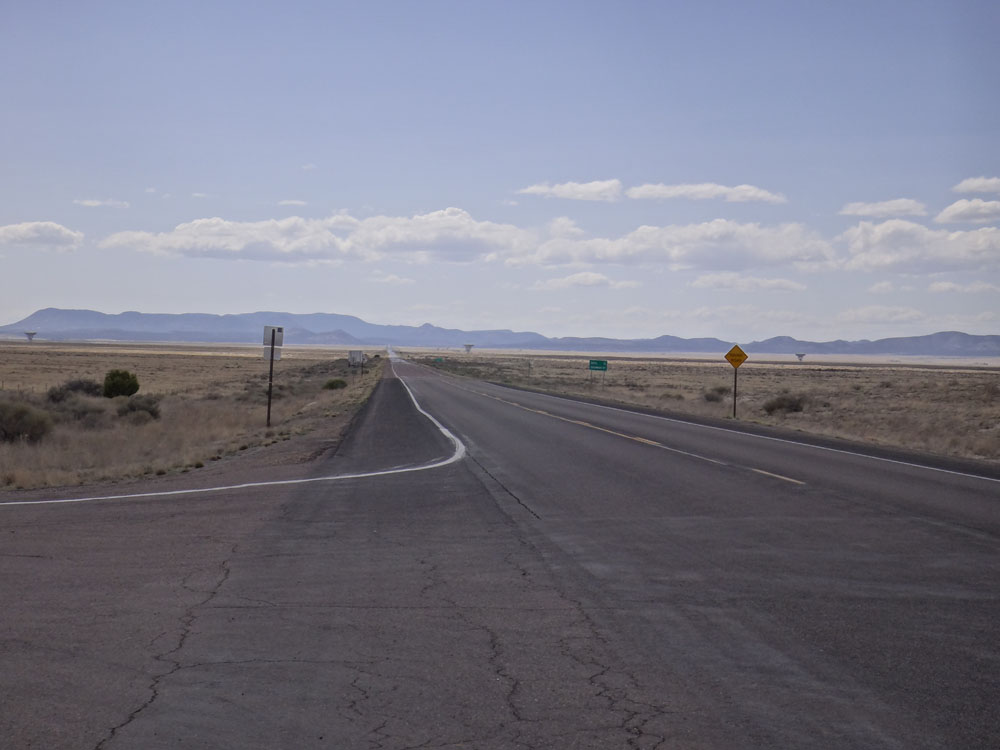

Going back to Socorro:
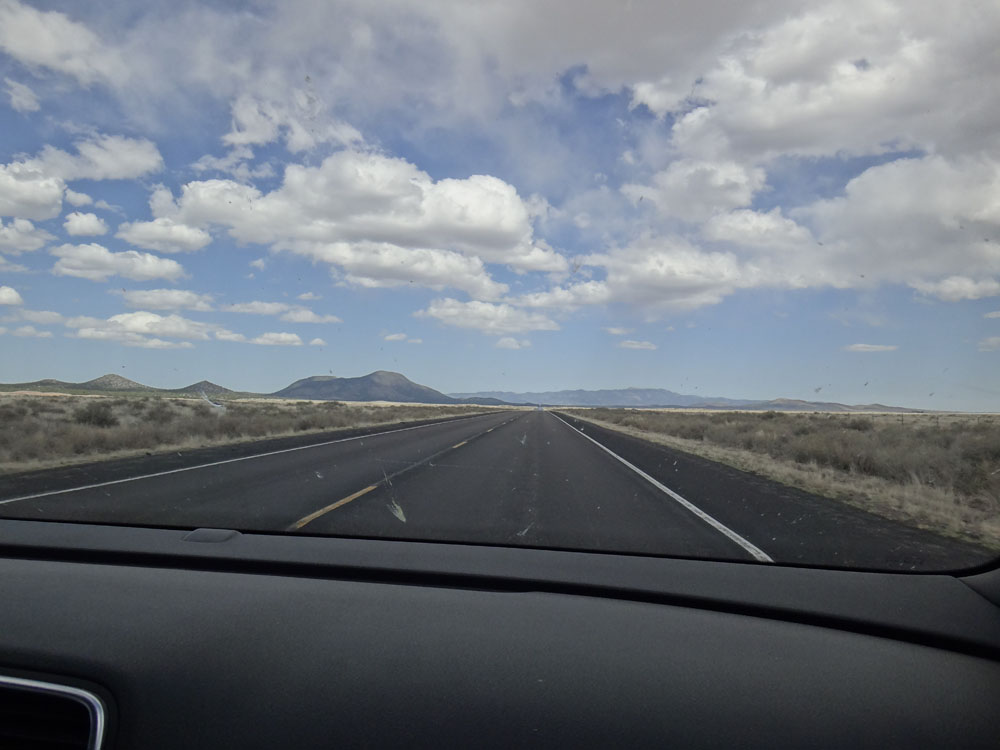
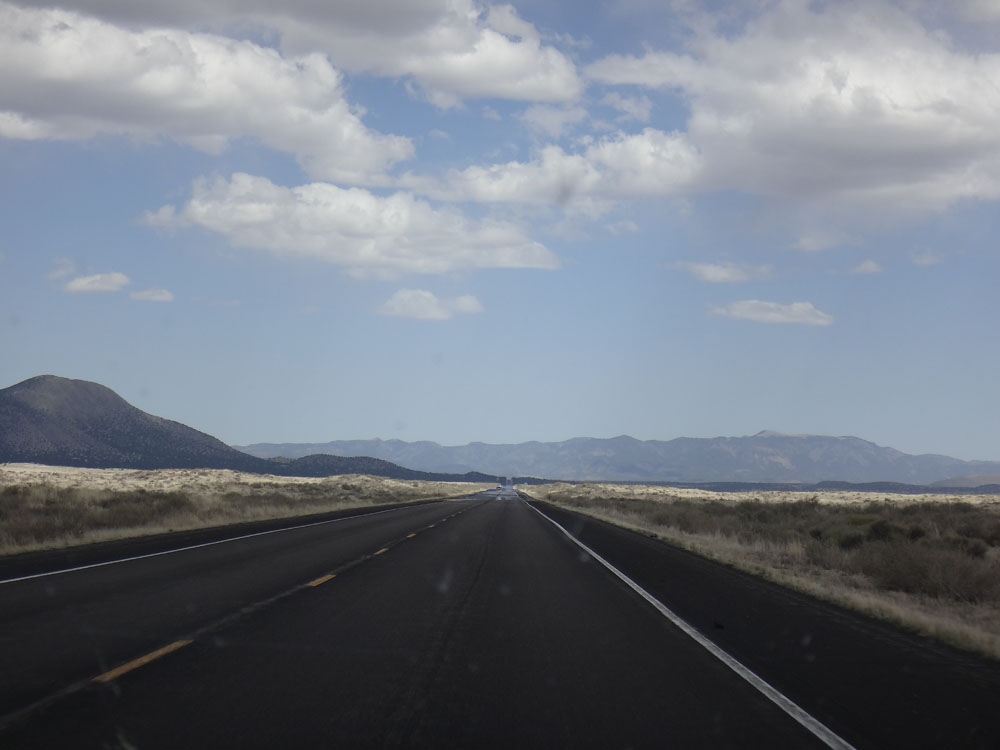
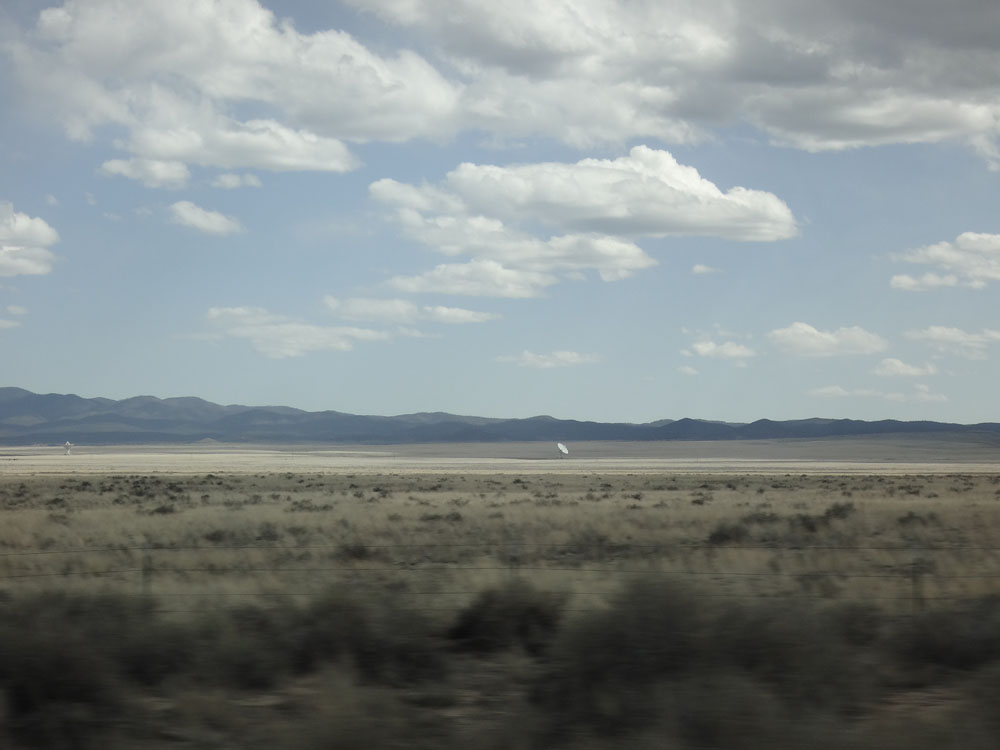

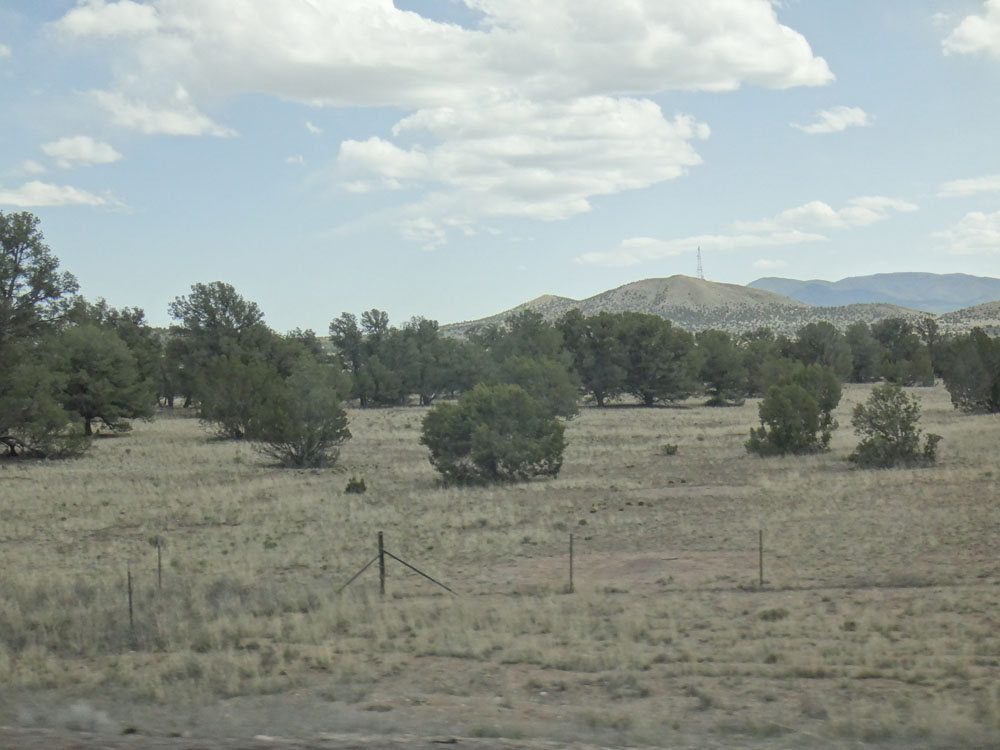
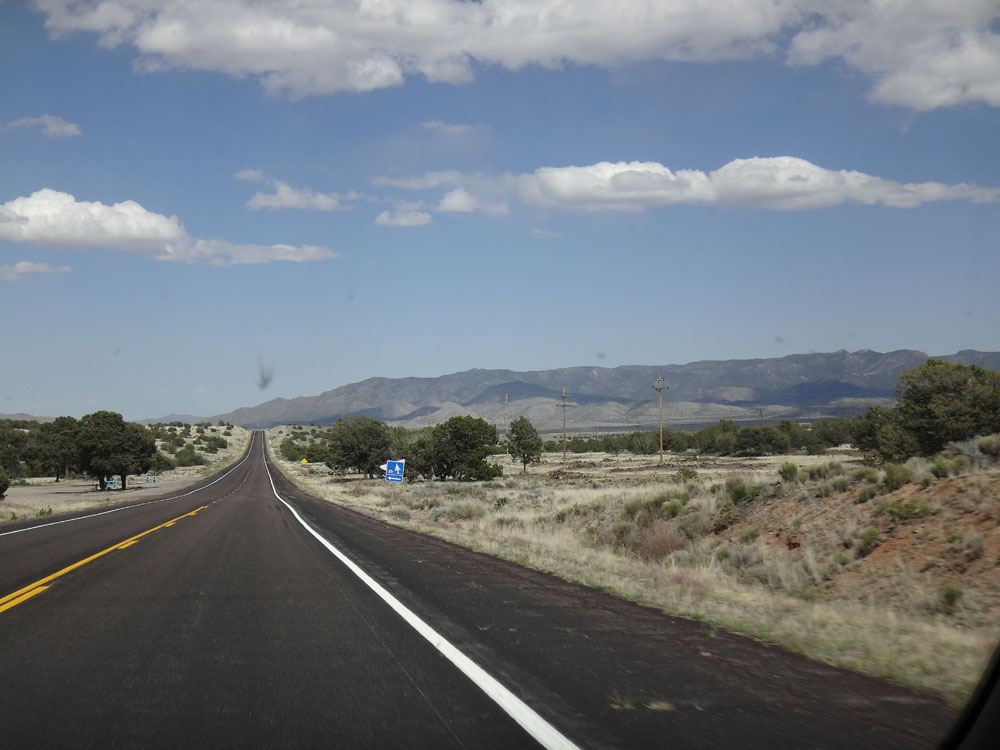
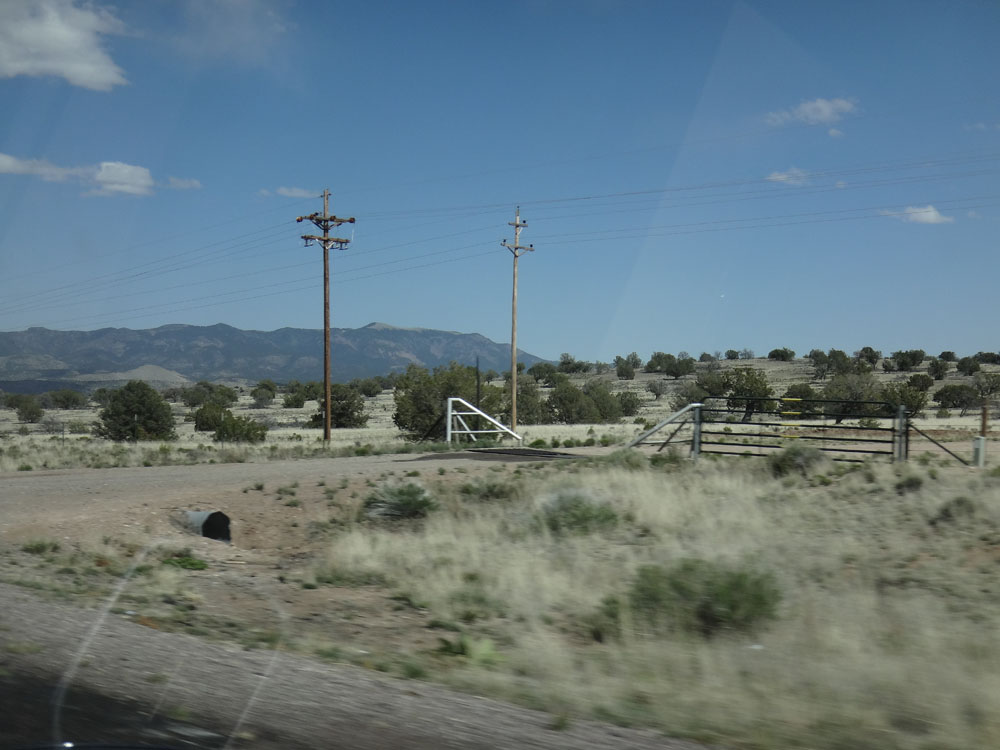
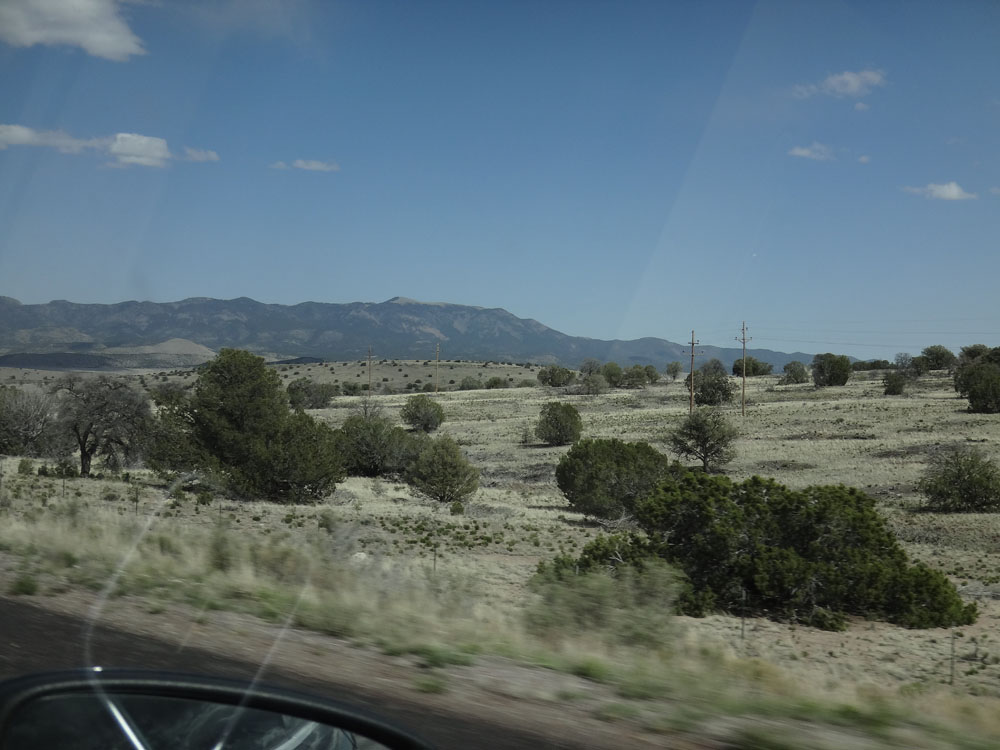
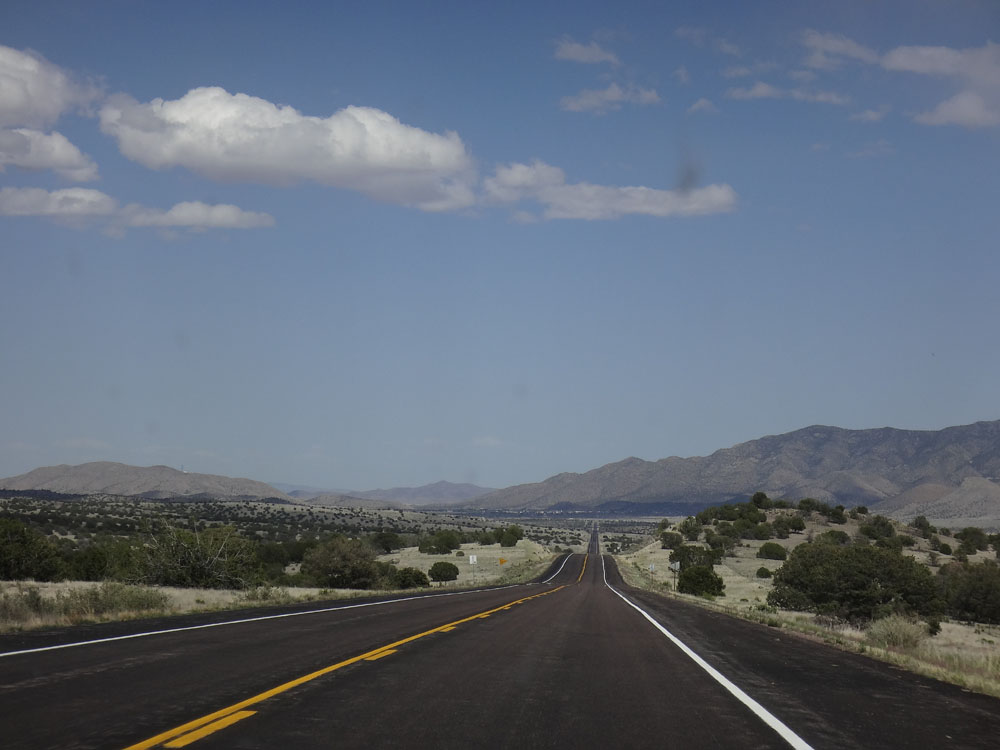
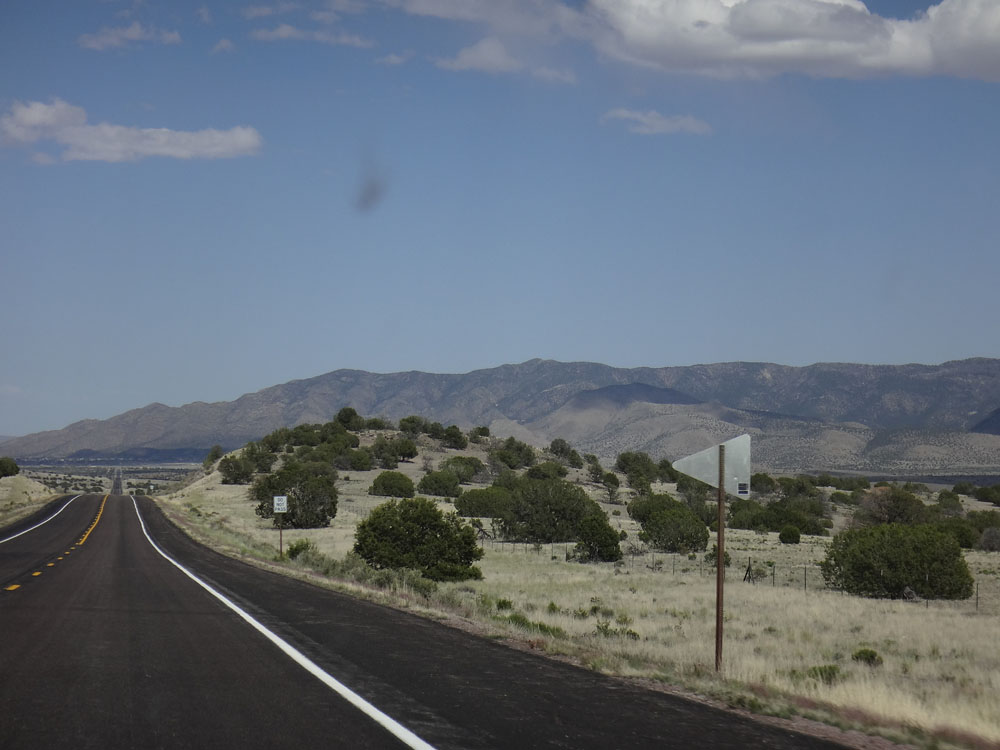
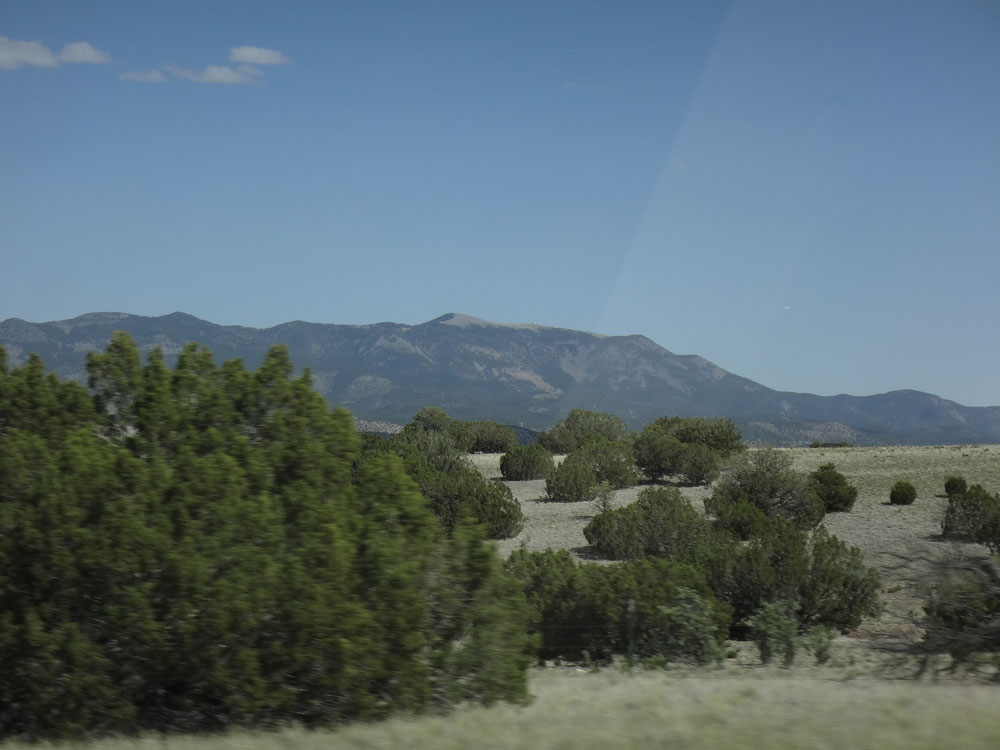
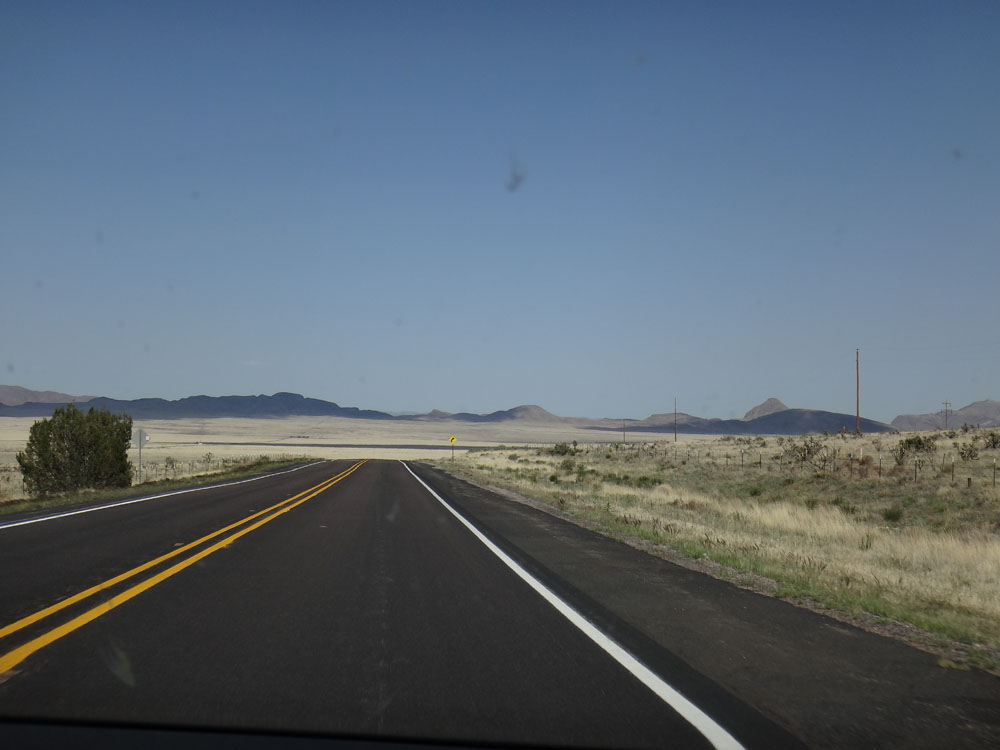
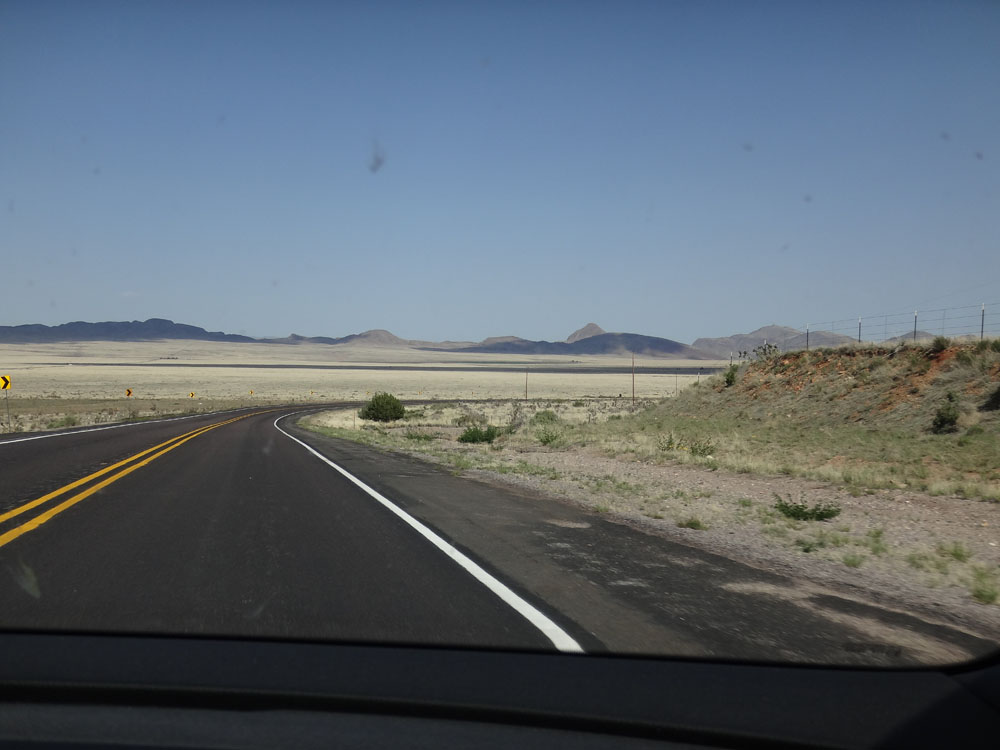
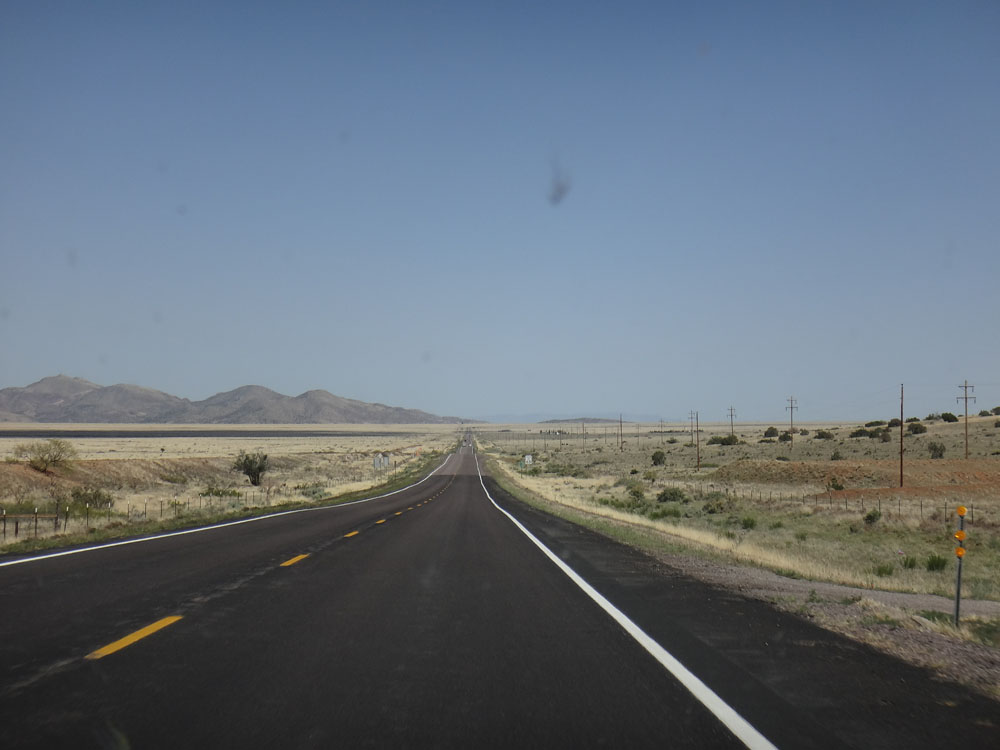
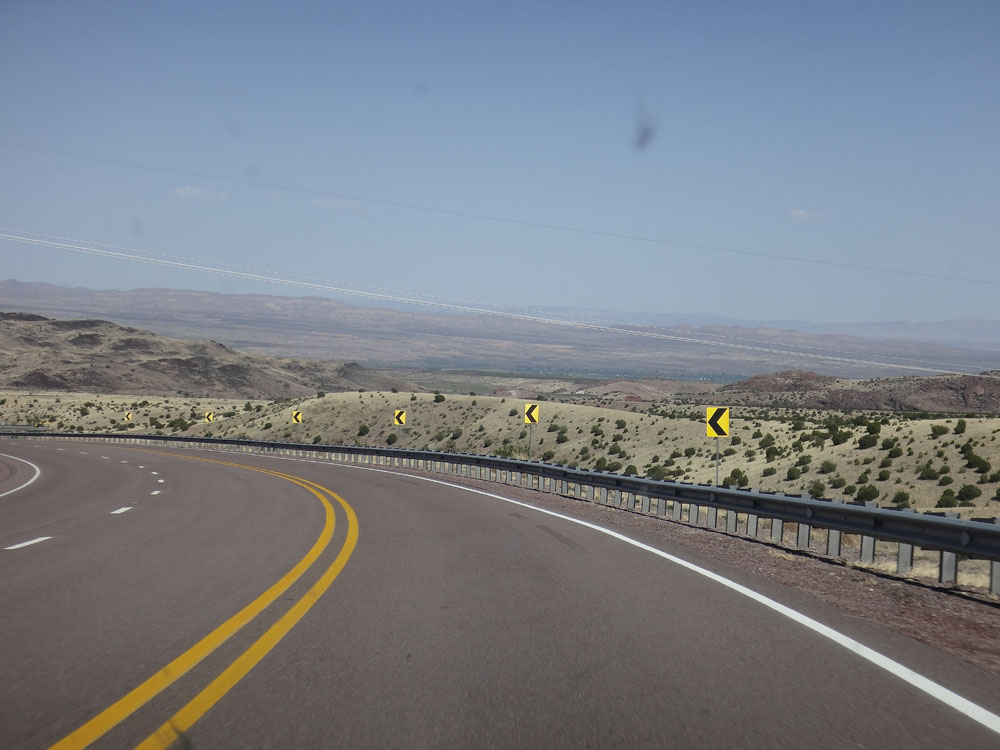

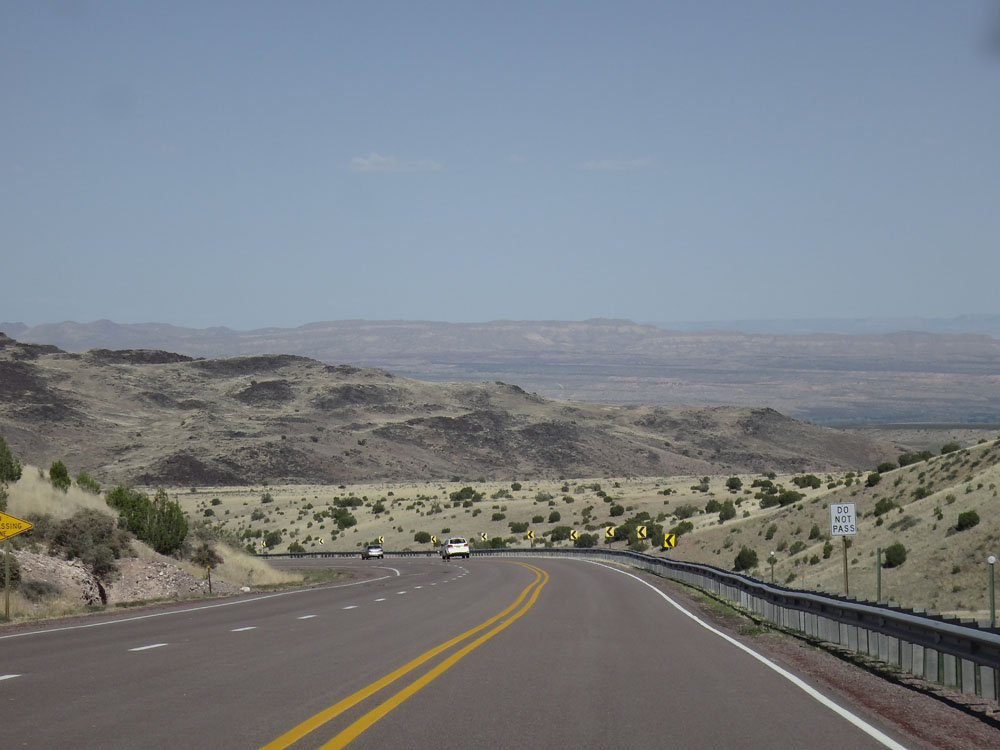
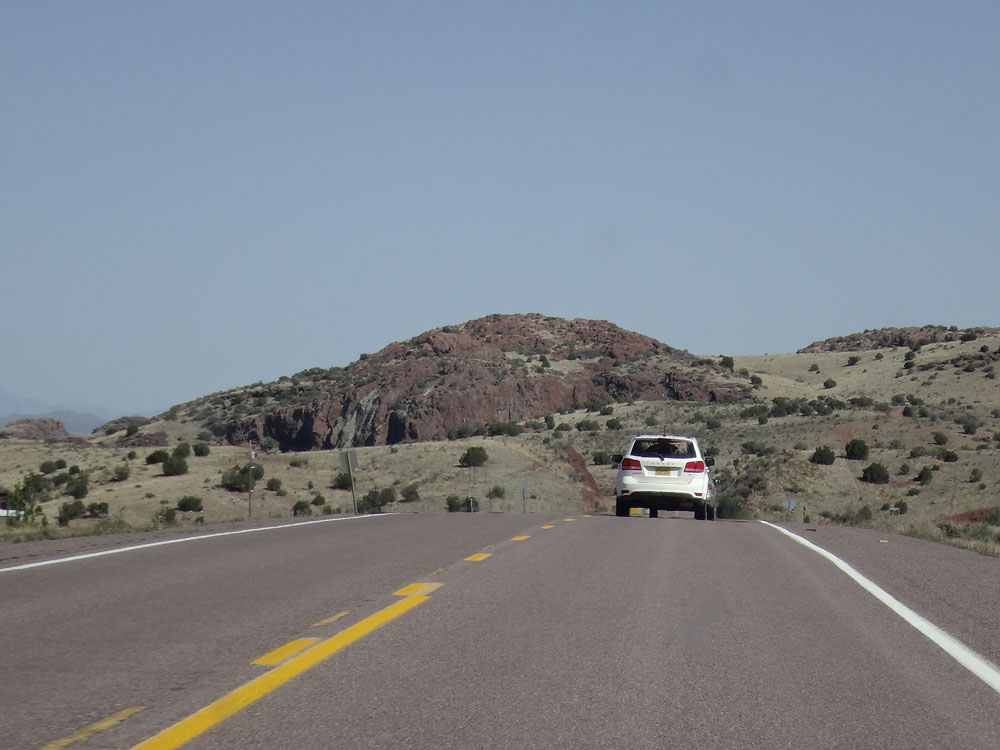
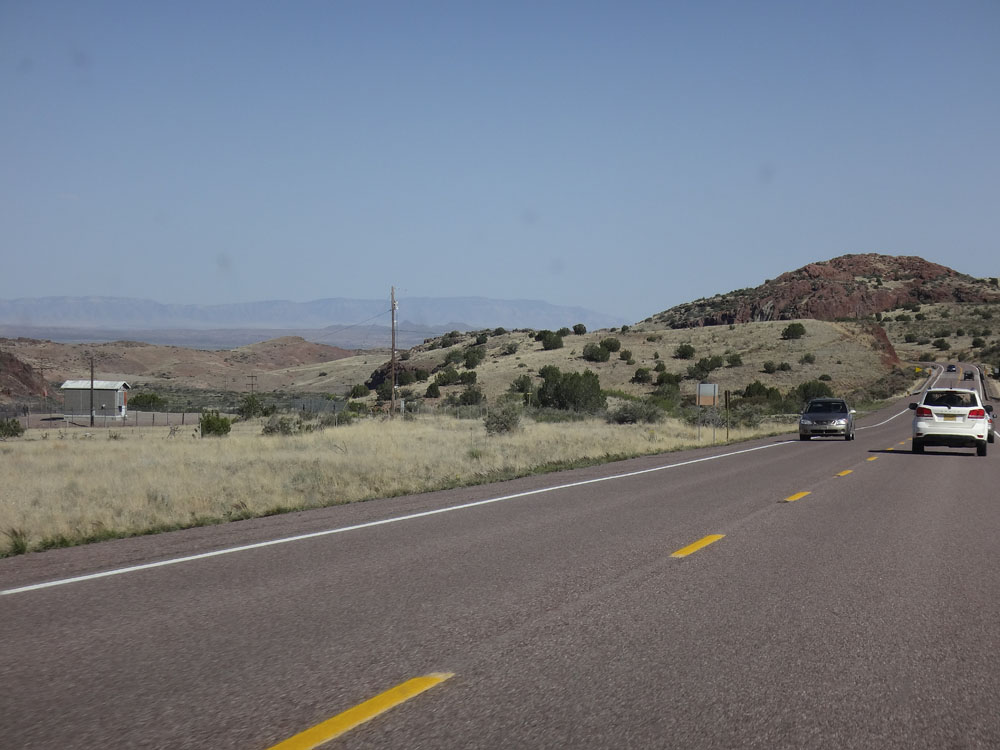
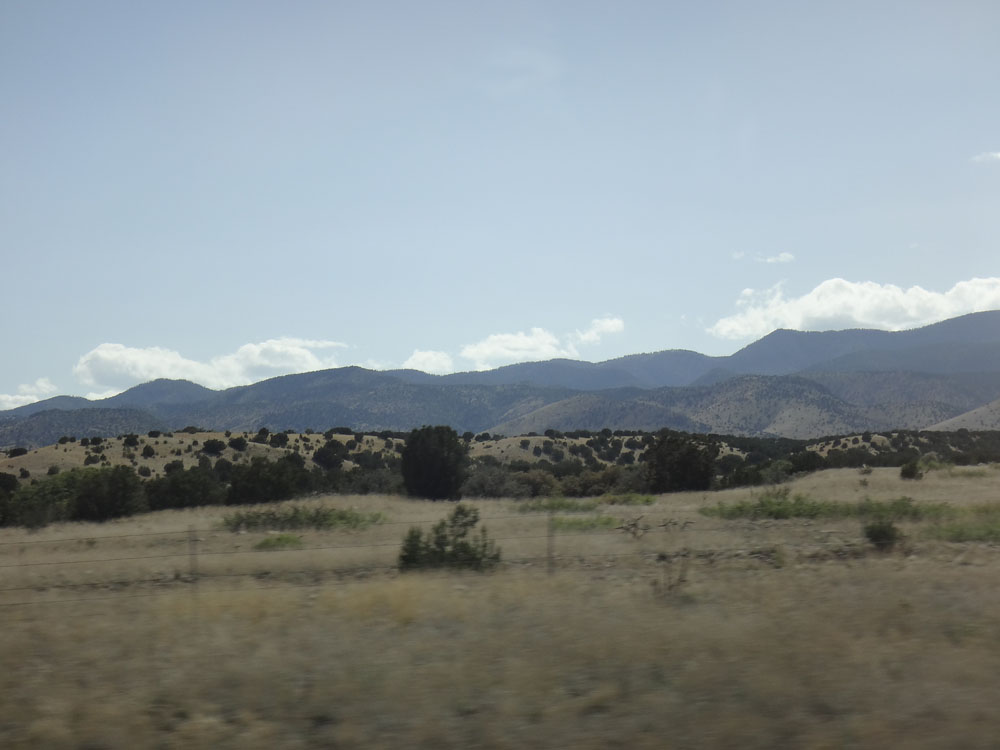
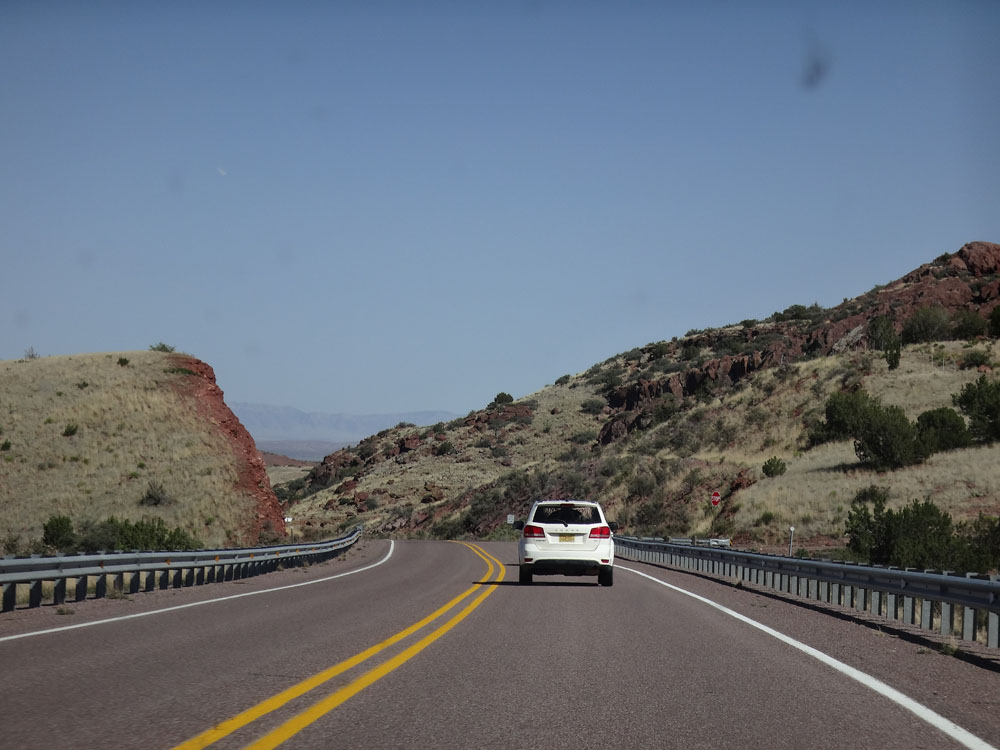
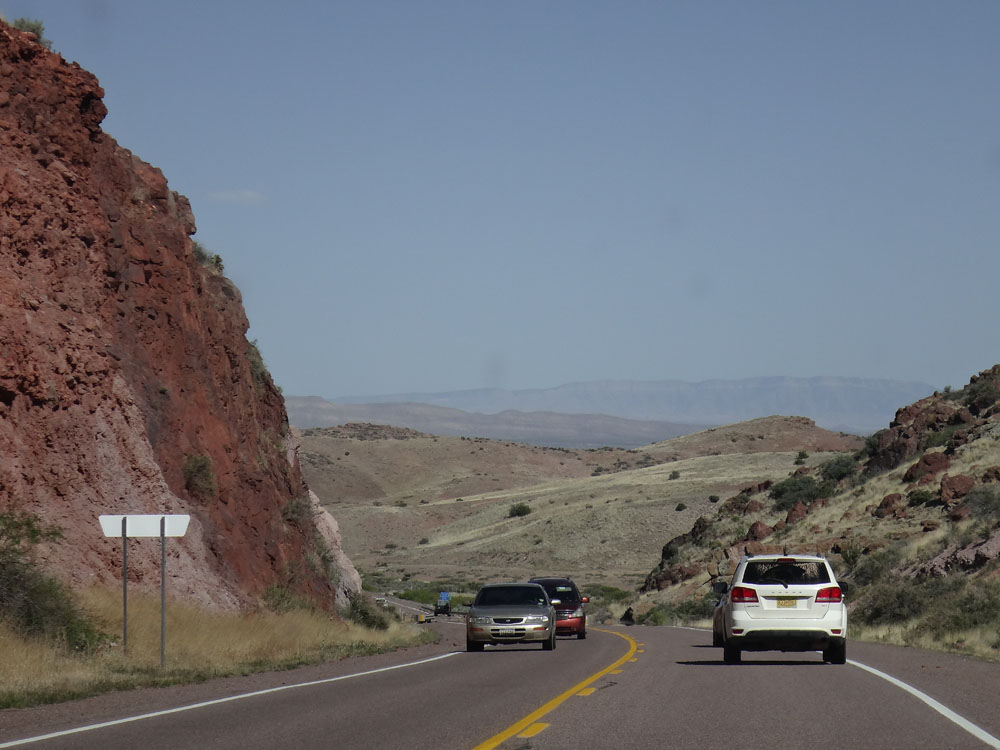

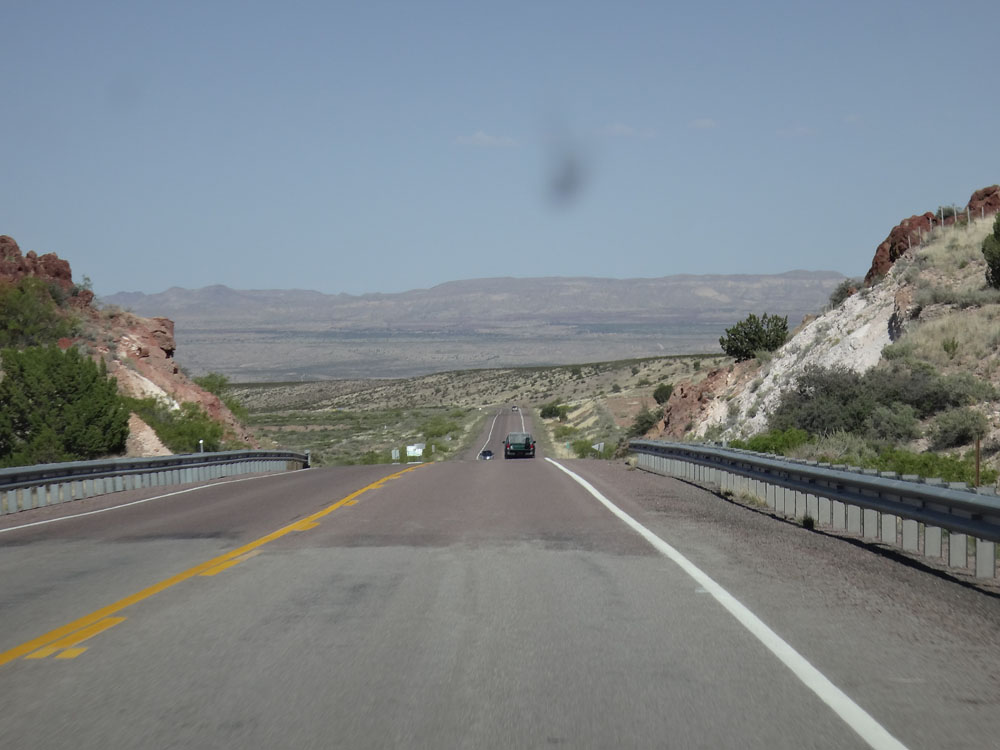
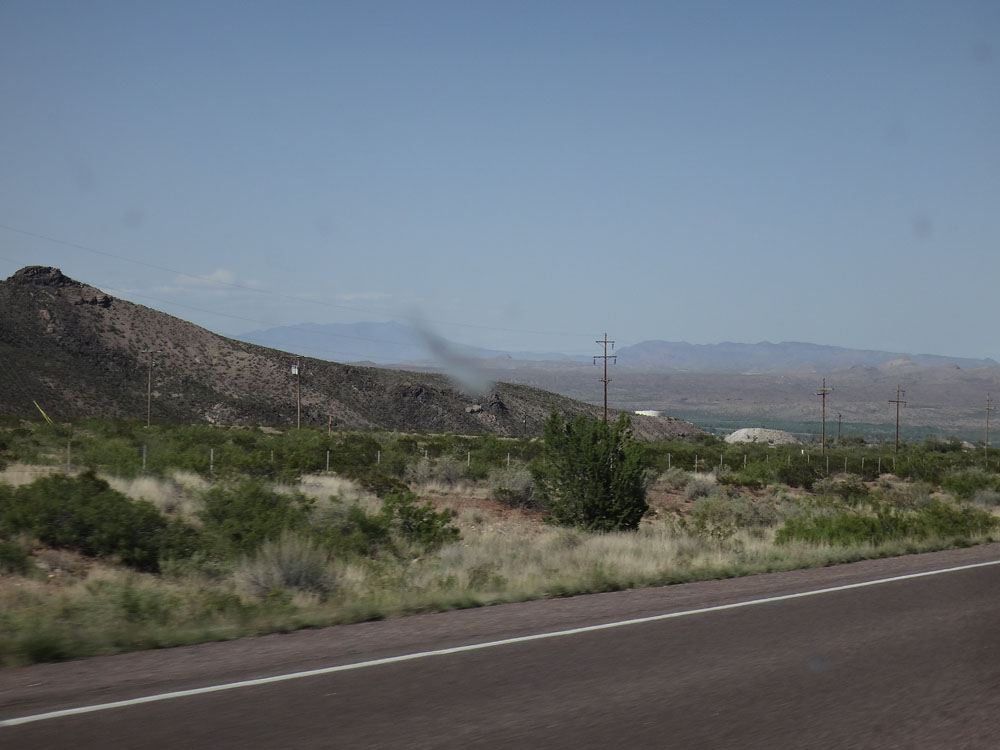
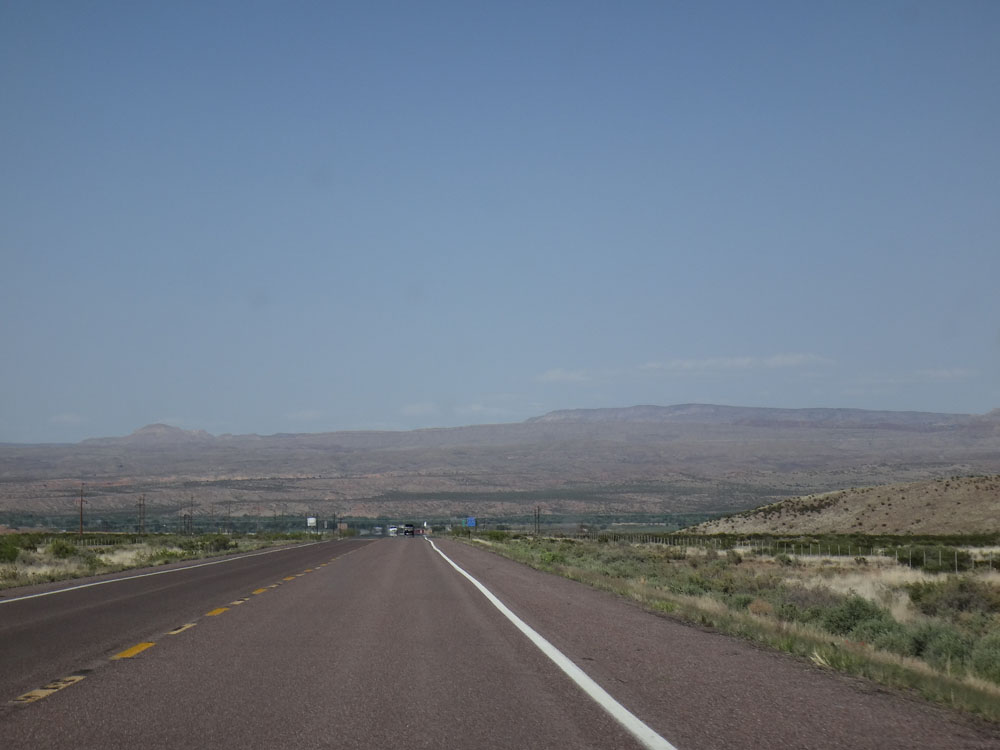
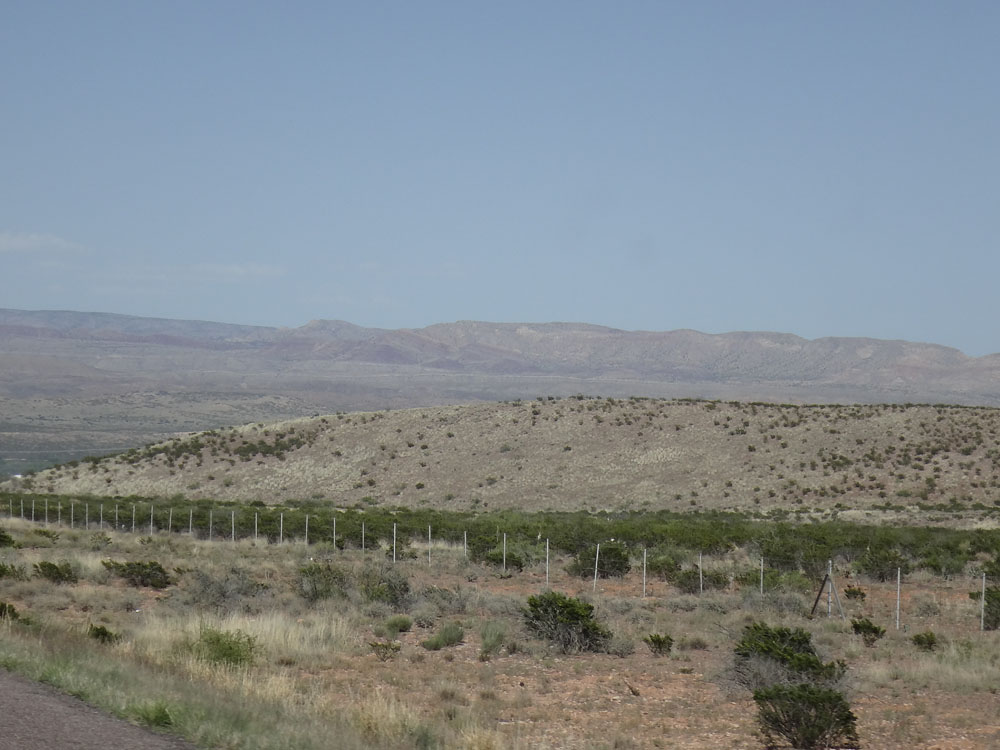
The Best Western in Socorro, New Mexico:
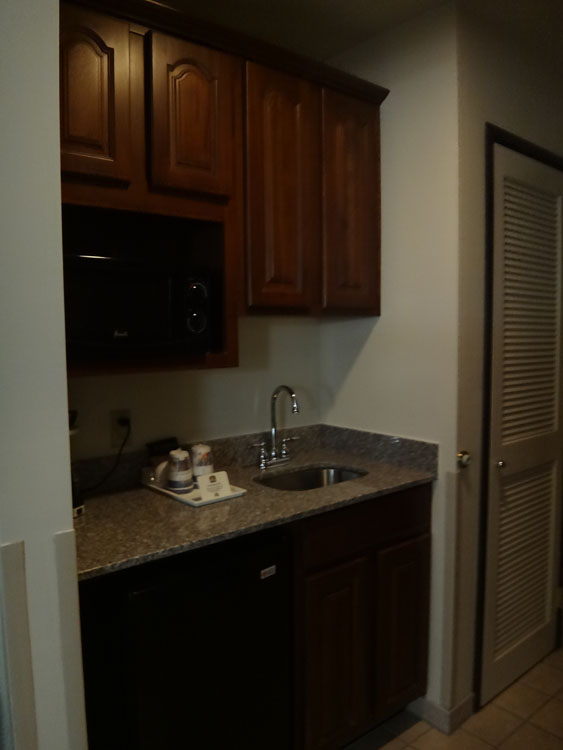
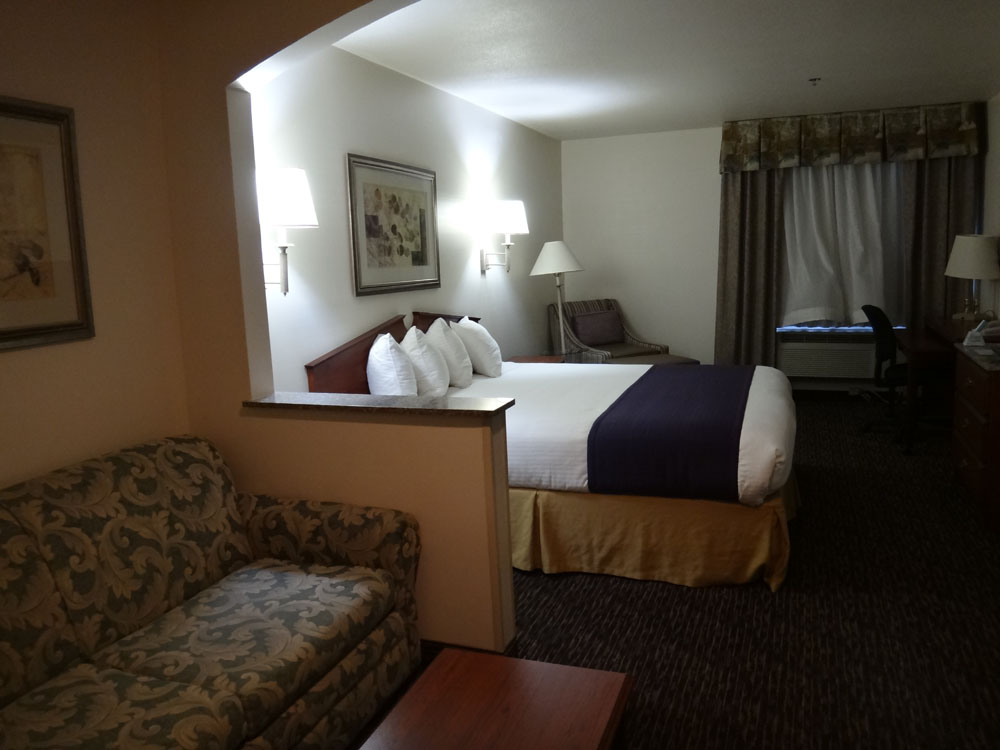
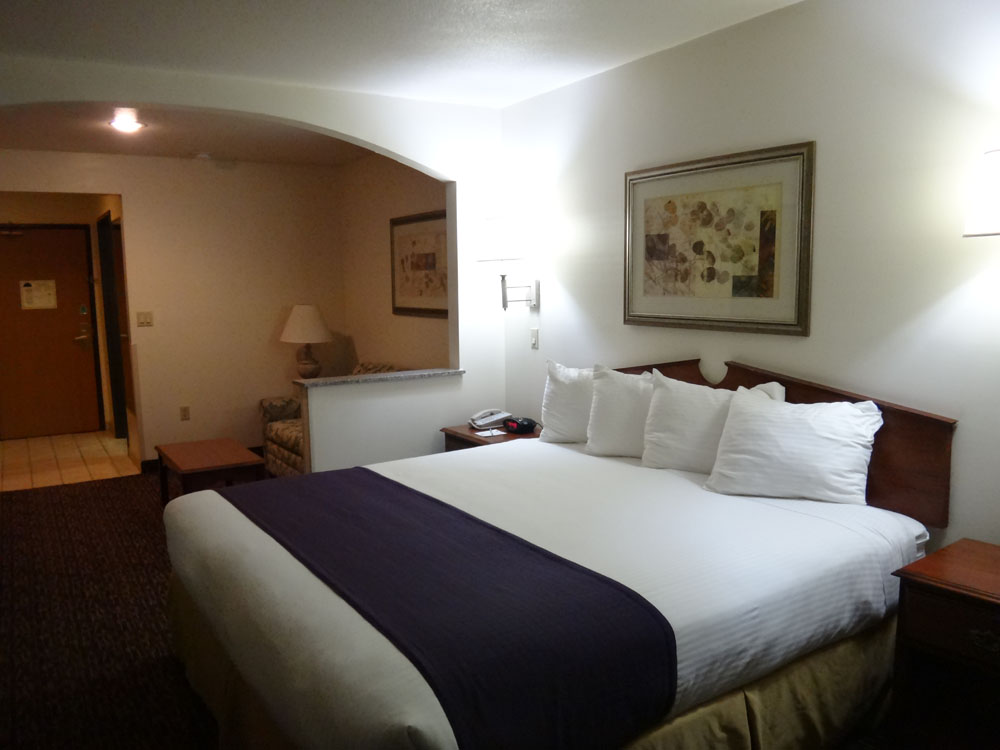
A surprise visitor! (centipede):
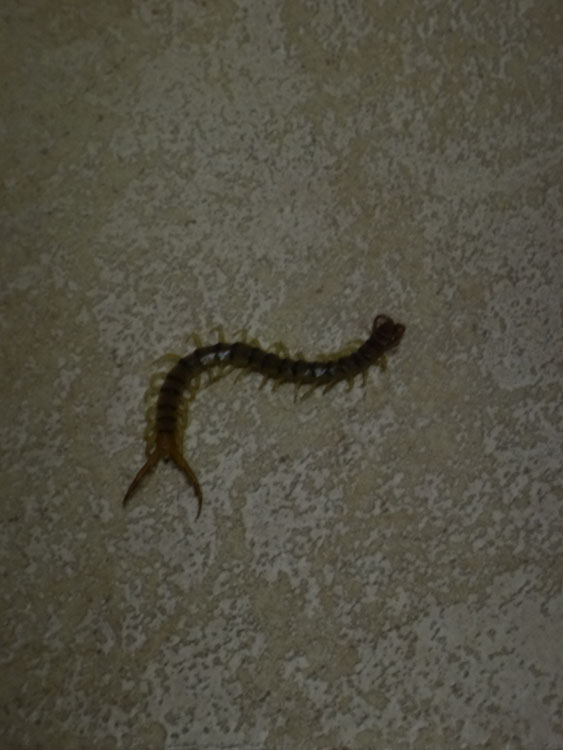
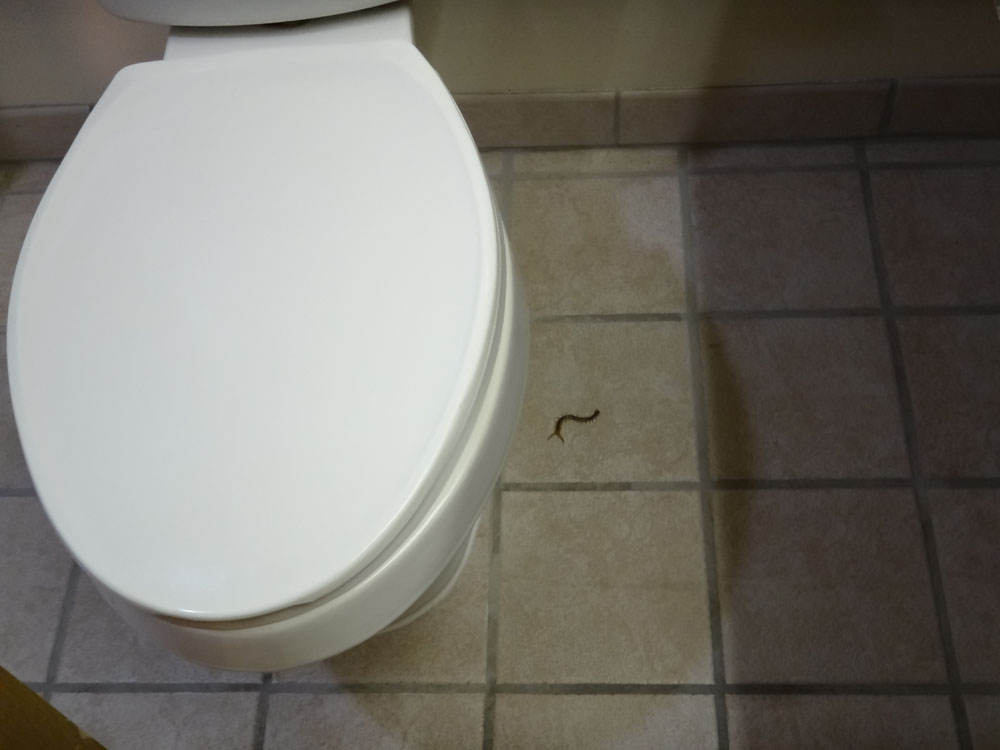
Return to the 2015 New Mexico Overview Page
Last updated 19Jun2015





















































































































